Chuliang Song
Assistant Professor
email: chuliang.song@ucla.edu
phone:
office:
website
Recent Courses
Research Interests
I am a theoretical and computational ecologist. My research program aims to forecast the dynamics of ecological systems under unforeseen environmental conditions, and under incomplete information about the entire system. To this end, my work centers on developing rigorous theory through interdisciplinary tools, devising monitoring-applicable metrics, and validating these approaches with empirical data from a broad range of ecosystems.
Selected Publications
Chuliang Song, Muyang Lu, Joseph R. Bennett, Benjamin Gilbert, Marie-Josée Fortin, Andrew Gonzalez (2023). Reconceptualizing beta diversity: a hypervolume geometric approach. BiorXiv.
Chuliang Song, Benno Simmons, Marie-Josée Fortin, Andrew Gonzalez, Christopher Kaiser-Bunbury, Serguei Saavedra (2023). Rapid monitoring of ecological persistence. Proceedings of the National Academy of Sciences.
Chuliang Song, Tadashi Fukami, Serguei Saavedra (2021). Untangling the complexity of priority effects in multispecies communities. Ecology Letters.

Stepfanie Aguillon
Assistant Professor
email: aguillon@ucla.edu
phone:
office: 110D Botany
website
Recent Courses
Research Interests
I am an evolutionary biologist and ornithologist with an interest in understanding how and why new species form in nature ("the speciation process"). My lab uses an interdisciplinary approach that integrates genomic sequencing techniques, field collections, museum specimens, and laboratory experiments. We leverage hybrid zones as natural experiments that test the boundaries between closely related species. Because hybridizing species are not yet completely reproductively isolated, they can help us uncover the mechanisms underlying the evolution of reproductive isolation and ultimately the process of speciation itself. Within my interest in the speciation process, I am also interested in the evolution of color and patterning in nature. Both can have important implications for survival and reproduction, and can be important early barriers in the speciation process. My lab focuses on uncovering the genetic basis of coloration differences between closely related species. The primary study systems in my lab are northern flickers (common woodpeckers distributed across North America) and live-bearing fish (Xiphophorus swordtails and Poecilia guppies).
Selected Publications
Aguillon, SM & AJ Shultz. 2023. Community-sourced sightings of atypical birds can be used to understand the evolution of plumage color and pattern. Ornithology. DOI: 10.1093/ornithology/ukad029 [link]
Aguillon, SM, TO Dodge, GA Preising, & M Schumer. 2022. Introgression. Current Biology DOI: 10.1016/j.cub.2022.07.004 [link]
Aguillon, SM & VG Rohwer. 2022. Revisiting a classic hybrid zone: Movement of the northern flicker hybrid zone in contemporary times. Evolution DOI: 10.1111/evo.14474 [link]
Aguillon, SM, J Walsh, & IJ Lovette. 2021. Extensive hybridization reveals multiple coloration genes underlying a complex plumage phenotype. Proceedings of the Royal Society B. DOI: 10.1098/rspb.2020.1805 [link]
Powell, DL, BM Moran, BY Kim, SM Banerjee, SM Aguillon, P Fascinetto‐Zago, QK Langdon, & M Schumer. 2021. Two new hybrid populations expand the swordtail hybridization model system. Evolution DOI: 10.1111/evo.14337 [link]
Aguillon, SM, G-F Siegmund, RH Petipas, AG Drake, S Cotner, & C. J. Ballen. 2020. Gender differences in student participation in an active-learning classroom. CBE—Life Sciences Education. DOI: 10.1187/cbe.19-03-0048 [link]
Mikles, CS, SM Aguillon, YL Chan, P Arcese, PM Benham, IJ Lovette, & J Walsh. 2020. Genomic differentiation and local adaptation on a microgeographic scale in a resident songbird. Molecular Ecology. DOI: 10.1111/mec.15647 [link]
Aguillon, SM, L Campagna, RG Harrison, & IJ Lovette. 2018. A flicker of hope: genomic data distinguish northern flicker taxa despite low levels of divergence. Auk. DOI: 10.1642/AUK-18-7.1 [link]
Aguillon, SM, JW Fitzpatrick, R Bowman, SJ Schoech, AG Clark, G Coop, & N Chen. 2017. Deconstructing isolation-by-distance: The genomic consequences of limited dispersal. PLoS Genetics. DOI: 10.1371/journal.pgen.1006911 [link]
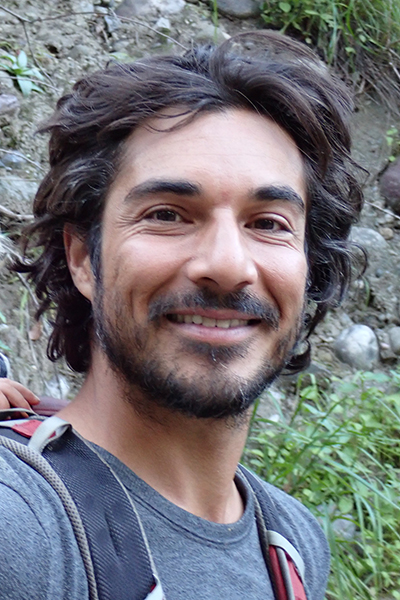
Anthony Baniaga
Adjunct Assistant Professor
email: abaniaga@ucla.edu
phone: 310-825-3620
office:
Recent Courses
Research Interests
Selected Publications
Robert Eagle Tripati
Assistant Professor
email: robeagle@g.ucla.edu
phone: 310-206-7428
office: 7154 Math Sciences
website
Recent Courses
Research Interests
Selected Publications
Tina Treude
Professor
email: ttreude@g.ucla.edu
phone: 310-267-5213
office: 5859 Slichter
website
Recent Courses
Research Interests
I find it sometimes hard to define my research area, because of my broad background and interests. I received my diploma in biological oceanography, physical oceanography, and zoology from the University of Kiel in Germany. In my diploma thesis I studied the community structure and energy budget of deep-sea scavengers, including fish, crabs, and amphipods.
It was not really until my PhD thesis that I developed great interest in marine microbiology and biogeochemical processes. At the Max Planck Institute for Marine Microbiology I studied the anaerobic oxidation of methane (AOM) in sediments and graduated with a PhD in Biogeochemistry. It was an exciting time to do research on AOM (and still is), because my advisor Antje Boetius had just discovered the organisms that are responsible for this process in the year I started my PhD.
Methane has since then been one of my pet subjects and I am very broadly interested in all metabolic processes that are involved in the production and consumption of methane. Methane is an interesting molecule – it is the end product of organic matter degradation, the simplest organic compound, an energy source for microbes and humans, and a strong greenhouse gas.
Since a couple of years my new research has focused on marine oxygen minimum zones and coastal hypoxia. Scientists agree that the oceans are losing oxygen due to warming and eutrophication, but we are still far from understanding how these low oxygen environments function. My research aims at deciphering biogeochemical cycles in oxygen minimum zones (including nitrogen, iron and sulfur cycling) and to provide a baseline for predictions of future developments under climate change.
Aside from these two major research areas my group has studied a broad range of marine geomicrobiological processes, including petroleum degradation, plastic alteration, biogeochemial processes at whale falls, deep-biosphere metabolisms, and microbial precipitation and alteration of carbonates.
In general one could say that my research aims at answering the following ecological core questions:
– Which organisms live in an ecosystem and what are they doing?
– What are the physical and geochemical characteristics that makes an environment attractive for certain organisms?
– What impact do organisms have on their ecosystem?
– How could changes in the ecosystem affect its organisms?
In my lab we use a couple of standard methods to explore marine ecosystems and geomicrobiological processes:
(1) quantification of microbial turnover rates (e.g. methanogenesis, methane oxidation, sulfate reduction, nitrogen fixation) with radiotracer incubations and in-vitro experiments
(2) geochemical porewater analyses (titration, ion chromatography, spectrophotometry)
(3) high-resolution measurements of geochemical profiles with micro-electrodes
(4) gas chromatography
(5) molecular methods (CARD-FISH and epifluorescence microscopy)
We collaborate with many other labs to expand our methodology, depending on the research questions we ask.
I consider myself lucky that my research requires field work, which has taken me around the world on many research vessels. I spend over two years on the ocean, been in submersibles to dive into the deep sea and saw environments with my own eyes that few have seen before. The ocean is a fascinating place and there is still so much to discover.
UCLA Marine Center
Since May 2016 I am the Director of the Marine Center at UCLA’s Institute of the Environment and Sustainability (IoES). I made it my goal to bring together marine sciences and facilitate exchange between different marine disciplines on campus. The Marine Center has dedicated its research to understand the breadth of human impacts on the oceans.
Selected Publications
Benjamin Knowles
Assistant Adjunct Professor
email: bwknowles@ucla.edu
phone:
office: 1013G Terasaki Life Sciences Building (TLSB)
website
Recent Courses
Research Interests
Viral infection of microbes is probably the most common ecological interaction on the planet. However, it is unknown what fraction of infections are rapidly lethal or establish long-term virus-host symbioses because viruses can act as lytic predators or temperate parasites. Viruses sculpt the evolution, composition, structure, and vital rates of host communities from molecular to global scales and affect ecosystem processes like biogeochemical cycling, productivity, and food webs. While most viral ecologists have focused on these phenomena as an outcome of density-dependent lethal lytic infection, my PhD and post-doctoral research shows that these ecosystem processes are more likely to the outcome of physiology-dependent long-term temperate infections. This changes – even upends – the narrative of virus-host interactions from being deterministic and easily measured as host and viral densities to a much more challenging and long-term one centered around host physiology. Importantly, this mechanistic shift also means that accepted outcomes of infection like how and why energy and matter flow through ecosystems must be revised from cellular to global scales.
Selected Publications
Knowles B, Bonachela JA, Behrenfeld MJ, Bondoc KG, Cael BB, Carlson CA, Cieslik N*, Diaz BP, Fuchs HL, Graff JR, Grasis J, Halsey H, Haramaty L, Johns CT, Natale F, Nissimov JI, Schieler B, Thamatrakoln K, Thingstad TF, Våge S, Watkins C, Westberry T, and KD Bidle., "Temperate infection in a virus-host system previously known for virulent dynamics", Nature Communications, 11 (4626): 1-13 (2022) .
Boling L, Cuevas DA, Kang HS, Knowles B, Maughan H, McNair K, Rojas MI, Sanchez SE, Smurthwaite C, and F Rohwer., "Dietary anti-microbials and prophage inducers – towards landscaping of the human gut microbiome", Gut Microbes, 11 (4626): - (2020) [link].
Nissimov JI, Talmy D, Haramaty L, Fredricks H, Zelzion E, Knowles B, Eren M, Vandzura R, Laber C, Schieler B, Johns C, More KD, Coolen MJL, Follows MJ, Bhattacharya D, Van Mooy BAS, and K.D. Bidle., "Biochemical diversity of glycosphingolipid biosynthesis as a driver of Coccolithovirus competitive ecology", Environmental Microbiology, 21 (6): 2182-2197 (2019) .
Thamatrakoln K, Talmy D, Haramaty L, Maniscalco C, Latham J, Knowles B, Natale N, Coolen MJL, Follows MJ, and KD Bidle., "Light regulation of coccolithophore host-virus interactions", New Phycologist, 21 (6): - (2018) [link].
Roach T, Abieri M, George E, Knowles B, Smurthwaite C, Haas A, and F Rohwer., "Microbial bioenergetics of coral-algal interactions", PeerJ, 5 : e3423- (2017) .
Knowles B and F Rohwer., "Reply to Brief Communication Arising: Lysis, lysogeny, and virus-microbe ratios", Nature, 549 : E3-E4 (2017) .
Knowles B, Bailey B, Boling L, Breitbart M, Cobián-Güemes A, del Campo J, Edwards R, Felts B, Grasis J, Haas AF, Katira P, Wegley Kelly L, Luque A, Nulton J, Paul L, Peters G, Robinett N, Sandin S, Segall A, Silveira C, Youle M, and F Rohwer., "Variability and host density independence in inductions-based estimates of environmental lysogeny", Nature Microbiology, 2 : 17064- (2017) .
Haas A, Fairoz M, Kelly LW, Nelson C, Dinsdale E, Edwards R, Giles S, Hatay M, Hisakawa N, Knowles B, Lim YW, Maughan H, Pantos O, Roach T, Sanchez S, Silveira C, Sandin S, Smith J, and F Rohwer., "Global microbialization of coral reefs", Nature Microbiology, 1 : 16042- (2016) .
Knowles B, Silveira C, Bailey B, Barott K, Cantu V, Cobián-Güemes A, Coutinho F, Dinsdale E, Felts B, Furby K, George E, Green K*, Gregoracci G, Haas A, Haggerty J, Hester E, Hisakawa N, Kelly LW, Lim YW, Little M, Luque A, McDole-Somera T, McNair K, de Oliveira L, Quistad S, Robinett N, Sala E, Salamon P, Sanchez S, Sandin S, Silva G, Smith J, Sullivan C, Thompson C, Vermeij M, Youle M, Young C, Zgliczynski B, Brainard R, Edwards R, Nulton J, Thompson F, and F Rohwer., "Lytic to temperate switching of viral communities", Nature, 531 : 466-470 (2016) .
Roitman S, Flores-Uribe J, Philosof A, Knowles B, Rohwer F, Ignacio-Espinoza J, Sullivan M, Acinas S, Cornejo-Castillo F, Sánchez P, Dupont C, and O Beja., "Closing the gaps on the viral photosystem photosystem-I psaDCAB gene organization", Environmental Microbiology, 531 : - (2015) [link].

Samuel Goodnow Wildman
email:
phone:
office:
Recent Courses
Research Interests
Selected Publications
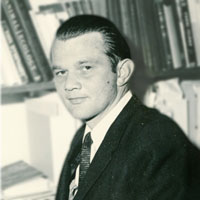
Vladimir Walters Vladimir Walters
email:
phone:
office:
Recent Courses
Research Interests
Selected Publications
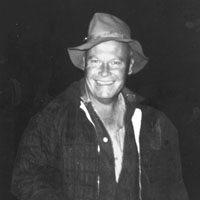
Boyd W. Walker
email:
phone:
office:
Recent Courses
Research Interests
Selected Publications
Vernon Theodore Stoutemyer
email:
phone:
office:
Recent Courses
Research Interests
Selected Publications

Olenus Lee Sponsler
email:
phone:
office:
Recent Courses
Research Interests
Selected Publications

Fritiof Sjostrand
email:
phone:
office:
Recent Courses
Research Interests
Selected Publications
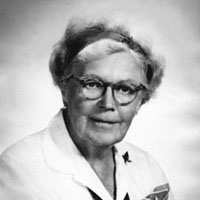
Flora Murray Scott
email:
phone:
office:
Recent Courses
Research Interests
Selected Publications

Charles Arthur Schroeder
email:
phone:
office:
Recent Courses
Research Interests
Selected Publications

Otto Scherbaum
email:
phone:
office:
Recent Courses
Research Interests
Selected Publications

Abraham Mandel Schechtman
email:
phone:
office:
Recent Courses
Research Interests
Selected Publications

Bernard O. Phinney
email:
phone:
office:
Recent Courses
Research Interests
Selected Publications
Frank Elmer Peabody
email:
phone:
office:
Recent Courses
Research Interests
Selected Publications
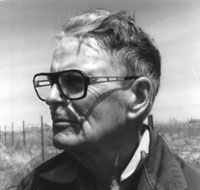
Everett Claire Olson
email:
phone:
office:
Recent Courses
Research Interests
Selected Publications
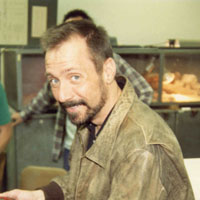
Bryan Steven Obst
email:
phone:
office:
Recent Courses
Research Interests
Selected Publications
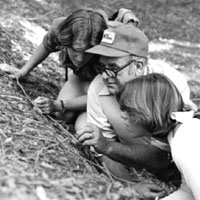
Kenneth S. Norris
email:
phone:
office:
Recent Courses
Research Interests
Selected Publications
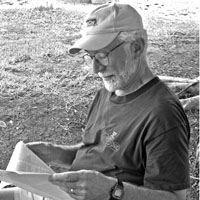
Leonard Muscatine
email:
phone:
office:
Recent Courses
Research Interests
Selected Publications
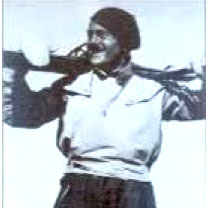
Walter Mosauer
email:
phone:
office:
Recent Courses
Research Interests
Selected Publications
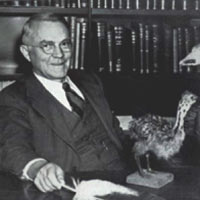
Loye Holmes Miller
email:
phone:
office:
Recent Courses
Research Interests
Selected Publications
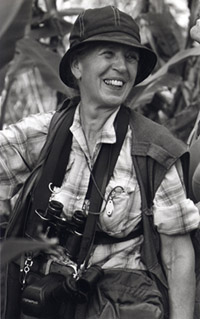
Mildred E. Mathias
email:
phone:
office:
Recent Courses
Research Interests
Selected Publications

Owen Raynal Lunt
email:
phone:
office:
Recent Courses
Research Interests
Selected Publications
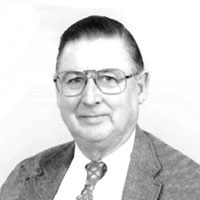
F. (Frank) Harlan Lewis
email:
phone:
office:
Recent Courses
Research Interests
Selected Publications
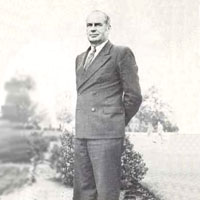
Edgar Locke Lazier
email:
phone:
office:
Recent Courses
Research Interests
Selected Publications

Anton Lang
email:
phone:
office:
Recent Courses
Research Interests
Selected Publications

Boris Krichesky
email:
phone:
office:
Recent Courses
Research Interests
Selected Publications
Arthur Mourad Johnson
email:
phone:
office:
Recent Courses
Research Interests
Selected Publications
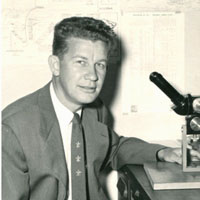
Thomas William James
email:
phone:
office:
Recent Courses
Research Interests
Selected Publications

Theodore Louis Jahn
email:
phone:
office:
Recent Courses
Research Interests
Selected Publications

Thomas Raymond Howell
email:
phone:
office:
Recent Courses
Research Interests
Selected Publications
Arthur Wing Haupt
email:
phone:
office:
Recent Courses
Research Interests
Selected Publications
Karl Clemens Hamner
email:
phone:
office:
Recent Courses
Research Interests
Selected Publications
Waldo Hamlet Furgason
email:
phone:
office:
Recent Courses
Research Interests
Selected Publications
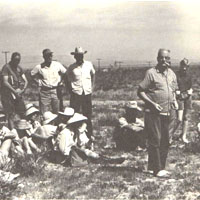
Carl Clawson Epling
email:
phone:
office:
Recent Courses
Research Interests
Selected Publications
Eric Berry Edney
email:
phone:
office:
Recent Courses
Research Interests
Selected Publications
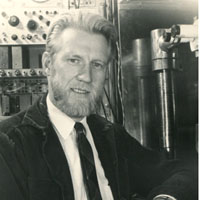
Roger O. Eckert
email:
phone:
office:
Recent Courses
Research Interests
Selected Publications

Wilbur T. Ebersold
email:
phone:
office:
Recent Courses
Research Interests
Selected Publications
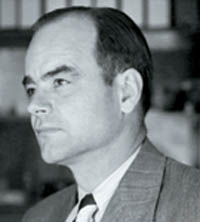
Walter Ebeling
email:
phone:
office:
Recent Courses
Research Interests
Selected Publications
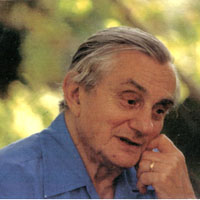
Frederick Crescitelli
email:
phone:
office:
Recent Courses
Research Interests
Selected Publications
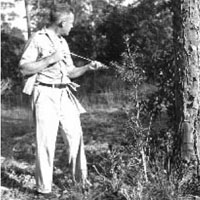
Raymond Bridgman Cowles
email:
phone:
office:
Recent Courses
Research Interests
Selected Publications
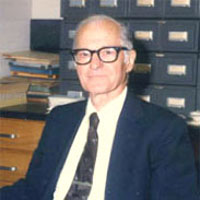
Nicholas Elias Collias
email:
phone:
office:
Recent Courses
Research Interests
Selected Publications

email:
phone:
office:
Recent Courses
Research Interests
Selected Publications
Albert M. Bellamy
email:
phone:
office:
Recent Courses
Research Interests
Selected Publications
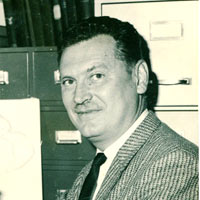
John Nicholas Belkin
email:
phone:
office:
Recent Courses
Research Interests
Selected Publications

Theodore Day Beckwith
email:
phone:
office:
Recent Courses
Research Interests
Selected Publications
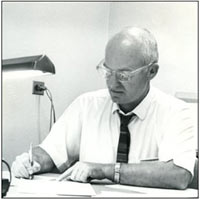
George Bartholomew
email:
phone:
office:
Recent Courses
Research Interests
Selected Publications

Gordon H. Ball
email:
phone:
office:
Recent Courses
Research Interests
Selected Publications
Sarah Rogers Atsatt
email:
phone:
office:
Recent Courses
Research Interests
Selected Publications

David Appleman
email:
phone:
office:
Recent Courses
Research Interests
Selected Publications
Bennet Mills Allen
email:
phone:
office:
Recent Courses
Research Interests
Selected Publications
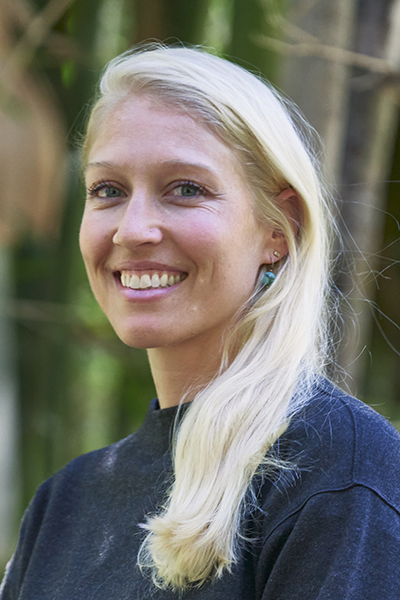
Elsa Ordway
Assistant Professor
email: elsaordway@ucla.edu
phone:
office: 410K Botany
website
Recent Courses
Research Interests
Elsa’s research group examines ecosystem ecology at the interface of field measurements, remote sensing, and modeling. We ask questions about forest ecosystem dynamics with an emphasis on exploring patterns of structure and function and the processes that underpin them, as well as interactions between climate change and land use change and forest ecological responses. We also explore dynamics of social-ecological systems with an emphasis on interactions between people and forest communities.
Selected Publications
Vinod N., Slot M.J., McGregor I., Ordway E.M., Smith M.N., Taylor T., Sack L., Anderson-Teixeira K.J. 2022. Thermal sensitivity across vertical profiles: patterns, mechanisms, and ecological implications. New Phytologist Tansley Review. DOI 10.1111/nph.18539
Ordway E.M., Elmore A.J., Kolstoe S., Quinn J.E., Swanwick R., Cattau M., Taillie D., Guinn, S.M., Chadwick K.D., Atkins J.W., Blake R.E., Chapman M., Cobourn K., Goulden T., Helmus M.R., Hondula K., Hritz C., Jensen J., Julian J.P., Kuwayama Y., Lulla V., O’Leary D., Nelson D.R., Ocón J.P., Pau S., Pau S., Ponce-Campos G.E., Portillo-Quintero C., Pricope N.G., Rivero R.G., Schneider L., Steele M., Tulbure M.G., Williamson M.A., Wilson C., (in review). Leveraging the NEON Airborne Observation Platform for interdisciplinary socio-environmental research. Ecosphere.
Ordway E.M., Asner G.P. 2020 Carbon declines along tropical forest edges correspond to heterogeneous effects on canopy structure and function. PNAS. DOI 10.1073/pnas.1914420117
Ordway E.M., Naylor R.L., Nkongho R.N., Lambin E.F. 2019. Oil palm expansion at the expense of forests in Southwest Cameroon associated with proliferation of informal mills. Nature Communications. DOI 10.1038/s41467-018-07915-2
Brando P.M., Paolucci L., Ummenhofer C.C., Ordway E.M., Hartmann H., Cattau M.E., Rattis L., Medjibe V., Coe M.T., Balch J. 2019. Droughts, wildfires, and forest carbon stocks: a pantropical synthesis. Annual Reviews. DOI 10.1146/annurev-earth-082517-010235
Ordway E.M., Naylor R.L., Nkongho R.N., Lambin E.F. 2017. Emerging oil palm expansion in Africa: insights into sustainability opportunities and challenges from Cameroon. Global Environmental Change. DOI 10.1016/j.gloenvcha.2017.10.009
Ordway E.M., Asner G.P., Lambin E.F. 2017. Deforestation risk due to commodity crop expansion in sub-Saharan Africa. Environmental Research Letters. DOI 10.1088/1748-9326/aa6509
Ordway E.M. 2015. Political Shifts and Changing Forests: The Implications of Warfare for Forest Conservation in Rwanda. Global Ecology and Conservation. DOI 10.1016/j.gecco.2015.01.013
Marlier M.E., DeFries R., Pennington D. Nelson E., Ordway E.M., Lewis J., Koplitz S.N., Mickley L.J. 2014. Future fire emissions associated with projected land use change in Sumatra. Global Change Biology. DOI 10.1111/gcb.12691

Rachel Kennison
Associate Teaching Professor
email: rkennison@ceils.ucla.edu
phone:
office: 228 Hershey Hall
website
Recent Courses
- Communicating Science to Informal Audiences
Research Interests
As the Executive Director of UCLA’s Center for Education, Innovation and Learning in the Sciences and Associate Teaching Professor in the Department of Ecology and Evolutionary Biology, I am engaged in research and development of courses, curriculum and initiatives to improve and transform undergraduate STEM education to be more inclusive and equitable by using evidence-based and antiracist practices. As the Institutional Administrative Co-Leader for UCLA’s Center for the Integration of Research. Teaching and Learning, a National network that provides certification in scientific teaching and professional development for graduate students and postdoctoral scholars, I oversee graduate level courses that support certification in Teaching-as-Research projects.
Selected Publications
Scaling Up a Life Science College Career Exploration Course to Foster STEM Confidence and Career Self-Efficacy
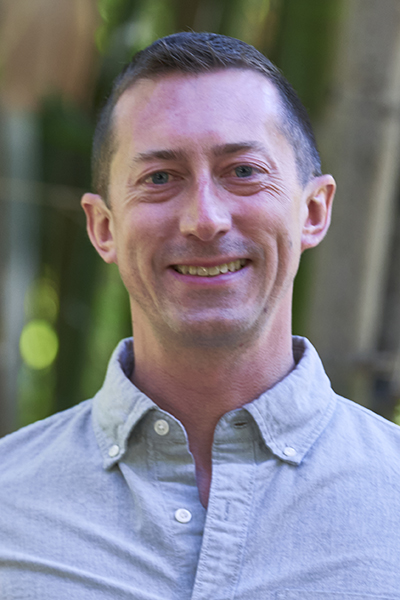
Morgan Tingley
Professor
email: mtingley@ucla.edu
phone: (310) 794-7834
office: 310L Botany
website
Recent Courses
Research Interests
My research combines original data collected in the field with biodiversity informatics ('big data') and novel quantitative modeling techniques to understand critical ecological questions about organisms. I am most interested in how large-scale anthropogenic drivers of change (e.g., climate change, invasive species, land-use change, fire regimes) affect geographic distributions and community interactions over short (years) to long (centuries) timespans.
Selected Publications
Tonelli, B.A., Youngflesh, C., and Tingley, M.W. (2023). Geomagnetic disturbance associated with increased vagrancy in migratory landbirds. Scientific Reports 13, 414.
Neate‐Clegg, M.H.C., and Tingley, M.W. (2023). Adult male birds advance spring migratory phenology faster than females and juveniles across North America. Global Change Biol 29.
Youngflesh, C., Saracco, J.F., Siegel, R.B., and Tingley, M.W. (2022). Abiotic conditions shape spatial and temporal morphological variation in North American birds. Nat Ecol Evol 6, 1860–1870.
Spence, A.R., LeWinter, H., and Tingley, M.W. (2022). Anna’s hummingbird (Calypte anna) physiological response to novel thermal and hypoxic conditions at high elevations. J Exp Biology 225.
Jones, G.M., and Tingley, M.W. (2022). Pyrodiversity and biodiversity: A history, synthesis, and outlook. Divers Distrib 28, 386–403.
Youngflesh, C., Socolar, J., Amaral, B.R., Arab, A., Guralnick, R.P., Hurlbert, A.H., LaFrance, R., Mayor, S.J., Miller, D.A.W., & Tingley, M.W. 2021. Migratory strategy drives species-level variation in bird sensitivity to vegetation green-up. Nature Ecology and Evolution, 5, 987–994.
Montgomery, G.A, Dunn, R.R., Fox, R., Jongejans, E., Leather, S.R., Saunders, M.E., Shortall, C.R., Tingley, M.W., & Wagner, D.L., "Is the insect apocalypse upon us? How to find out", Biological Conservation, 108327- (2020) .
Tingley, M.W., Stillman, A.N., Wilkerson, R.L., Sawyer, S.C., & Siegel, R.B., "Black-backed woodpecker occupancy in burned and beetle-killed forests: Disturbance agent matters", Forest Ecology and Management, 445 : 117694- (2020) .
Stillman, A.N., Siegel, R.B., Wilkerson, R.L., Johnson, M., & Tingley, M.W., "Age-dependent habitat relationships of a burned-forest specialist emphasise the role of pyrodiversity in fire management", Journal of Applied Ecology, 56 : 880-890 (2019) .
Siegel, R.B., Eyes, S.A., Tingley, M.W., Wu, J.X., Stock, S.L., Medley, J.R., Kalinowski, R.S., Casas, A., Lima-Baumbach, M., & Rich, A.C., "Short-term resilience of Great Gray Owls to a megafire in California, USA", Condor: Ornithological Applications, 121 : 1-13 (2019) .
Russo, N.J., Elphick, C.S., Havill, N.P., & Tingley, M.W., "Spring bird migration as a dispersal mechanism for the hemlock woolly adelgid", Biological Invasions, 21 : 1585-1599 (2019) .
Grames, E.M., Stillman, A.N., Tingley, M.W., & Elphick, C.S., "An automated approach to identifying search terms for systematic reviews using keyword co‐occurrence networks", Methods in Ecology and Evolution, 10 : 1645-1654 (2019) .
Stillman, A.N., Siegel, R.B., Wilkerson, R.L., Johnson, M., Howell, C.A., & Tingley, M.W., "Nest site selection and nest survival of Black-backed Woodpeckers after wildfire", Condor: Ornithological Applications, 121 : duz039- (2019) .
Steen, V.A., Elphick, C.S., & Tingley, M.W., "An evaluation of stringent filtering to improve species distribution models from citizen science data", Diversity and Distributions, 25 : 1857-1869 (2019) .
Si, X., Cadotte, M.W., Zhao, Y., Zhou, H., Zeng, D., Li, J., Jin, T., Ren, P., Wang, Y., Ding, P., & Tingley, M.W., "The importance of accounting for imperfect detection when estimating functional and phylogenetic community structure", Ecology, 99 : 2103-2112 (2018) .
Tingley, M.W., Stillman, A.N., Wilkerson, R.L., Howell, C.A., Sawyer, S.C., & Siegel, R.B., "Cross-scale occupancy dynamics of a postfire specialist in response to variation across a fire regime", Journal of Animal Ecology, 87 : 1484-1496 (2018) .

Stephen Hubbell
Professor Emeritus
email: shubbell@eeb.ucla.edu
phone:
office:
Recent Courses
EE BIOL 17 - Evolution for Everyone
EE BIOL 188 | EE BIOL 297 - Special Courses in Ecology and Evolutionary Biology
EE BIOL 188 | EE BIOL 297 - Selected Topics in Ecology and Evolutionary Biology
Research Interests
Community ecology; biodiversity
Selected Publications
Hubbell, SP, "Foreword", The Ecology of Lianas, Schnitzer, SA., Bongers, F, Burnham, RJ, Putz, FE(Eds.), Oxford, UK Blackwell 1-4 (2014) .
Cushman, KC, Muller-Landau, HC, Condit, RS, Hubbell, SP, "Improving estimates of biomass chance in buttressed trees using tree taper models", Methods in Ecology and Evolution, Schnitzer, SA., Bongers, F, Burnham, RJ, Putz, FE(Eds.), 5 : 573-581 (2014) .
Inman-Narahari, F., Ostertag, R., Asner, G., Cordell, S, Hubbell, SP, Sack, L., "Trade-offs in seedling growth and survival within and across tropical forest microhabitats", Ecology and Evolution, Schnitzer, SA., Bongers, F, Burnham, RJ, Putz, FE(Eds.), 5 : - (2014) .
Schnitzer, SA, Mangan, SA, Hubbell, SP, "The lianas of Barro Colorado Island, Panama", In: The Ecology of Lianas, Schnitzer, SA., Bongers, F, Burnham, RJ, Putz, FE(Eds.), Oxford, UK Blackwell 5 : - (2014) .
Chisholm, R. A., R. Condit, K. Abd. Rahman, P, J. Baker, Sarayudh Bunyavejchewin, Y.-Y. Chen, G. Chuyong, H. S. Dattaraja, S. Davies, C. E. N. Ewango, C. V. S. Gunatilleke, I. A. U. N. Gunatilleke, S. P. Hubbell, D. Kenfack, S. Kiratiprayoon, Y. Lin, J.-R. Makana, N. Pongpattananurak, S. Pulla, R. Punchi-Manage, R. Sukumar, S.-H. Su, I.-F. Sun, H. S. Suresh, S. Tan, D. Thomas, S. Yap., "Empirical variability of forest communities: empirical estimates of population change in 4000 tree species", Ecology Letters, Schnitzer, SA., Bongers, F, Burnham, RJ, Putz, FE(Eds.), 17 : 855-885 (2014) .
Marquet, P, Allen, A, Brown, J, Dunne, J, Enquist, B, Gilloly, J, Gowaty, PA, Green, J, Harte, J, Hubbell, SP, O'Dwyer, J, Okie, J, Ostling, A, Ritchie, M, Storch, D, West, G., "On theory in ecology", Bioscience, Schnitzer, SA., Bongers, F, Burnham, RJ, Putz, FE(Eds.), 64 : 701-710 (2014) .
Muller-Landau, HC, Detto, M, Chisholm, RA, Hubbell, SP, Condit, R., "Detecting and predicting changes in forest biomass from plot data", In: Forests and Global Change, Coomes, DA, Burslem, DFRP, Simonson, WD(Eds.), Cambridge, UK Cambridge University Press 64 : 381-414 (2014) .
Stephenson, N. L., A. J. Das, R. Condit, S. E. Russo, P. J. Baker, N. G. Geckman, D. A. Coomes, E. R. Lines, W. CK. Morris, N. Roger, E. Alvarez, C. Blundo, S. Bunyavejchewin, G. Chuyong, S. J. Davies, ?. Duque, C. N. Ewango, O. Flores, J. F. Franklin, J. R. Grau, Z. Hao, M. E. Harmon, S. P. Hubbell, D. Kenfack, Y. Liu, J.-R. Makana, A. Malizia, L. R. Malizia, R. J Pabst, N. Pongpattananurak, S.-H. Su, I.-F. Sun, S. Tan, D. Thomas, P. J. van Mantgen, X. Wang, S. K. Wiser, M. A. Zavala, "Rate of tree carbon accumulation increases continuously with tree size", Nature, Coomes, DA, Burslem, DFRP, Simonson, WD(Eds.), 507 : 90-93 (2014) .
Gowaty, PA, Hubbell, SP, "Bayesian animals sense ecological constraints to predict fitness and organize individually flexible reproductive decision", Behavioral and Brain Sciences, Coomes, DA, Burslem, DFRP, Simonson, WD(Eds.), 36 (3): 215-216 (2013) .
Chisholm, R. A., H. C. Muller-Landau, K. A. Rahman, D. P. Beber, Y. Bin, S. A. Bohman, N. A. Bourg, J. Brinks, S. Bunyavejchewin, N. Butt, H. Cao, M. Cao, D. Cardenas, L.-W. Chang, J.M. Chiang, G. Chuyong, R. Condit, H. S. Dattaraja, S. Davies, A. Duque, C. Fletcher, N. Gunatilleke, S. Gunatilleke, Z. Haom R. D. Harrison, R. Howe, C.-F Hsieh,, S. P. Hubbell, A. Itoh, D. Kenfack, S. Kiratiprayoon, A. J. Larson, J. Lian, D. Linn, H. Liu, J. A. Lutz, K. Ma, Y. Malhi, S. McMahon, W. McShea, M. Meega, "Scale-dependent relationships between tree species richness and ecosystem function in forests", Journal of Ecology, Coomes, DA, Burslem, DFRP, Simonson, WD(Eds.), 101 : 1214-1224 (2013) .

Patricia Adair Gowaty
Professor Emeritus
email: gowaty@eeb.ucla.edu
phone:
office:
Recent Courses
EE BIOL 175 - Evolutionary Dynamics of Sexual Conflict
EE BIOL 188 | EE BIOL 297 - Special Courses in Ecology and Evolutionary Biology
EE BIOL 188 | EE BIOL 297 - Selected Topics in Ecology and Evolutionary Biology
Research Interests
Evolutionary ecology, evolution of behavior, sexual behavior, mating systems, sexual conflict, parental behavior, maternal effects, developmental plasticity, sex allocation, genetic parentage, ornithology
Selected Publications
Ramos, A. G., S. O. Nunziata, S. L. Lance, C. Rodriguez, B. C. Faircloth, P. A. Gowaty and H. Drummond, "Habitat structure and colony structure constrain extrapair paternity in a colonial bird", Animal Behaviour, 95 : 121-127 (2014) .
Ramos, A. G., S. O. Nunziata, S. L. Lance , C. Rodriguez, B. C. Faircloth, P. A. Gowaty and H. Drummond, "Interactive effects of male and female age on extra-pair paternity in a socially monogamous seabird", Behavioral Ecology and Sociobiology, 68 (10): 1603-1609 (2014) .
Marquet, P. A., A. P. Allen, J. H. Brown, J. Dunne, B. J. Enquist, J. Gillooly, P. A. Gowaty, J. L. Green, D. Storch, J. Harte, S. P. Hubbel, J. O'Dwyer, Jordan Oki, A. Ostling, M. Ritchie and G. West, "On Theory in Ecology", Bioscience, 64 : 701-710 (2014) .
Gowaty, P. A., "Evolutionary biology and feminism", Le Sexe Biologique: Anthologie historique et critique: 2. Le Lexe: Pourquoi et comment? Origine, evolution, determination, T. Hoquet(Eds.), 64 : 229-236 (2014) .
Faircloth, B. C., Gowaty, P. A., Drummond, H., Winker, K., & Glenn, T. C., "Ultraconserved elements are abundant, universal markers for population genetic and behavioral studies", INTEGRATIVE AND COMPARATIVE BIOLOGY, T. Hoquet(Eds.), 53 : E66- (2013) .
Gowaty, P. A., "Adaptively flexible polyandry", Animal Behaviour, T. Hoquet(Eds.), 86 : 877-884 (2013) .
Gowaty, P. A., Y-K. Kim and W. W. Anderson, "Extra View: Mendel's law reveals fatal flaws in Bateman's 1948 study of mating and fitness", Fly, T. Hoquet(Eds.), 7 : 28-38 (2013) .
Ah-King, M., & Gowaty, P. A., "A reaction norm perspective on sex and mate choice", Integrative and Comparative Biology, T. Hoquet(Eds.), 53 : E2- (2013) .
Gowaty, P. A. and S. P. Hubbell, "Bayesian animals sense ecological constraints to predict fitness and organize individually flexible reproductive decisions", Behavioral and Brain Sciences, T. Hoquet(Eds.), 53 : 35-36 (2013) .
Gowaty, P. A., "A Sex-Neutral Theoretical Framework for Making Strong Inferences About the Origins of Sex Roles", Evolution's Empress: Darwinian Perspectives on the Nature of Women, Edited by Maryanne L. Fisher, Justin R. Garcia, Rosemarie Sokol Chang(Eds.), New York Oxford University Press 53 : 85-114 (2013) .

Richard Zimmer
Professor Emeritus
email: z@biology.ucla.edu
phone:
office:
website
Recent Courses
EE BIOL 123 - Marine Ecology
EE BIOL 194B - Research Group or Internship Seminars: Ecology and Evolutionary Biology
EE BIOL 200C - Animal Behavior
Research Interests
An understanding of chemical signals in the environment can lead to important insights about the ecology of aquatic organisms. Recent advances in technology provide outstanding opportunities for new discoveries, thus allowing quantification of the associations between hydrodynamic, chemical, and biological factors. Our past work on chemically-mediated interactions between organisms emphasized (1)habitat colonization, (2) predation, (3) motility and chemotaxis in microbes, and (4) chemical signal production and transmission. Current priorities include these same topics, as well as expanding work on predation to remote deep sea habitats while beginning new projects on parasite/host interactions, fertilization and sperm/egg recognition. By rigorously determining the effects of chemical signals on organisms under environmentally realistic conditions, and by integrating these findings within a larger ecological and evolutionary framework, we hope to contribute new theory and information on a wide range of topics in the aquatic sciences. Such broad integrations are intellectually and technically challenging, and our future research will include interdisciplinary investigations on numerous spatial and temporal scales.
Selected Publications
Hussain, Y.H., J.S. Guasto, R.K. Zimmer, R. Stocker, and J.A. Riffell, "Sperm chemotaxis promotes individual fertilization success in sea urchins", Journal of Experimental Biology, 219 : 1458-1466 (2016) .
Zimmer, R.K., G.A. Ferrier, S.J. Kim, C.S. Kaddis, C.A. Zimmer, and J.A. Loo, "A multifunctional chemical cue drives opposing demographic processes and structures ecological communities", Ecology, 97 : 2232-2239 (2016) .
Ferrier, G.A., S.J. Kim, C.S. Kaddis, J.A. Loo, C.A. Zimmer, and R.K. Zimmer, "MULTIFUNCIN: a multifunctional protein cue induces habitat selection by, and predation on, barnacles", Integrative and Comparative Biology, 56 : 1-13 (2016) .
Crimaldi, J.P., and R.K. Zimmer, "The physics of broadcast spawning in benthic invertebrates", Annual Review of Marine Science, 6 : 141-165 (2014) .
Derby, C.D., and R.K. Zimmer, "Neuroecology and the molluscan connection", In: Neuroecology of Mollusks, W. Winslow and A. DiCosmo(Eds.), London Cambridge University Press 6 : 1-10 (2014) .
Bucciarelli, G.M., A. Li, R.K. Zimmer, L.B. Kats, and D.B. Green, "Quantifying tetrodotoxin levels in the California newt using a non-destructive sampling method", Toxicon, W. Winslow and A. DiCosmo(Eds.), 80 : 87-93 (2014) .
Ferrer, R.P., and R.K. Zimmer, "Molecules of keystone significance: Crucial agents in ecology and resource management", BioScience, W. Winslow and A. DiCosmo(Eds.), 63 : 428-438 (2013) .
Derby, C.D., and R.K. Zimmer, "Neuroecology of predator-prey interactions", Chemical Ecology in Aquatic Systems, C. Bronmark and L.-A. Hansson(Eds.), Oxford, U.K Oxford University Press 63 : 158-171 (2012) .
Himes, J.E., and R.K. Zimmer, "Sperm chemotaxis as revealed with live and synthetic eggs", Biological Bulletin, C. Bronmark and L.-A. Hansson(Eds.), 220 : 1-5 (2011) .
Zimmer, R.K., and C.D. Derby, "Neuroecology and the need for broader synthesis", Integrative and Comparative Biology, C. Bronmark and L.-A. Hansson(Eds.), 51 : 787-791 (2011) .

Cheryl Ann Zimmer
Professor Emeritus
email: cazimmer@biology.ucla.edu
phone:
office:
Recent Courses
EE BIOL 105 - Biology of Invertebrates
EE BIOL 106 - Experimental Marine Invertebrate Biology
LIFESCI 1 - Evolution, Ecology, and Biodiversity
Research Interests
Water motion is a critical factor driving the ecology and evolution of marine life. It mixes vertically and transports horizontally organisms, nutrients, particles, oxygen and wastes. Most bottom-dwelling organisms experience ?boundary-layer flow? (affected by bottom friction). They may exploit it, avoid it, or have no choice. This flow region has been my laboratory. The research has focused primarily on larval settlement (substrate colonization), the stage most vulnerable to flow and critical in an organism?s life cycle. With fervent interest for over three decades, I was among the first to stir the hydrodynamics pot. This research showed how flow and behavior interact to distribute larvae in the water column and deliver them to suitable habitat. In all modesty, these contributions changed the field forever. Recent research (described below) implicated organic-rich flocculated particulates (?flocs?) as a way station (food, shelter, transport) for settling larvae ? an intermediate substrate in the settlement process. Flocs could play a critical, yet unsung, role in structuring species distributions.
Fluid dynamics affects a myriad of biological processes in the sea, and I have contributed in the areas of food consumption, organism distributions (shallow water, deep sea), biology/sediment-transport interactions. Sadly, graduate students now show little interest in physics-biology interactions in the marine environment. Perhaps other universities are like UCLA, where undergraduates receive no education in boundary-layer physics, the sub-discipline most relevant to a wide range of biological processes. Thus, I have expanded my research horizons in two areas. The first topic is ?neuroecology and molecules of keystone significance? (described below), for which I have played a disciplinary support role (fluid dynamics, larvae, editing). The second study is on the ecology and behavior of Australian soldier crabs (described below). Adult soldiers travel on the sediment surface in dense aggregations (?herds?, ?droves?), and this research determined the mechanism for initial drove formation.
Selected Publications
Zimmer, C.A., and R.K. Zimmer., "Migration and resource exploitation in soldier crabs: A mechanism for initial herd formation", Journal of Zoology, in preparation : - (2016) .
Zimmer, C.A., and R.K. Zimmer., "The covert signatures of soldier crab herds", Journal of Zoology, submitted (The covert signature): - (2016) .
Zimmer, R.K., G.A. Ferrier, S.J. Kim, R.R. Ogorzalek Loo, C.A. Zimmer, and J.A. Loo., "Keystone predation and molecules of keystone significance", Ecology, in press : - (2016) .
Ferrier, G.A., C.A. Zimmer, and R.K. Zimmer., "The chemical ecology of wave-swept shores and primacy of contact cues", Biological Bulletin, 231 (in press) : - (2016) .
Zimmer, R.K., G.A. Ferrier, S.J. Kim, C.S. Kaddis, C.A. Zimmer, and J.A. Loo., "A multifunctional chemical cue drives opposing demographic processes and structures ecological communities", Ecology, 97 : 2232-2239 (2016) .
Ferrier, G.A., S.J. Kim, C.S. Kaddis, J.A. Loo, C.A. Zimmer, and R.K. Zimmer. 2016, "MULTIFUNCin: a multifunctional protein cue induces habitat selection by, and predation on, barnacles", Integrative and Comparative Biology, 56 : 901-913 (2016) .
Zimmer, R.K., G.A. Ferrier, and C.A. Zimmer, "KEYSTONin: A glycoprotein cue drives predation on mussels and structures rocky intertidal communities", Marine Ecology Progress Series, 564 : 199-206 (2016) .
Zimmer, C.A., V.R. Starczak, and R.K. Zimmer, "Flocs, flows, and mechanisms decoupling larval supply and settlement", Limnology and Oceanography (in press), 564 : - (2012) .
Zimmer,C.A., V.R. Starczak, R.K. Zimmer, "Flocs, flows and mechanisms decoupling larval supply and settlement", Limnology and Oceanography, 57 : 936-944 (2012) .
Himes, J.E., J.A. Riffell, C.A. Zimmer and R.K. Zimmer, "Sperm chemotaxis as revealed with live and synthetic eggs", Biological Bulletin, 220 : 1-5 (2011) .
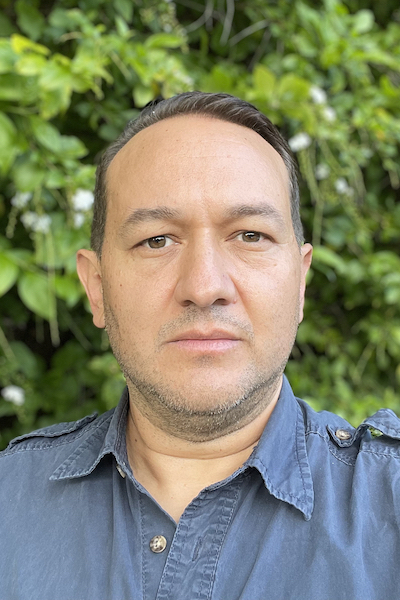
Felipe Zapata
Associate Professor
email: fzapata@ucla.edu
phone: 310-206-4583
office: 210M Botany
website
Recent Courses
EE BIOL 200a Organismal Biology
EE BIOL 103 Plant Diversity and Evolution
Research Interests
My research groups asks questions about the evolutionary processes that generate biodiversity at multiple phylogenetic, spatial, and temporal scales. To learn more about our research, please visit Zapata Lab.
Selected Publications
Anghel I, Jacobs SJ, Escalona M, Mohan M, Fairbairn C, Beraut E, Nguyen O, Toffelmier E, Shaffer HB, Zapata F. Reference genome of the color polymorphic desert annual plant Linanthus parryae. J. Heredity 113:712-721
Henkhaus N, Busch W, Chen A, Colón-Carmona A, [...], Zapata F, Zemenick A, Stern DB. Removing Systemic Barriers to Equity, Diversity, and Inclusion: Report of the 2019 Plant Science Research Network workshop "Inclusivity in the Plant Sciences". Plant Direct e432
Grundler MC, Rabosky DL, Zapata F. Fast likelihood calculations for automatic identification of among-lineage macroevolutionary rate heterogeneity in continuous and discrete traits Systematic Biology 71:1307-1318
Landis MJ, Quintero I, Muñoz MM, Zapata F, Donoghue MJ. Phylogenetic inference of where species spread or split across barriers. Proceedings of the National Academy of Sciences, USA 119 (13):e2116948119
Munro C, Zapata F, Siebert S, Howison M, Haddock SHD, Dunn CW., "Evolution of gene expression across species and specialized zooids in Siphonophora", Molecular Biology and Evolution, 39(2):msac027 (2022) url: link.
Landis MJ, Quintero I, Munoz MM, Zapata F, Donoghue MJ., "Phylogenetic inference of where species spread or split across barriers", Proceedings of the National Academy of Sciences, USA, 119(13):e211694811 (2022) url: link
Contributions: study design, research execution, results interpretation, and writing.
Grundler MC, Rabosky DL, Zapata F, "Fast likelihood calculations for automatic identification of among- lineage macroevolutionary rate heterogeneity in continuous and discrete traits", Systematic Biology, (2022) url: link.
Henkhaus NA, Busch W, Chen A, Colon-Carmona A, Cothran M, Diaz N, Dundore-Arias JP, Gonzales M, Hadziabdic D, Hayes RA, MacIntosh GC, Na A, Nyamasoka-Magonziwa B, Pater D, Peritore-Galve FC, Phelps-Durr T, Rouhier K, Sickler DB, Starnes JH, Tyler QR, Valdez-Ward E, Vega-Sanchez ME, Walcott RR, Ward JK, Wyatt SE, Zapata F, Zemenick AT, Stern DB., "Removing systemic barriers to equity, diversity, and inclusion: Report of the 2019 Plant Science Research Network workshop "Inclusivity in the Plant Sciences"", Plant Direct, 6(8):e432 (2022) url: link.

Pamela Yeh
Associate Professor
email: pamelayeh@ucla.edu
phone:
office:
website
Recent Courses
Recent courses: EEB 185 Evolutionary Medicine, EEB M200A Evolution
Research Interests
My lab is interested in measuring, understanding, and predicting the ecological and evolutionary trajectories of populations when they encounter novel environments, particularly environments with multiple disturbances or stressors. We are especially interested in how the stressors interact, and how these interactions ultimately affect populations. We incorporate field, lab, and theoretical tools in our work. We work on two systems, one lab-based, and one field-based. In the lab, we work on microbial evolution and how bacteria respond to multiple stressors, using antibiotics as stressors. In the field, we work on avian urban ecology and evolution, specifically on how dark-eyed juncos and house sparrows are affected by the urban landscape and unique urban stressors.
Selected Publications
Using a newly introduced framework to measure ecological stressor interactions
E Tekin, ES Diamant, M Cruz‐Loya, V Enriquez, N Singh, VM Savage, ...
Ecology Letters 23 (9), 1391-1403, 2020.
Nests in the cities: adaptive and non-adaptive phenotypic plasticity and convergence in an urban bird
SA Bressler, ES Diamant, MW Tingley, PJ Yeh
Proceedings of the Royal Society B 287 (1941), 20202122, 2020.
Antibiotics shift the temperature response curve of Escherichia coli growth
M Cruz-Loya, E Tekin, TM Kang, N Cardona, N Lozano-Huntelman, ...
Msystems 6 (4), e00228-21, 2021.
Evolution of antibiotic resistance impacts optimal temperature and growth rate in Escherichia coli and Staphylococcus epidermidis
P Mira, N Lozano‐Huntelman, A Johnson, VM Savage, P Yeh
Journal of Applied Microbiology 133 (4), 2655-2667, 2022.
Meta-analysis of three-stressor combinations on population-level fitness reveal substantial higher-order interactions
ES Diamant, S Boyd, NA Lozano-Huntelman, V Enriquez, AR Kim, ...
Science of The Total Environment, 161163, 2022.
E. Tekin, C. White, T. Kang, N. Singh, M. Cruz-Loya, R. Damoiseaux, V. Savage, and P. Yeh, "Prevalence and patterns of higher-order drug interactions in Escherichia coli", npj Nature Systems Biology and Applications, 4 : 31- (2018) .
D. Chung, E. Ferree, D. Simon, and P. Yeh, "Patterns of bird-bacteria associations", EcoHealth, 15 : 627-641 (2018) .
J. Pruitt, A. Berdahl, C. Riehl, N. Pinter-Wollman, H. Moeller, E. Pringle, L. Aplin, E. Robinson, J. Grilli, P. Yeh, V. Savage, M. Price, J. Garland, I. Gilby, G. Doering, and E. Hobson., "Social tipping points in animal societies", Proceedings of the Royal Society B, 285 : 20181282- (2018) .
E. Tekin, V. Savage, and P. Yeh, "Measuring higher-order drug interactions: a
review of recent approaches", Current Opinion in Systems Biology, 4 : 16-23 (2017) .
N. Singh, M. Sit, M. Schutte, G. Chan, J. Aldana, D. Cervantes, C. Himmelstein, and P. Yeh, "A systematic review of differential rate of use of the word "evolve" across fields", Peer J, 5 : e3639- (2017) .
P. Yeh, D. Simon, J. Millar, F. Alexander, and D. Franklin, "A diversity of antibiotic-resistant Staphylococcus spp. in a public transportation system", Public Health and Research
Perspectives, 2 : 202-209 (2011) .
K. Bush, et al., "Tackling Antibiotic Resistance", Nature Reviews Microbiology, 9 : 894-896 (2011) .
P. Yeh, M. Hegreness, A. Aiden, and R. Kishony, "Drug interactions and the
evolution of antibiotic resistance", Nature Reviews Microbiology, 7 : 460-466 (2009) .
J.-B. Michel*, P. Yeh*, R. Chait, R. Moellering, and R. Kishony (* authors contributed equally), "Drug interactions
modulate the potential for evolution of resistance", Proceedings of the National Academy of Science, 105 : 14918-14923 (2008) .
T. Price, P. Yeh, and B. Harr, "Phenotypic plasticity and the evolution of a
socially selected trait following colonization of a novel environment", American Naturalist, 172 : S49-S62 (2008) .
Xiaoming Wang
Associate Adjunct Professor
email: xwang@nhm.org
phone:
office:
website
Recent Courses
Research Interests
My current researches have two broad focuses. 1, evolution, systematics, and phylogeny of fossil carnivorans (meat-eating mammals) in Cenozoic. In particular, I have concentrated on the fossil history of Canidae (dog family). In collaboration with Blaire Van Valkenburgh and Robert Wayne, we are tackling the issues of the molecular phylogeny and the timing of individual clades, and also their functional implications. 2, Geology and vertebrate paleontology of Tibetan Plateau. This NSF funded, field-oriented program attempts to learn about mammalian evolution in Tibet and their responses to paleoenvironments. The dramatic uplift of the Tibetan Plateau has caused a profound change of the Asian climate and environments. Such a change is recorded in the fossil records of mammals. I am leading a group of American and Chinese geologists and paleontologists to investigate various Cenozoic basins in Tibet and have discovered a number of fossiliferous localities.
Selected Publications
Wang, X., Y. Wang, Q. Li, Z.J. Tseng, G.T. Takeuchi, T. Deng, G. Xie, M.-m. Chang, and N. Wang, "Cenozoic vertebrate evolution and
paleoenvironment in Tibetan Plateau: Progress and prospects", Gondwana Research, - (2014) .
Li, Q., G.-p. Xie, G.T. Takeuchi, T. Deng, Z.J. Tseng,
C. Groh�, and X. Wang, "Vertebrate fossils on the Roof of the World: Biostratigraphy and geochronology of high-elevation Kunlun Pass Basin, northern Tibetan Plateau, and basin history as related to the Kunlun strike-slip fault", Palaeogeography, Palaeoclimatology,
Palaeoecology, 411 : 46-55 (2014) .
Wang, X., Z.J. Tseng, Q. Li, G.T. Takeuchi, and G. Xie, "From ?third pole? to north pole: a Himalayan origin for the arctic fox", Proceedings of the Royal Society B: Biological Sciences, 281 (1787): - (2014) .
Wang, X., Q. Li, and G. Xie
, "Earliest record of Sinicuon
in Zanda Basin, southern Tibet and implications for hypercarnivores in cold environments", Quaternary International, 281 (1787): 1-8 (2014) .
Li, Q., and X. Wang, "Qaidamomys fortelii, a new Late Miocene murid from Qaidam Basin, north Qinghai-Xizang Plateau, China", Annales Zoologici Fennici, 51 (1-2): 17-26 (2014) .
Li, Q., X. Wang, G. Xie, and A. Yin, " Oligocene-Miocene mammalian fossils from Hongyazi Basin and its bearing on tectonics of Danghe Nanshan in northern Tibetan Plateau", PLoS ONE, 8 (12): e82816- (2013) .
Tseng, Z.J., X. Wang, G.J. Slater, G.T. Takeuchi, Q. Li, J. Liu, and G. Xie, "Himalayan fossils of the oldest known pantherine establish ancient origin of big cats", Proceedings of the Royal Society B: Biological Sciences, 281 : 20132686- (2013) .
Tseng, Z.J., Q. Li, and X. Wang, "A new cursorial hyena from Tibet, and analysis of biostratigraphy, paleozoogeography, and dental morphology of Chasmaporthetes (Mammalia, Carnivora)", Journal of Vertebrate Paleontology, 33 (6): 1457-1471 (2013) .
Wang, Y., Y. Xu, S. Khawaja, B.H. Passey, C. Zhang, X. Wang, Q. Li, Z.J. Tseng, G.T. Takeuchi, T. Deng, and G. Xie, "Diet and environment of a mid-Pliocene fauna from southwestern Himalaya: Paleo-elevation implications", Earth and Planetary Science Letters, 376 (0): 43-53 (2013) .
Wang, X., Q. Li, Z.-d. Qiu, G.-p. Xie, B.-y. Wang, Z.-x. Qiu, Z.J. Tseng, and G.T. Takeuchi. 2013., "Chapter 10. Neogene mammalian biostratigraphy and geochronology of the Tibetan Plateau", In: Fossil Mammals of Asia: Neogene Biostratigraphy and Chronology, X. Wang, L.J. Flynn, and M. Fortelius(Eds.), New York Columbia University Press 376 (0): 274-292 (2013) .

Richard Vance
Professor Emeritus
email: rvance@ucla.edu
phone: (310) 825-2685
office:
Recent Courses
EE BIOL 200B - Ecology
EE BIOL C119 - Mathematical Ecology
EE BIOL C219 - Mathematical Ecology
Research Interests
I am an ecologist. My research projects through the years have employed diverse methods and spanned diverse areas of ecology, all related in some way to the dynamics of populations. These methods and areas include field observations and experiments in intertidal and subtidal benthic marine communities, mathematical theories and computer simulations of assorted population, community, and evolutionary phenomena, and restoration of degraded salt marsh communities.
The next three sections describe my current research projects, and two contain links to recent publications. A final section describes my desires and philosophy concerning graduate student sponsorship.
SALT MARSH RESTORATION
As part of the construction of a military base at Point Mugu, California, during the 1950?s and 1960?s, the U. S. Navy built a system of sewage oxidation ponds in coastal salt marsh habitat, a project widely viewed at the time as putting otherwise essentially worthless land to constructive use. Similar actions by assorted groups and individuals up and down the California coast had by the 1990?s reduced coastal salt marsh to the status of an endangered ecosystem and established several of its plant and animal occupants as officially designated endangered species. In recent years, increased public appreciation of this ecosystem?s intrinsic value has awakened the Navy?s present strong sense of environmental stewardship, which in turn has inspired restoration of the Point Mugu sewage oxidation ponds back to salt marsh habitat. The practical problem the Navy now faces is what to do with the half meter thick layer of heavy metal-contaminated sewage sludge that presently blankets the entire sewage ponds area.
My research, pursued collaboratively with Dr. Richard Ambrose of UCLA and several of my and his graduate students, examines the possibility of using this sludge as fertilizer in salt marsh restoration by mixing it with the underlying sewage ponds? clay liner. This procedure has a potential environmental benefit and a potential environmental cost. The potential benefit is that organic matter in the sludge might increase growth and vigor of salt marsh plants growing in the otherwise poor soil of the area. The potential cost is that heavy metals in the sludge might both poison local salt marsh plants and animals and also contaminate the larger marine environment.
To evaluate plant survival and growth, we have completed two growth experiments. The first, involving plants growing in pots containing assorted sludge-soil mixtures, established that this sewage sludge does not kill salt marsh plants but also does not stimulate growth. The second, a one-hectare pilot restoration involving plants growing in large unlined plots containing sludge-clay mixtures, produced the same results, demonstrating that sludge fertilization fails to stimulate plant growth even outside the artificially confined environment of a pot.
We are currently evaluating metal contamination both by examining metal uptake by assorted salt marsh and mudflat plants and animals and also measuring metal concentra-tions in water and sediment that passes from different size restoration sites into the tidal creeks that flow into the larger marine environment.
Most of this salt marsh work has not yet been published, but a full account of the potted plant experiment [link] will soon appear in the journal Restoration Ecology.
LIGHT USE AND COMPETITIVE COEXISTENCE IN VASCULAR PLANTS
Most land plants obtain their energy from the same source, namely sunlight, and consequently all plant species that live together in an ecological community necessarily compete for this single essential energy resource. Since plants lack the rich opportunities for energy resource partitioning that animals enjoy by virtue of their widely varying diets, it is not immediately clear how different plant species manage to coexist. Why is it not true that some one plant species, through particularly vigorous vegetative growth, simply monopolizes all available sunlight, shades out all competitors, and ultimately forms an unbroken monoculture throughout the community in which it lives? That is, how is it possible that so many plant species can coexist in natural communities even though they all exploit one and the same energy resource?
Note that because different plant species provide both somewhat different primary food and also somewhat different physical habitat structure to the animals that live with them, the answer to this question will go a long way toward explaining biodiversity not just of plants but also of animals that occupy natural ecological communities, and indeed biodiversity of the biosphere as a whole.
Numerous explanations for plant competitive coexistence have been proposed. Most rely on variation through space in the physical habitat, disturbances or other changes through time in the physical habitat, or herbivory. Most such postulated mechanisms probably do apply widely, but they cannot explain coexistence of plant species that lack abundant herbivores and occupy habitats that remain relatively constant through space and over long time periods.
In collaboration with Mr. Andrew Nevai-Tucker, a Mathematics Ph. D. student I co-advise, I am investigating another possible mechanism that requires neither habitat variation nor herbivores. It examines consequences of differences in light capture and energy use by plants with different growth forms. To understand the idea, consider two hypothetical plant species, one tall and one short. Where these grow together, the tall species clearly enjoys the advantage in light capture, because its leaves intercept incoming sunlight first and consequently perform photosynthesis at a rapid rate. To secure this advantage, however, the tall plant species must devote considerable energy to growing elaborate support structures (i.e., long rigid stems) and then to supplying them with enough metabolic energy to keep them alive. The short species, by contrast, lacks such elaborate support structures and consequently enjoys considerable energy savings by not growing and sustaining them. The associated cost, however, is that when growing with the tall species, the short species must make do with the reduced light available in the understory and the modest amount of photosynthesis it can produce. The question is: can their different patterns of light capture and energy use make it possible for the tall species and the short species to experience stable competitive coexistence?
Investigating this question obviously requires examining the energy budgets of coexisting plant species populations. These budgets must include accurate accounting both of photosynthesis rates of leaves that experience light levels that prevail at different heights within the plant canopy and also of the growth and metabolic costs of assorted plant parts. Empirical measurements can supply the necessary data. To employ these data in the required energy accounting, it is necessary to construct and analyze a mathematical description of whole-plant energy budgets. Unfortunately, the mathematical structure of such models proves unavoidably complicated, and this mathematical complexity has delayed meaningful analysis of this problem by several decades.
Through extremely careful formulation accompanied by fortuitous transformation, we have developed a mathematical expression of a special case of this problem that yields to traditional mathematical analysis. This analysis, most of which focuses on implicitly defined functions, has produced the desired insight: if two otherwise identical plant species differ only in the length of their stems, then the two plant species can indeed coexist stably. More precisely, stable coexistence occurs under certain parameter values, competitive exclusion of the short species occurs under other parameter values, and competitive exclusion of the tall species occurs under yet other parameter values.
We are presently preparing these initial results for publication. Further research presently underway pursues two lines of investigation. The first is to generalize the basic model to pairs of species that differ in more ways than just stem length. The second is to adapt the basic formulation to the two most common plant species, Salicornia virginica and Frankenia grandifolia, which occur together in the natural salt marsh at Point Mugu, California, to determine whether their apparently stable coexistence arises by this postulated mechanism. This latter effort involves collaboration with Dr. Rasoul Sharifi of UCLA and Dr. Sean Anderson of Stanford University (and a recent graduate from my laboratory) who have participated in making field measurements of the various constants and functions that appear in the model.
THE SPATIAL SCALE OF POPULATION DYNAMICS IN CORAL REEF FISH
Many tropical coral reef fish species have a two-stage life cycle. The adult stage lives in close association with the reef structure, is typically relatively sedentary, and in many cases occupies the same small home range on a single reef throughout its entire life. The larval stage, by contrast, lives in the water column as part of the plankton and may drift for tens or hundreds of kilometers from its birthplace before settling and adopting the adult life style. For practical reasons, field ecologists concerned with coral reef fish population dynamics focus most of their attention on adult fish. Adults are relatively easy to count, measure, examine behaviorally, and manipulate experimentally. For some kinds of population-level questions, this focus on adults is appropriate, because the fish that any one adult encounters during its life are just the adults that live in the restricted portion of the reef the focal fish occupies. These individuals constitute a local population.
However, each such local population is ?open? in the sense that larval dispersal between reefs connects them dynamically, and it is entirely possible that local population abundance and size structure in any one particular reef area may depend more heavily on the dynamics of other populations that supply the larvae to this reef area than on events that take place in the reef area itself. That is, because of larval dispersal between reef areas, the true dynamical unit is not the collection of fish that occupy individual reefs but rather the collection of fish that occupy all reefs interconnected by larval dispersal. Unfortunately, these multi-reef metapopulations are far too large and geographically dispersed to permit the kinds of close observations and experimental manipulations that have produced present understanding of single-reef populations.
Fortunately, however, the power of modern computers makes scientific study of interconnected collections of populations possible. I am presently pursuing such a multi-population study in collaboration with Dr. Graham Forrester of the University of Rhode Island and Dr. Mark Steele of the University of California at Santa Barbara. For maximum realism, we have tied this theoretical project closely to our ongoing field study of the bridled goby Coryphopterus glaucofraenum that occupies coral reefs on Caribbean and Bahamian Islands. Our models incorporate field-based functions that describe goby birth, death, and somatic growth, and how each depends on local population density. These models concern semi-isolated adult populations that occupy either large collections of spatially separated patch reefs or different parts of a single large but very spatially heterogeneous reef. Our models address two main questions: How well do demographic rate functions measured in local populations scale up to large collections of such local populations? How does density dependence in demographic rates that act at the level of local populations regulate the abundance of individuals that occupy a large collection of such populations?
Our first modeling study [link] concerns the ?mesopopulation? of gobies that live on a collection of hundreds of identical small patch reefs separated from each other by expanses of sand that adult gobies rarely cross. Its principal conclusions are that realized demographic rate functions in the entire mesopopulation virtually coincide with scaled up versions of the demographic functions that apply to individual reefs and that density dependence at the level of local reefs strongly influences regulation of the whole mesopopulation. Models currently under development will extend this inquiry to a single large reef, resembling our actual study reefs in the Bahamas, on which both reef structure and also larval input and adult survival rates vary dramatically from place to place. Among other things, these models will attempt to explain whatever trends arise in our upcoming field experiments in which we will artificially increase the protection from predators that gobies will experience on several of our Bahamian coral reefs.
GRADUATE STUDENT SPONSORSHIP
One of the greatest joys I derive from the academic profession is sponsoring graduate students and whenever possible performing collaborative research with them. Because everyone involved derives greatest benefits from diversity in educational experiences, I take pleasure in sponsoring students who wish to study any of the areas in which I have performed research. The present occupants of and recent graduates from my laboratory conduct research in these areas: Sean Anderson (Ph. D. 2002), ecology of algae, salt marsh restoration; Anna Armitage, salt marsh community ecology and restoration; Sarah Bryson, salt marsh restoration; Bryn Evans (M. S. 2001), ecology of coral reef fish; Jack Malone (Ph. D. 2002), ecology of snails; Andrew Nevai-Tucker, models of plant competition; Jameal Samhouri, ecology of coral reef fish; and Joy Yoon, ecology of birds, salt marsh restoration.
The papers listed below span the range of subjects I have studied during my career.
[This web page was last updated on January 3, 2003.]
Selected Publications
Vance, R.R., "Optimal Somatic Growth and Reproduction in a Limited, Constant Environment: The General Case", Jouranl of Theoretical Biology, 157 : 51-70 (1992) .
Vance, R.R., "Optimal Somatic Growth and Reproduction in a Limited, Constant Environment: Organisms with Determinate Growth", Journal of Theoretical Biology, 157 : 31-50 (1992) .
Vance, R.R., "Population Growth in a Time-Varying Environment", Theor. Pop. Biology, 37 : 438-454 (1990) .
Vance, R.R.,, "A General Dynamical Model of One Consumer - One Resource Interactions", Journal of Mathematical Biosciences, 28 : 645-669 (1990) .
Sulsky, D., R.R. Vnace, and W.I. Newman, "Time Delays in Age Structured Populations", Submitted to Journal of Theoretical Biology, 141 : 403-422 (1989) .
Vance, R.R., and E.A. Coddington, "A Nonautonomous Population Growth Model", Journal of Mathematical Biosciences, 27 : 491-506 (1989) .
Vance, R.R., "Ecological Succession and the Climax Community on a Marine Subtidal Rock Wall", Marine Ecology - Prog. Ser, 48 : 125-136 (1988) .
Vance, R.R., "The Demographic Meanings of the Classical Population Models of Ecology", Journal of Theoretical Biology, 33 : 199-225 (1988) .
Vance, R.R., "The Stable Coexistence of Two Competitiors for One Resource", American Naturalist, 126 : 72-84 (1984) .
Vance, R.R., "Interference Competition and the Coexistence of Two competitors on a Single Limiting Resource", Ecology, 65 : 1349-1357 (1984) .
Henry Thompson
email:
phone:
office:
Recent Courses
Research Interests
Selected Publications

Charles Taylor
Professor Emeritus
email: charles.e.taylor@gmail.com
phone:
office:
website
Recent Courses
EE BIOL 135 - Population Genetics
EE BIOL 19 - Fiat Lux Freshman Seminars
EE BIOL 235 - Population Genetics
Research Interests
Our lab would like to understand the grammar and meaning of bird songs. Bird songs are not random; they do have rules for putting notes and phrases together. We would like to characterize those rules. Recent advances in sensor arrays, computation, and computational linguistics finally make this long-sought goal achievable. The approach taken by our laboratory is to: (1) collect a large amount of bird song recordings from hand-held or acoustic sensor arrays in a variety of natural settings; (2) process the data by software, some of which is recent and some of which we are developing with new advances in localizing sources with beamforming, then filtering out noise, identifying events of interest, and then classifying them according to species and individual, combining that with behavioral observations when possible; (3) this information/knowledge is then stored in a large database that is shared among collaborating research groups; and (4) analyzing the recordings by computational-linguistic tools to identify the syntax of the songs. Combined that linguistic understanding with information about the context in which it occurred, our aim to explore new software methods to identify the meaning of those songs. We collaborate with ecologists, engineers, linguists and artists.
Our work is contributing to a profound transformation that is already underway: the recognition of very sophisticated signaling strategies and syntactic structures in non-human species. The new tools and methods for collecting and analyzing bird song now allow a level of observation that previously would not have been possible. We are now collecting truly vast amounts of data from previously inaccessible settings and subjecting data to previously undiscovered sophisticated structural analyses. Our work may also be transformational to computational linguistics if the natural world beyond humans were shown to have languages that are radically different from our own (as seems quite likely).
Selected Publications
Zhang, J, G. Kossan, R. Hedley, R. Hudson, C. E. Taylor, K. Yao and M. Bao, "Fast 3D AML-based Bird Song Estimation", Unmanned Systems, 2 : 249- (2014) .
Arriaga, J. G., Sanchez, H., Hedley, R., Vallejo, E. E., and Taylor, C. E., "Using Song to Identify Cassin?s Vireo Individuals. A Comparative Study of Pattern Recognition Algorithms", Pattern Recognition, Springer International Publishing 2 : 291-300 (2014) .
Tan, Lee Ngee, George Kossan, Martin L. Cody, Charles E. Taylor, Abeer Alwan, "A sparse representation-based classifier for in-set bird phrase verification and classification with limited training data", The 38th International Conference on Acoustics, Speech, and Signal Processing (ICASSP), Vancouver, Canada, May 16-31, 2013, 2 : - (2013) .
Sasahara K, Cody ML, Cohen D, Taylor CE., "Structural Design Principles of Complex Bird Songs: A Network-Based Approach", PLoS ONE, 7 (9): e44436- (2012) .
Kirschel, A.N.G., M.L. Cody, Z. Harlow, V.J. Promponas, E.E. Vallejo and C.E. Taylor, "Territorial dynamics of Mexican Antthrushes revealed by individual recognition of their songs", Ibis, 153 : 255-268 (2011) .
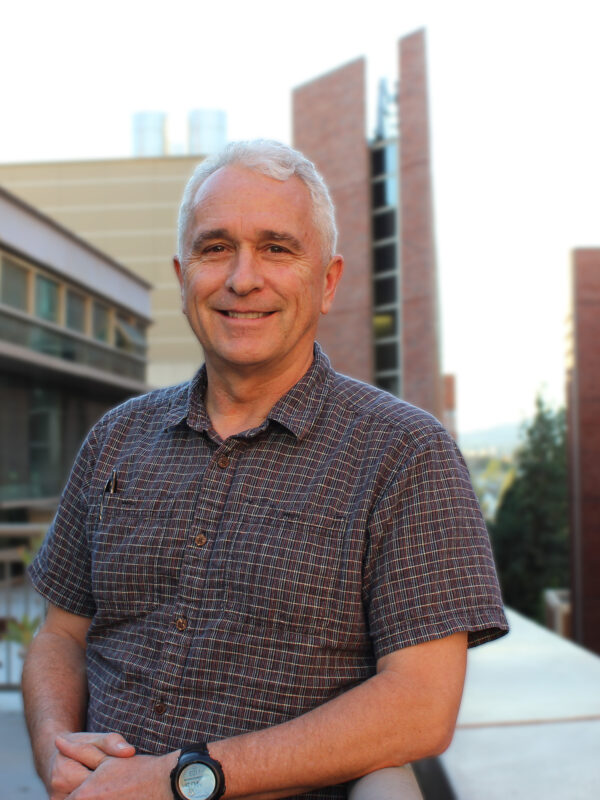
Thomas B. Smith
Distinguished Research Professor
email: tbsmith@ucla.edu
phone: 310-206-4712
office: Suite 300, La Kretz Hall
website
Recent Courses
ENVIRON 121 – Conservation of Biodiversity
ENVIRON 193 – Journal Club Seminars: Environment
ENVIRON 170 - Environmental Science Colloquium
EEB 114A – Ornithology
EEB 297 – Selected Topics in Ecology and Evolutionary Biology
Research Interests
Currently, my research focuses on:
1. Mechanisms of speciation,
2. Ecological and evolutionary aspects of vertebrate-mediated seed dispersal in the maintenance and dynamics of rainforests,
3. Molecular genetic approaches to investigating microevolutionary divergence and population genetic structure of migrant birds,
4. Evolution of resource polymorphisms,
5. Ecology of disease, and
6. Conservation biology.
Field sites include West and Central Africa; North, South, and Central America; and Australia.
In addition to my appointment in the Department of Ecology and Evolutionary Biology, I am also the Director of the Center for Tropical Research (CTR), a part of the UCLA Institute of the Environment and Sustainability (IoES).
Selected Publications
Bonneaud C, Marnocha E, Herrel A, Vanhooydonck B, Irshick DJ, Smith TB., "Developmental plasticity affects sexual size dimorphism in an anole lizard", Functional Ecology, - (2015) [link].
Ribiero RD, McCormack J, Alvarez H, Carrasco L, Grether G, Mena P, Sedano R, Smith TB, Karubian J., "Loss of sexual dimorphism is associated with loss of lekking behavior in the green manakin (Xenopipo holochora)", Journal of Avian Biology, 46 : 307-314 (2015) .
Larison BL, Harrigan RJ, Thomassen H, Rubenstein DI, Chan-Golston A, Li E, Smith TB, "How the zebra got its stripes: A problem with too many solutions", Royal Society Open Science, 2 : 140452- (2015) .
Lauron EJ, Loiseau C, Bowie RCK, Spicer GS, Smith TB, Melo M, Sehgal RNM., "Coevolutionary patterns and diversification of avian malaria parasites in African sunbirds (Family Nectariniidae)", Parasitology, 142 : 635-647 (2015) .
Harrigan RJ, Sedano R, Chasar AC, Chaves J, Nguyen JT, Whitaker A, Smith TB, "New host and lineage diversity of avian haemosporidia in the Northern Andes", Evolutionary Applications, 7 : 799-811 (2014) [link].
Chapman CA, Deluycker A, Reyna-Hurtado RA, Serio-Silva JC, Smith TB, Strier KB, Goldberg TL, "Safeguarding biodiversity: what is perceived as working according to the conservation community", Oryx, 7 : - (2014) [link].
Fuller TL, Ducatez MF, Njabo KY, Couacy-Hymann E, Chasar T, Aplogan GL, Lao S, Awoume F, Tehou A, Langeois Q, Krauss S, Smith TB, "Avian influenza surveillance in Central and West Africa, 2010-2014", Epidemiology and Infection, 7 : - (2014) [link].
Anthony NM, Atteke C, Bruford MW, Dallmeier F, Freedman A, Hardy O, Ibrahim B, Jeffery KJ, Johnson M, Lahm SA, Lepengue N, Lowenstein JH, Maisels F, Mboumba J, Mickala P, Morgan K, Ntie S, Smith TB, Sullivan JP, Verheyen E, Gonder MK, "Evolution and conservation of Central African biodiversity: priorities for future research and education in the Congo Basin and Gulf of Guinea", Biotropica, 47 : 6-17 (2014) .
Ruegg KC, Anderson EC, Paxton KL, Apkenas V, Lao S, Siegal RB, DeSante DF, Moore F, Smith TB, "Mapping migration in a songbird using high-resolution genetic markers", Molecular Ecology, 23 : 5726-5739 (2014) [link].
Chasar A, Harrigan RJ, Holbrook KM, Dietsch TV, Fuller TL, Wikelski M, Smith TB, "Spatial and temporal patterns of frugivorous hornbill movements in Central Africa and their implications for rainforest conservation", Biotropica, 46 : 763-770 (2014) .
Richard Siegel
email:
phone:
office:
Recent Courses
Research Interests
Selected Publications
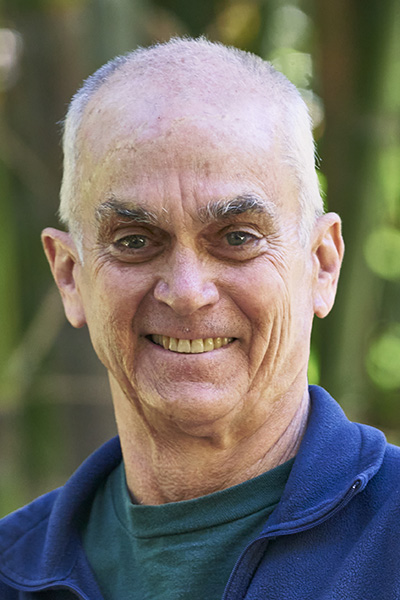
H. Bradley Shaffer
Distinguished Professor
email: brad.shaffer@ucla.edu
phone: 310-825-3836
office: 4163 Terasaki Life Sciences Building (TLSB)
website
Recent Courses
Research Interests
Evolutionary biology, ecology and conservation biology, primarily of amphibians and reptiles. My most recent research projects have focused on conservation genomics, both in California and more broadly. I am the Principal Investigator and Director of the California Conservation Genomics Project (CCGP), an analysis of 250 species of plants and animals that uses the power of genomic analysis to help conserve our state’s biodiversity. In other projects, we recently completed a phylogenetic analysis of virtually all of the world’s turtles and tortoises, providing an evolutionary framework that is essential for the conservation of this diverse, extremely endangered group of reptiles. We continue to focus a great deal of ecological and genetical work on the California tiger salamander, an endangered species native to central California grassland habitat, as well as several other endangered frogs, toads, and salamanders.
In addition to my appointment in the Department of Ecology and Evolutionary Biology, I am the Director of the La Kretz Center for California Conservation Science, a research center in the UCLA Institute of the Environment and Sustainability (IoES). I also am Director of the UCLA Stunt Ranch Reserve, one of UCLA’s two reserves in the UC Natural Reserve System (NRS), and am the campus liaison to the NRS.
Selected Publications
Cooper, R. D. and H. B. Shaffer. 2023. Managing invasive hybrids using pond hydroperiod in an endangered salamander system. Conservation Biology, e14167 https://doi.org/10.1111/cobi.14167
Beninde, J., T. W. Delaney, G. Gonzalez, and H. B. Shaffer. 2023. Harnessing iNaturalist to quantify hotspots of urban biodiversity: the Los Angeles case study. 2023. Frontiers in Ecology and Evolution. 11:983371. doi: 10.3389/fevo.2023.983371
Richmond, J. Q., J. A. McGuire, M. Escalona, M. P.A. Marimuthu, O. Nguyen, S. Sacco, E. Beraut, E. Toffelmier, R. N. Fisher, I. J. Wang, and H. B. Shaffer. 2023. Reference genome of an iconic lizard in western North America, Blainville’s horned lizard Phrynosoma blainvillii. Journal of Heredity 114:410-417. https://doi.org/10.1093/jhered/esad032
Messerman, A. F., A. G. Clause, L. N. Gray, M. Krkosˇek,, H. B. Rollins, P. C. Trenham, H. B. Shaffer* and C. A. Searcy*. 2022. Applying stochastic and Bayesian integral projection modeling to amphibian population viability analysis. Ecological Applications pages 1-16, e2783, https://doi.org/10.1002/eap.2783 * = co-senior authors
Shaffer, H. B., E. Toffelmier, R. B. Corbett-Detig, M. Escalona, B. Erickson, P. Fiedler, M. Gold, R. J. Harrigan, S. Hodges, T. K. Luckau, C. Miller, D. R. Oliveira, K. E. Shaffer, B. Shapiro, V. L. Sork, and I. J. Wang. 2022. Landscape genomics to enable conservation actions: The California Conservation Genomics Project. Journal of Heredity 113:577-588; DOI: 10.1093/jhered/esac020 (Note: Selected as Editor’s Choice, including cover image; based on this article, the Editor in Chief decided to dedicate an entire issue, #6, to the CCGP.)
Fiedler, P. L., B. Erickson, M. Esgro, M. Gold, J. M. Hull, J. Norris, B. Shapiro, M. Westphal, E. Toffelmier, and H. B. Shaffer. 2022. Seizing the Moment: The opportunity and relevance of the California Conservation Genomics Project to state and federal conservation policy. Journal of Heredity 113:589-596.
Beninde, J., E. M. Toffelmier, A. Andreas, C. Nishioka, M. Slay, A. Soto, J. P. Bueno, G. Gonzalez, H. V. Pham, M. Posta, J. L. Pace, and H. B. Shaffer. 2022. CaliPopGen: A genetic and life history database for the fauna and flora of California. Scientific Data, 9(1):1-12. https://doi.org/10.1038/s41597-022-01479-z
Manzo, S., E. G. Nicholson, Z. Devereux, R. N. Fisher, C. W. Brown, P. A. Scott, and H. B. Shaffer. 2021. Conservation of northwestern and southwestern pond turtles: Threats, population size estimates, and population viability analysis. Journal of Fish and Wildlife Management, 12(2):485–501; e1944-687X. https://doi.org/10.3996/JFWM-20-094
Turtle Taxonomy Working Group [A.G.J. Rhodin, J.B. Iverson, R. Bour, U. Fritz, A. Georges, H.B. Shaffer, and P.P. van Dijk]. 2021. Turtles of the World: Annotated Checklist and Atlas of Taxonomy, Synonymy, Distribution, and Conservation Status (9th Ed.). In: Rhodin, A.G.J., Iverson, J.B., van Dijk, P.P., Stanford, C.B., Goode, E.V., Buhlmann, K.A., and Mittermeier, R.A. (Eds.). Conservation Biology of Freshwater Turtles and Tortoises: A Compilation Project of the IUCN/SSC Tortoise and Freshwater Turtle Specialist Group. Chelonian Research Monographs 8:1–472. doi: 10.3854/crm.8.checklist.atlas.v9.2021. (Also listed under books)
Thomson, R. C., P. Q. Spinks, and H. B. Shaffer. 2021. A global phylogeny of turtles reveals a burst of climate-associated diversification on continental margins. Proceedings of the National Academy of Sciences, USA, 118: 1-10 (No. 7 e2012215118)
Scott, P. A., L. J. Allison, K. J. Field, R. C. Averill-Murray, and H. B. Shaffer. 2020. Individual heterozygosity predicts translocation success in threatened desert tortoises. Science 370: 1086-1089.
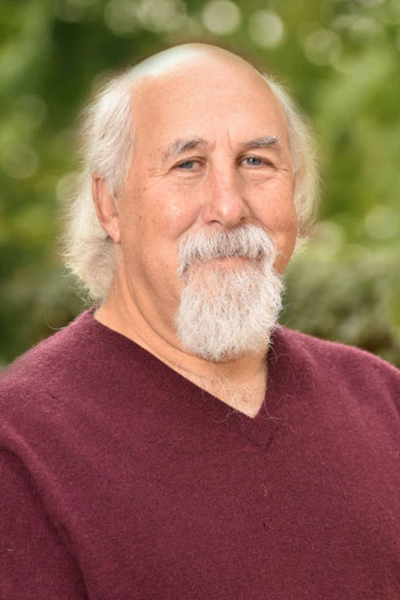
Barney Schlinger
Professor
email: schlinge@lifesci.ucla.edu
phone: (310) 825-5716
office: 2135 Terasaki Life Sciences Building (TLSB)
website
Recent Courses
PS M140 Hormones and Behavior in Humans and Other Animals
PS 177 Neuroethology
PHY SCI M127/227 - Neuroendocrinology of Reproduction
Cluster 72 Sex from Biology to a Gendered Society
Research Interests
Steroid hormones are powerful signaling molecules that influence numerous physiological and behavioral endpoints in vertebrate animals. My lab has explored biochemical steroidal signaling processes with a focus on the central nervous system and the role whereby steroids control behavior. We study steroid biosynthesis in steroidogenic organs as well as steroid metabolism and action in target tissues. I am also an avian biologist and much of my work has focused on songbirds and how steroids organize and activate the extraordinary neural circuitry that controls singing behavior. This includes steroidal involvement in auditory processing, motor output and memory formation. Our focus on the estrogen synthetic enzyme aromatase has revealed, surprisingly, that estradiol is synthesized at some synaptic terminal with rapid post-synaptic actions placing this “hormone” as a brain constitutive neuromodulator. We have also shown that sex-steroids can be synthesized fully in the brain, independent of typical steroidogenic tissues like the gonads. Finally, we have a longstanding research program investigating the neural, hormonal and muscular control of a remarkably complex courtship behavior in a wild tropical bird, the golden-collared manakin of Panama. This has involved multidisciplinary field and laboratory approaches that examine anatomy, physiology, behavior, ecology and evolutionary processes that impact this wonderful species and their unique behavior.
Selected Publications
Chiver, I. and B.A. Schlinger. 2017. Clearing up the court: sex and the endocrine basis of display-court manipulation. Anim Behav, 131: 115-121
Fuxjager, M.J., Miller Ligon, R., Fusani, L., Goller, F., Trost, L., Ter Maat, A., Gahr, M., Chiver, I., Chew, J* and B.A. Schlinger. 2017. Neuromuscular mechanisms of an elaborate wing display in the golden-collared manakin (Manacus vitellinus). J. Exp. Biol. 220: 4681-4688.
Schlinger, B.A., Paul, K., Monks, D.A. 2018. Muscle, a Conduit to Brain for Hormonal Control of Behavior. Horm Behav. 105: 58-65.
Pradhan, D.S., Van Ness, R.*, Chunqi, M., Jalabert, C., Hamden, J.E., Soma, K.K., Ramenofsky, M. and B.A. Schlinger, B.A. 2019. Phenotypic flexibility of glucocorticoid signaling in skeletal muscles of a songbird preparing to migrate. Horm. Behav. 116, 104586.
Fuxjager, M., Fusani, L. and B.A. Schlinger. 2022. Physiological innovation as a basis for courtship behavior. Anim. Behav. 184: 185-195.
Schlinger, B.A., Remage-Healey, L., Saldanha, C.J. 2022. The form, function, and evolutionary significance of neural aromatization. Front. Neuroendo. 64: 100969.
Pease, J.B., Driver, R.J., de la Cerda, D., Day, L.B. Lindsay, W.R., Schlinger, B.A., Schuppe, E.R., Balakrishnan, C.N., Fuxjager, M.J. 2022. Layered evolution of gene expression in superfast muscles for courtship. Proc. Nat. Acad. Sci. 119: No. 14 e2119671119
He, J., Fu, T., Zhang, L., Gao, L.W., Rensel, M., Remage-Healey, L., White, S.A., Gedman, G., Whitelegge, J., Xiao, X., Schlinger, B.A. 2022. Improved Zebra Finch Brain Transcriptome identifies novel proteins with sex differences. Gene, 15;843:146803. doi: 10.1016/j.gene.2022.146803.
Fuxjager, M.J., Ryder, T.B., Alfonso, C., Balakrishnan, C.N., Barske, J., Bosholn, M., Boyle, W.A., Braun, E.L., Chiver, I., Dakin, R., Day, L., Driver, R., Fusani, L., Horton, B., Wollman, R., Kimball, R.T. Lipshutz, S., Mello, C., Miles, M.C., Miller, E., Moore, I. Posada, G.C., Vernasco, B., Webster, M., Wirthlin, M. and Schlinger, B.A.. 2023. Physiological regulatory networks and the evolution of the integrated behavioral phenotype. Horm. Behav. 151:105340. doi: 10.1016/j.yhbeh.2023.105340.
Book
Schlinger, B.A. “The WINGSNAPPERS Lessons from an Exuberant Tropical Bird”, Yale University Press. In Press
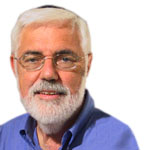
Eduardo Zeiger
Professor Emeritus
email: zeiger@biology.ucla.edu
phone:
office:
Recent Courses
EE BIOL 162 - Plant Physiology
EE BIOL 19 - Fiat Lux Freshman Seminars
OBEE M158 | PHY SCI M158 - Cell Biology
Research Interests
Photosynthetic carbon fixation by plant leaves uses atmospheric CO2 as a substrate. In terrestrial plants, the carbon dioxide entering the leaf shares its diffusion pathway with the water lost by evaporation at the leaf surfaces. To avoid desiccation, plants regulate their gas exchange, minimizing water loss with minimal curtailment of CO2 uptake. Gas exchange in leaves is controlled by a pair of guard cells surrounding the stomatal pores in the leaf epidermis. Guard cells function as turgor valves: when the plant has an abundant water supply and the environmental conditions favor high photosynthetic rates, guard cells are turgid and the stomatal pores are wide open. At night, or under stress, stomata close and water evaporation is reduced.
Guard cells are continuously sensing the leaf environment and the perceived environmental signals are transduced into appropriate turgor levels. We study sensory transduction in guard cells at different levels of organization.
Stomatal responses in the whole leaf are analyzed with gas exchange techniques. An attached, intact leaf is placed in a gas exchange cuvette and the rates of photosynthesis and stomatal conductances are measured. Using gas exchange analysis we recently found that new cotton varieties bred for heat resistance and higher yields, have higher stomatal conductances than older varieties. Using a number of these varieties chosen along a gradient of increasing yields and increasing conductance levels, we are studying the inheritance of stomatal regulation and the mechanisms determining the stomatal responses to temperature.
At the cellular level, we study sensory transduction in isolated guard cells and their organelles. The protoplasts, obtained by enzymatic treatment of epidermal strips, respond to many of the signals perceived by the guard cells in the intact leaf. Using guard cells protoplasts and the electrophysiological technique of patch clamping, we have characterized a light activated, electrogenic ion pump at the guard cell plasma membrane. Several lines of evidence, including the measurements illustrated in the accompanying figure, indicate that the pump is a proton pumping ATPase, that generates an electrochemical gradient used by the guard cells to drive the active ion transport required for turgor build-up and stomatal opening.
We are currently studying different aspects of the sensory transduction of the light signal during stomatal movements, including the properties of the guard cell chloroplast, the identity and localization of the blue light photoreceptor in guard cells and the relationship between ion transport and carbon metabolism. Characterization of the properties of the guard cells in isolation and in the intact leaf enriches our understanding of plant biology and will hopefully help agronomist and breeders design plants that require less water for their optimal productivity.
Selected Publications
Taiz, L.; Zeiger, E, Plant physiology, Sinauer Associates, Sunderland, Massachusetts, 01375(Eds.), - (2002) .
Talbott, L. D.; Zhu, J.; Han, S. W.; Zeiger, E, " Phytochrome and blue light-mediated stomatal opening in the orchid, Paphiopedilum", Plant and Cell Physiology, Sinauer Associates, Sunderland, Massachusetts, 01375(Eds.), 43 : 639-646 (2002) .
Talbott, L. D.; Nikolova, G.; Ortiz, A.; Shmayevich, I.; Zeiger, E, "Green Reversal of blue light-stimulated opening is found in a wide range of plant species", American Journal of Botany, Sinauer Associates, Sunderland, Massachusetts, 01375(Eds.), 89 : 366-368 (2002) .
Frechilla, S.; Talbott, L. D.; Zeiger E, "The CO2 response of Vicia guard cells acclimates to growth environment", Journal of Experimental Botany, Sinauer Associates, Sunderland, Massachusetts, 01375(Eds.), 53 : 545-550 (2002) .
Zeiger, E, "The guard cell chloroplast: A perspective for the 21st century", New Phytologist, Sinauer Associates, Sunderland, Massachusetts, 01375(Eds.), 153 : 415-424 (2002) .
Jin, X.; Zhu, J.; Zeiger, E, "The hypocotyl chloroplast plays a role in phototropic bending of Arabidopsis seedlings: Developmental and genetic evidence", Journal of Experimental Botany, Sinauer Associates, Sunderland, Massachusetts, 01375(Eds.), 52 : 91-97 (2001) .
Zeiger, E, "Sensory transduction of blue light in guard cells", In: Trends in Plant Science, Sinauer Associates, Sunderland, Massachusetts, 01375(Eds.), 5 : 183-184 (2000) .
Lu, Zhenmin; Qui�ones, M. A.; Zeiger, E, "Temperature dependence of guard cell respiration and stomatal conductance co-segregate in an F2 population of Pima cotton", Australian Journal of Plant Physiology, Sinauer Associates, Sunderland, Massachusetts, 01375(Eds.), 27 : 457-462 (2000) .
Ulloa, M.; Cantrell, R. G.; Percy, R. G.; Zeiger, E.; Lu, Z, "QTL analysis of stomatal conductance and relationship to lint yield in an interspecific cotton", The Journal of Cotton Science, Sinauer Associates, Sunderland, Massachusetts, 01375(Eds.), 4 : 10-18 (2000) .
Frechilla, Silvia; Talbott, Lawrence D.; Bogomolni, Roberto A.; Zeiger, Eduardo, "Reversal of blue light-stimulated stomatal opening by green light", Plant and Cell Physiology, Sinauer Associates, Sunderland, Massachusetts, 01375(Eds.), 41 (2): 171-176 (2000) .

Robert Wayne
Professor
email:
phone:
office:
Recent Courses
E&S SCI M216 | EE BIOL M200A - Evolutionary Biology
EE BIOL 19 - Fiat Lux Freshman Seminars
EE BIOL 194B - Research Group or Internship Seminars: Ecology and Evolutionary Biology
Research Interests
Application of molecular genetic techniques to questions in systematics, population genetics, and sociobiology
Selected Publications
Robinson J, C Brown, B Kim, K Lohmueller, R Wayne, "Purging of strongly deleterious mutations explains long-term persistence and absence of inbreeding depression in island foxes", Current Biology, 28 : 1-8 (2018) [link].
Hedrick, P, Wayne, R Fredrickson R, "Genetic rescue, not genetic swamping, is important for Mexican wolves", Biological Conservation, 224 : 266-267 (2018) .
Hendricks S, R Schweizer, R Harrigan, J Pollinger, R Brown, P Paquet, C Darimont, J Adams, L Waits, B vonHoldt, P Hohenlohe, R Wayne, "Natural re-colonization and admixture of wolves (Canis lupus) in the US Pacific Northwest: challenges for the protection and management of rare and endangered taxa", Heredity, 224 : - (2018) .
Pilot M, Greco C, vonHoldt BM, Randi E, J?drzejewski W, Sidorovich VE, Ostrander EA, Wayne RK, "Widespread, long?term admixture between grey wolves and domestic dogs across Eurasia and its implications for the conservation status of hybrids", Evol Appl, 11 : 662-680 (2018) [link].
Fraser D, Mouton A, Serieys LEK, Cole S, Carver S, Vandewoude S, Lappin M, Riley SPD, Wayne R, "Genome-wide expression reveals multiple systemic effects associated with detection of anticoagulant poisons in bobcats (Lynx rufus)", Molecular Ecology, 27 (5): 1170-1187 (2018) .
Nigenda-Morales, SF; Harrigan, RJ; Wayne, RK, "Playing by the rules? Phenotypic adaptation to temperate environments in an American marsupial", PeerJ, 6 : e4512- (2018) .
Serieys, LEK; Lea, AJ; Epeldegui, M; Armenta, TC; Moriarty, J; VandeWoude, S; Carver, S; Foley, J; Wayne, RK; Riley, SPD; Uittenbogaart, CH, "Urbanization and anticoagulant poisons promote immune dysfunction in bobcats", Proc. R. Soc. B, 285 (1871): 20172533- (2018) .
Nigenda-Morales SF, Hu Y, Beasley J, Ruiz-Pi�a HA, Valenzuela-Galv�n D, Wayne RK, "Transcriptomic analysis of skin pigmentation variation in the Virginia opossum (Didelphis virginiana)", Mol Ecol, 285 (1871): - (2018) .
Schweizer RM, Durvasula A, Smith J, Vohr SH, Stahler DR, Galaverni M, Thalmann O, Smith DW, Randi E, Ostrander EA, Green RE, Lohmueller KE, Novembre J, Wayne RK, "Natural Selection and Origin of a Melanistic Allele in North American Gray Wolves", Molecular Biology and Evolution, 35 : 1190-1209 (2018) .
Ostrander, EA; Wayne, RK; Freedman, AH; Davis, BW. Demographic history, selection and functional diversity of the canine genome. 2017 Dec;18(12):, "Natural Selection and Origin of a Melanistic Allele in North American Gray Wolves", Nat Rev Genet, 18 (12): 705-720 (2017) .

Blaire Van Valkenburgh
Professor
email: bvanval@ucla.edu
phone: 310-794-9398
office: 310M Botany
website
Recent Courses
EE BIOL 194B - Research Group or Internship Seminars: Ecology and Evolutionary Biology
GE CLST 70B - Evolution of Cosmos and Life
GE CLST 70CW - Evolution of the Cosmos and Life: Special Topics in Life Sciences
Research Interests
As a vertebrate paleobiologist, my focus is the evolution of form, function and ecology in organisms, both living and extinct. I study living species as a key to understanding extinct species and am drawn to the fossil record because of its unique attributes. First, it provides the only record of long-term evolutionary change in form, matched perhaps in magnitude only by the history of genetic change preserved in the genome. Second, it provides a window into life and ecosystems prior to the alterations and biases engendered by anthropogenic forces and recent Pleistocene extinctions. Third, it presents us with species and morphologies that are no longer present, such as dinosaurs and sabertooth cats, and thereby expands our understanding of life?s potentials beyond what we can observe today.
Much of my research has focused on large predatory mammals. Large predators on land and sea are receiving much attention among ecologists because they act as major drivers within their ecosystems and many are threatened with extinction. As top-down regulators, they are pivotal players in trophic cascades that affect both plant and animal distributions and abundance. Modern species evolved within much more diverse and complex guilds of large predators that included species such as short-faced bears, sabertooth cats, and dire wolves. To better understand both the dynamics of extant predator communities and the adaptations of individual species, I have explored the fossil record of carnivores from both ecological and evolutionary perspectives, sometimes focusing on guilds of species in distinct time horizons, and other times focusing on the evolutionary trajectories of species over millions of years. Below I list four recent areas of research that exemplify the work in my lab.
1. Parallels between past and present predator guilds
2. Evolution of feeding adaptations
3. Function and evolution of mammalian turbinates
4. Molecular and morphological evolution within the Carnivora.
Selected Publications
Stains, M., Harshman, J., Barker, M. K., Chasteen, S. V., Cole, R., Decheene-Peters, S. E., Eagen, M. K., Esson, J. M., Knight, J. K., Laski, F. A., Levis-Fitzgerald, M., Lee, C. J., Lo, S. M., McDonnell, L. M., McKay, T. A., Michelotti, N., Musgrove, A., Palmer, M. S., Plank, K. M., Rodela, T. M., Sanders, E. R., Schimpf, N. G., Schulte, P. M., Smith, M. K., Stetzer, M., Van Valkenburgh, B., Vinson, E., Weir, L. K., Wendel, P. J., Wheeler, L. B., & Young, A. M., "Anatomy of STEM teaching in North American universities", Science, 359 : 1468-1470 (2018) .
Pang B, Van Valkenburgh B, Kitchell KF, Dickman A, and Marker L, "History of the cheetah-human relationship", In: Cheetahs: Biology and Conservation, Marker L, Boast LK, Schmidt-Kuntzel A(Eds.), London Academic Press 359 : 17-24 (2018) .
Van Valkenburgh B, Pang B, Cherrin M, and Rook L, "The cheetah: evolutionary history and paleoecology", Cheetahs: Biology and Conservation, Marker L, Boast LK, Schmidt-Kuntzel A(Eds.), London Academic Press 359 : 25-33 (2018) .
Balisi M, Casey C, and Van Valkenburgh B, "Dietary specialization is linked to reduced species durations in North American fossil canids", Royal Society Open Science, Marker L, Boast LK, Schmidt-Kuntzel A(Eds.), 5 : 171861- (2018) [link].
Bird DJ, Murphy WJ, Rox-Rosales L, Hamid I, Eagle RA, and Van Valkenburgh B, "Olfaction written in bone: cribriform plate size parallels olfactory receptor gene repertoires in Mammalia", Proceedings of the Royal Society B, Marker L, Boast LK, Schmidt-Kuntzel A(Eds.), 5 : - (2018) .
Curtis AA, Orke M, Tetradis S, and Van Valkenburgh B, "Diet-related differences in craniodental morphology between captive-reared and wild coyotes, Canis latrans (Carnivora: Canidae)", Biological Journal of the Linnean Society, Marker L, Boast LK, Schmidt-Kuntzel A(Eds.), 123 : 677-693 (2018) .
Brown C, Balisi M, Shaw CA, and Van Valkenburgh B, "Skeletal trauma reflects hunting behavior in extinct sabre-tooth cats and dire wolves", Nature Ecology and Evolution, Marker L, Boast LK, Schmidt-Kuntzel A(Eds.), 1 : 0131- (2017) .
Mann SA, Van Valkenburgh B, and Hayward MH, "Tooth fracture within the African carnivore guild: the influence of intraguild competition and resource availability", Journal of Zoology, Marker L, Boast LK, Schmidt-Kuntzel A(Eds.), 303 : 261-269 (2017) .
Rygg AT, Van Valkenburgh B, and Craven BA, "The influence of sniffing on airflow and odorant deposition in the canine nasal cavity", Chemical Senses, Marker L, Boast LK, Schmidt-Kuntzel A(Eds.), 42 : 683-698 (2017) .
Ripple, W.J., Chapron, G., Lopez-Bao, J.V., Durant, S.M., Macdonald, D.W., Lindsey, P.A.,Bennett, E.L., Beschta, R.L., Bruskotter, J.T., Campos-Arceiz, A., Corlett, R.T., Darimont, C.T., Dickman, A.J., Dirzo, R., Dublin, H.T., Estes, J.A., Everatt, K.T., Galetti, M., Goswami, V.R., Hayward, M.W., Hedges, S., Hoffmann, M., Hunter, L.T.B., Kerley, G.I.H., Letnic, M., Levi, T., Maisels, F., Morrison, J.C., Nelson, M.P., Newsome, T.M., Painter, L., Pringle, R.M., Sandom, C.J., Terborgh, J., Treves,, "Conserving the world?s megafauna: the fierce urgency of now", BioScience, Marker L, Boast LK, Schmidt-Kuntzel A(Eds.), 67 : 197-200 (2017) .
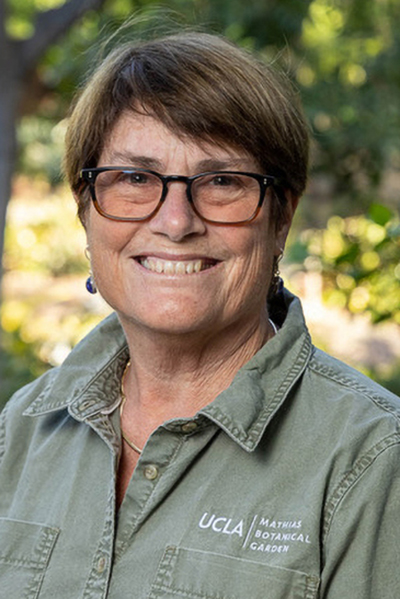
Victoria Sork
Distinguished Professor
email: vlsork@ucla.edu
phone: 310-825-7755
office: 4139 Terasaki Life Science Bldg (TLSB)
website
Recent Courses
EE BIOL 194B - Research Group or Internship Seminars: Ecology and Evolutionary Biology
EE BIOL 146/246 - Conservation Genomics
EE BIOL 154 - Ecosystems of California
Research Interests
My research program examines the evolution of tree populations to their local environment as the outcome of gene flow, natural selection and their demographic history. I have selected trees as a focus of my research for many reasons?they are key determinants of their ecosystem; their long lifespan and typically high population sizes provides an interesting context for studying evolution; and their conservation not only preserves the tree species of interest by multiple trophic levels of biodiversity from the soil microbiome to the wildlife that feed on their fruit. Oaks (Quercus) in general, and valley oak (Quercus lobata Née) in particular, are an excellent study system for investigating the molecular basis of local adaptation of trees. The genus Quercus has many species through the Northern Hemisphere that are important economically and ecologically; in North American oaks have more biomass and species than pine.
Our lab has long used genetic markers as a valuable tool for studying gene flow and demographic history and in the last five years we have switched our emphasis to genomic tools for studying adaptive genetic variation. With that transition, we have increasingly focused on oaks as a model system, in particular valley oak (Quercus lobata). Below are some topics currently under investigation:
1) Valley oak as an emerging model system. To support research on valley oak, we have created a high quality, well annotated genome of valley oak and two common gardens containing over 600 families derived from throughout the species range. The genome provides an essential too
2) Evolution of local adaptation. For this research theme, we are conducting studies on landscape and ecological genomics of trees, transcriptomic studies of gene expression in response to water stress, and epigenetic studies of DNA methylation patterns across environments.
3) Molecular ecology of pollen- and seed-mediate gene movement. For many years, our lab has used genetic markers to study pollen and seed dispersal to understand how these processes affect genetic diversity within populations and and connectivity among populations. With new genomic tools, we can now study how these processes affects patterns of adaptive genetic variation that may be critical for survival.
4) Phylogeography and geographic patterns of genetic variation. Phylogeography is the study of geographic patterns of genetic lineages with the goal of understanding how the physical landscape (e.g. mountains, valleys, water bodies) and climate cycles shape the evolutionary history of species, the emergence of new species, and the extinction of others.
5) Hybridization and introgression. Interspecific gene flow is a potential source of genetic variation, including favorable variants that may allow plants to survive better locally. My research program explores hybridization and ancient introgression in California oaks from a population and phylogenetic perspective.
6) Conservation science of trees. Through the integration of genomic studies and the analysis of phenotypic variation observed in the two common gardens, we are developing models of how valley oak will respond to climate change. Such information will be critical in developing specific management strategies for this species, and rules of thumb for tree species in general.
In all these topics, my research integrates genetic patterns across scales that range from a single nucleotide base in a DNA sequence of plant to the landscape to the species' range. This work addresses fundamental questions about the evolutionary ecology of tree species and utilizes that information to inform policies about reserve networks that will optimize their survival in constantly changing landscapes and rapidly changing environment.
Selected Publications
Sork VL*, SJ Cokus*, ST Fitz-Gibbon*, AV Zimin, D Puiu, JA Garcia, PF Gugger, C Henriquez, Y Zhen, KE Lohmueller, M Pellegrini, SL Salzberg. 2022. High-quality genome and methylomes illustrate features underlying the evolutionary success of oaks. *equal co-authors. Nature Communications 13:1-15. https://doi.org/10.1038/s41467-022-29584-y
Hvilsom, C, G Segelbacher, R Ekblom, MC Fischer, L Laikre, K Leus, D O´Brien, R Shaw, V Sork. 2022.Selecting species and populations for monitoring of genetic diversity. Gland, Switzerland: IUCN. https://doi.org/10.2305/IUCN.CH.2022.07.en
Shaffer, HB, E Toffelmier, RB Corbett-Detig, M Escalona, B Erickson, P Fiedler, M Gold, RJ Harrigan, S Hodges, TK Luckau, C Miller, DR Oliveira, KE Shaffer, B Shapiro, VL Sork, and IJ Wang. 2022. Landscape genomics to enable conservation actions: The California Conservation Genomics Project. J. Heredity. DOI: 10.1093/jhered/esac020
O’Donnell, S, ST Fitz-Gibbon, and VL Sork 2021. Ancient introgression between distantly related white oaks (Quercus sect Quercus) shows evidence of climate-associated asymmetric gene exchange. J. Heredity 112: 663-670
Sork, VL, and JW Wright. 2021. Replanting oaks? New research in valley oak may help inform seed sourcing decisions. Artemesia 8 (2): 13-18.
Browne, L, B MacDonald, S Fitz-Gibbon, JW Wright, and VL Sork. 2021. Genome-wide variation in DNA methylation predicts variation in leaf traits in an ecosystem-foundational oak species. Forests 12: 569.https://doi.org/10.3390/f12050569
Gugger PF, ST Fitz-Gibbon, A Albarrán-Lara, JW Wright, VL Sork. 2021. Landscape genomics of Quercus lobata reveals genes involved in local climate adaptation at multiple spatial scales. Molecular Ecology 30: 406-423. https://doi.org/10.1111/mec.15731
Browne L, A Mead, C Horn, K Chang, Z Celikkol, C Henriquez, F Ma, E Beraut, R Meyer, VL Sork. 2020. Experimental DNA demethylation affects phenotype and gene expression of tree seedlings. G3: Genes|Genomes|Genetics 10:1019-1028 doi.org/10.1534/g3.119.400770
Browne L, JW Wright, ST Fitz-Gibbon, PF Gugger, VL Sork. 2019. Adaptational lag to temperature in valley oak (Quercus lobata) can be mitigated by genome-informed assisted gene flow. Proceedings of the National Academy of Sciences 116(50): 25179-25185 https://doi.org/10.1073/pnas.1908771116
Mead A, J Peñaloza Ramirez, MK Bartlett, JW Wright, L Sack, VL Sork. 2019. Seedling response to water stress in valley oak (Quercus lobata) is shaped by different gene networks across populations. Molecular Ecology 23: 5248-5264 https://doi.org/10.1111/mec.15289
Kim B, X Wei, ST Fitz-Gibbon, KE Lohmueller, J Ortego, PF Gugger, VL Sork. 2018. RADseq data reveal ancient, but not pervasive, introgression among Californian tree and scrub oak species (Quercus: Fagaceae). Molecular Ecology, 27: 4556-4571. DOI: 10.1111/mec.14869.
Martins, K, PF Gugger, J Llanderal-Mendoza, A González-Rodríguez, ST Fitz-Gibbon, J-L Zhao, K Oyama, VL Sork. 2018. Landscape genomics provides evidence of climate-associated adaptive genetic variation in Mexican populations of Quercus rugosa. Evolutionary Applications 11: 1842-1858. DOI:10.1111/eva.12684.
Browne L, K Ottewell, VL Sork, J Karubian. 2018. The relative contributions of seed and pollen dispersal to gene flow and genetic diversity in seedlings of a tropical palm. Molecular Ecology 27:3159–3173.
Sork VL. 2018. Genomic studies of local adaptation in natural plant populations. Journal of Heredity. 109:3–15. DOI: 10.1093/jhered/esx091.
Ortego J, PF Gugger, VL Sork. 2018. Genomic data reveal cryptic lineage diversification and introgression in Californian golden cup oaks (section Protobalanus). New Phytologist 218:804–818. DOI: 10.1111/nph. 14951
Debra Shier
Assistant Adjunct Professor
email: dmshier@g.ucla.edu
phone:
office: 4318 Life Science Building (LSB)
website
Recent Courses
EE BIOL 151B - Field Tropical Ecology
ENVIRON 180B - Practicum in Environmental Science
Research Interests
Dr. Debra Shier is the Brown Endowed Associate Director of Recovery Ecology. She runs a growing program focused on threatened and endangered mammals and frogs in the Southwest. For over 20 years she has been studying the ways in which an understanding of animal behavior and ecology can be applied to conservation strategies such as reintroductions and translocations. In general, her research has focused on using basic theory to create effective and efficient relocation methods by encouraging settlement, dampening stress, and increasing fitness with an emphasis on behavioral competency. Her research collaboration with our Genetics division includes landscape level genetics to inform reserve management practices and species recovery. More recently, her research has expanded into local restoration and examining anthropogenic effects on wildlife behavior, fitness and persistence.
On campus at the San Diego Zoo Safari Park, Dr. Shier currently runs a captive breeding/reintroduction program for the endangered pacific pocket mouse that focuses on survival skill development, sensory ecology, mate choice, foraging, antipredator behavior, stress and genetic management. Off campus, she has domestic projects throughout San Diego, Orange, Riverside and San Bernardino Counties which include research on reintroduction and translocation biology, effects of light and sound on nocturnal species, effects of stress in relocation and range-wide genetics. She is also a part of an international collaboration on Tasmanian devil reintroduction. Her model species include: Stephens? and San Bernardino kangaroo rats, California ground squirrel, Pacific and Los Angeles pocket mice, Black-tailed prairie dogs, Ringtails, Tasmanian devils, and Mountain Yellow-legged frog. In her capacity as an adjunct faculty member at UCLA she also studies, Poison dart frogs and Neotropical harvestmen.
Dr. Shier received a B.S. degree in biopsychology from University of California, Santa Barbara. She received a M.S. degree in Biology with an emphasis in Ecology and Systematics from San Francisco State University. She received M.S. and Ph.D. degrees in Animal Behavior with an emphasis in Wildlife Conservation from University of California, Davis.
Selected Publications
Harvey, Brigit D.; Vanni, Kaylee N.; Shier, Debra M and Grether, Greg, "Experimental test of the mechanism underlying sexual segregation at communal roosts of harvestmen (Prionostemma spp.)", Ethology, 123 (8): 516-525 (2017) .
Grueber, Catherine E.; Reid-Wainscoat, Elizabeth E.; Fox, Samantha, Katherine Belov, Debra M. Shier, Carolyn J. Hogg & David Pemberton, "Increasing generations in captivity is associated with increased vulnerability of Tasmanian devils to vehicle strike following release to the wild", Scientific Reports, 7 : 2161- (2017) .
Shier, Debra M., "Manipulating animal behavior to ensure reintroduction success", In: Conservation Behavior: Applying Behavioral Ecology to Wildlife Conservation and Management, Berger-Tal, Oded
Saltz, David(Eds.), Cambridge Cambridge University Press 7 : 275-304 (2016) .
Hennessy, S. McCullough; Deutschman, D. H.; Shier, D. M. and Swaisgood, R.R., "Experimental habitat restoration for conserved species using ecosystem engineers and vegetation management", Animal Conservation, Berger-Tal, Oded
Saltz, David(Eds.), 19 (6): 506-514 (2016) .
Debra M. Shier, "Developing a standard for evaluating reintroduction success using IUCN Red List indices", Animal Conservation, Berger-Tal, Oded
Saltz, David(Eds.), 18 (5): 411-412 (2015) .
Grether, Gregory F.; Levi, Abrahm; Antaky, Carmen and Shier, Debra M., "Communal roosting sites are potential ecological traps: experimental evidence in a Neotropical harvestman", Behavioral Ecology and Sociobiology, Berger-Tal, Oded
Saltz, David(Eds.), 68 (10): 1629-1638 (2014) .
Moehrenschlager, A.
Shier, D. M.
Moorhouse, T. P.
Stanley Price, M. R., "Righting past wrongs and ensuring the future: challenges and opportunities for effective reintroductions amidst a biodiversity crisis", Key Topics in Conservation Biology 2, D. W. Macdonald
K. J. Willis(Eds.), Oxford John Wiley & Sons 68 (10): 405-429 (2013) .
Shier, D. M.; Lea, A. J.; Owen, M. A., "Beyond masking: Endangered Stephen's kangaroo rats respond to traffic noise with footdrumming", Biological Conservation, D. W. Macdonald
K. J. Willis(Eds.), 150 (1): 53-58 (2012) .
Shier, Debra M.; Swaisgood, Ronald R., "Fitness Costs of Neighborhood Disruption in Translocations of a Solitary Mammal", Conservation Biology, D. W. Macdonald
K. J. Willis(Eds.), 26 (1): 116-123 (2012) .
Shier, D.M., "Prairie dogs", In: Exotic pet behavior, Valerie Tynes, DVM(Eds.), Wiley & Sons 26 (1): 148-156 (2010) .

Karen Sears
Professor
email: ksears@ucla.edu
phone:
office: 4113 Life Sciences Building (LSB)
website
Recent Courses
Research Interests
Organismal form is the product of a complex suite of interacting developmental processes. Variation in these processes allows mammals to adapt to changing environments, but also generates congenital malformations in humans. Developmental variation therefore presents a unifying concept for evolutionary biology and biomedicine, whose understanding is critical to the success of both fields. My primary research goals are to determine how developmental variation interacts with environmental factors within a species to produce congenital malformations in humans, and among species to generate new evolutionary adaptations in mammals. To pursue these goals, I characterize developmental variation across biological scales, and interpret how this variation drives evolution and malformations in form. I incorporate data from fields from paleontology to mathematics to genomics to developmental biology. I also study multiple model and non-model mammals (e.g., mouse, bat, cat, deer, horse, pig, opossum). I use this approach to investigate three major topics: mammalian limb evolution and development, major evolutionary transformations during mammalian evolution, and mammalian sensory system evolution.
Selected Publications
Yohe LR, Davies KTJ, Simmons NB, Sears KE, Dumont ER, Rossiter SJ, Dávalos LM, "Evaluating the performance of targeted sequence capture, RNA-Seq, and degenerate-primer PCR cloning for sequencing the largest mammalian multigene family", Molecular ecology resources, - (2019) .
Kelly, E., Marcot, J., Selwood, L., Sears, K.E., "The development of integration in marsupial and placental limbs", Integrative Organismal Biology, - (2019) [link].
Hedrick, B.P., Mutumi, G.L., Munteanu, V.D., Sadier, A., Davies, K.T.J., Rossiter, S.J., Sears, K.E., Davalos, L.M., Dumont, E.R., "Morphological diversification under high integration in a hyper-diverse mammal clade", Journal of Mammalian Evolution, - (2019) [link].
Cooper LN, Sears KE, Armfield BA, Kala B, Hubler M, Thewissen JGM, "Review and experimental evaluation of the embryonic development and evolutionary history of flipper development and hyperphalangy in dolphins (Cetacea: Mammalia)", Genesis (New York, N.Y. : 2000), 56 (1): - (2018) .
Teeling, E., Vernes, S., Davalos, L.M., Ray, D.A., Gilbert, M.T.P., Myers, E., Bat1K Consortium (includes Sears, K.E.), "Bat biology, genomes, and the Bat1K project: To generate chromosome-level genomes for all living bat species", Annual Review of Animal Biosciences, 56 (1): 23-46 (2018) [link].
Sears, K.E., Maier, J.A., Sadier, A., Sorensen, D., Urban, D.J., "Timing the developmental origins of mammalian limb diversity", Genesis, 56 (1): - (2018) [link].
Sadier A, Davies KT, Yohe LR, Yun K, Donat P, Hedrick BP, Dumont ER, Dávalos LM, Rossiter SJ, Sears KE, "Multifactorial processes underlie parallel opsin loss in neotropical bats", eLife, 7 : - (2018) .
Yohe LR, Abubakar R, Giordano C, Dumont E, Sears KE, Rossiter SJ, Dávalos LM, "Trpc2 pseudogenization dynamics in bats reveal ancestral vomeronasal signaling, then pervasive loss", Evolution; international journal of organic evolution, 71 (4): 923-935 (2017) .
Maier JA, Rivas-Astroza M, Deng J, Dowling A, Oboikovitz P, Cao X, Behringer RR, Cretekos CJ, Rasweiler JJ 4th, Zhong S, Sears KE, "Transcriptomic insights into the genetic basis of mammalian limb diversity", BMC evolutionary biology, 17 (1): 86- (2017) .
Anthwal, N., Urban, D.J., Luo, Z-X., Sears, K.E., and Tucker, A., "Breakdown of Meckel's cartilage provides clues to the evolution of mammals", Nature Ecology and Evolution, 17 (1): - (2017) [link].
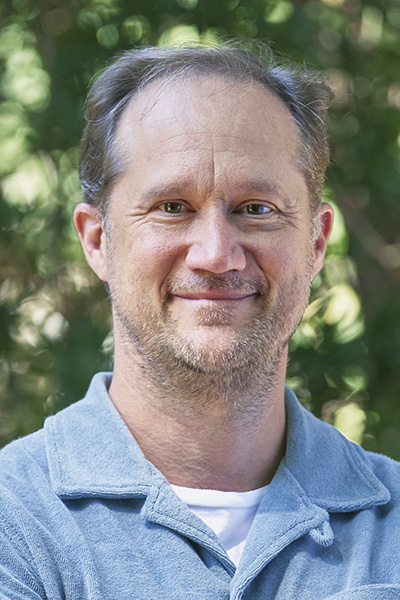
Van Savage
Professor
email: vsavage@ucla.edu
phone: 66692
office: 510F Boyer Hall
Recent Courses
BIOENGR CM186 | C&S BIO M186 | COM SCI CM186 | EE BIOL M178 - Computational Systems Biology: Modeling and Simulation of Biological Systems
BIOENGR CM186 (1B) | BIOENGR CM286 (1B) | C&S BIO M186 (1B) | COM SCI CM186 (1B) | COM SCI CM286 (1B) | EE BIOL M178 (1B) - Computational Systems Biology: Modeling and Simulation of Biological Systems
BIOMATH 200 - Research Frontiers in Biomathematics
Research Interests
I am a Professor in the Ecology and Evolutionary Biology and Computational Medicine departments. A major goal of my research is to quantify and understand the possible functions, forms, and interactions of biological systems that result in the extraordinary diversity in nature. I have studied a wide range of areas such as metabolic scaling, consumer-resource interactions, rates of evolution, effects of global warming on ecosystems, tumor growth, and sleep. Many theories, including some of my work, focus on optimal or average properties, but more recently, I have been working to obtain the large amounts of data necessary to characterize variation in key properties. My new findings about the diversity and variation in form and function are revealing flaws in current models, and I am working to develop new theories that incorporate realistic amounts of natural variation.
Selected Publications
https://www.pnas.org/doi/abs/10.1073/pnas.1015178108
https://besjournals.onlinelibrary.wiley.com/doi/abs/10.1111/1365-2656.12081
https://www.nature.com/articles/nature11131
https://www.pnas.org/doi/abs/10.1073/pnas.1813723116
https://www.pnas.org/doi/abs/10.1073/pnas.1012194108
https://www.nature.com/articles/s41540-018-0069-9
https://www.nature.com/articles/s41396-018-0241-7
https://www.science.org/doi/abs/10.1126/sciadv.aba0398
https://royalsocietypublishing.org/doi/abs/10.1098/rsif.2020.0624
https://www.nature.com/articles/d41586-019-02918-5
https://journals.plos.org/ploscompbiol/article?id=10.1371/journal.pcbi.1004455
https://royalsocietypublishing.org/doi/abs/10.1098/rsif.2019.0391
https://www.frontiersin.org/articles/10.3389/fevo.2021.691830/full
C. Kempes and V.M. Savage, "When science hits a limit, learn to ask different questions", Aeon, - (2018) [link].
J.N. Pruitt, A. Berdahl, C. Riehl, N. Pinter-Wollman, H.V. Moeller, E.G. Pringle, L.M. Aplin, E.J.H. Robinson, J. Grilli, P. Yeh, V.M. Savage, M.H. Price, J. Garland, I.C. Gilby, M.C. Crofoot, G.N. Doering, E.A. Hobson, "Social tipping points in animal societies", Aeon, 285 (1887): 20181282- (2018) .
E. Tekin*, P. Yeh, and V.M. Savage, "General form for interaction measures and framework for deriving higher-order emergent effects", Frontiers in Ecology and Evolution, 6 : 166- (2018) .
M. Cruz-Loya*, T. Kang, N. Lozano, R. Watanabe, E. Tekin*, R. Damoiseaux, V.M. Savage, and P. Yeh, "Stressor interaction networks suggest antibiotic resistance co-opted from stress responses to temperature", The ISME Journal, 6 : - (2018) [link].
E. Tekin*, C. White, T. Kang, N. Singh, M. Cruz-Loya, R. Damoiseaux, V.M. Savage,
and P. Yeh, "Prevalence and patterns of higher-order drug interactions in Escherichia coli", npj Nature Systems Biology and Applications, 4 (31): - (2018) .
L. Lee*, V.M. Savage, and P. Yeh, "Intermediate levels of antibiotics may increase diversity of colony size phenotype in bacteria", Computational and Structural Biotechnology, 16 : 307-315 (2018) .
V.M. Savage, "An overconfident public learns the limits of predictive technology", Zocalo Public Square, 16 : - (2017) [link].
S.S. Chang, S. Tu, KI. Naek, A. Pietersen, Y.H. Liu, V.M. Savage, S.P.L. Hwang, T.K. Hsiai, and M. Roper, "An overconfident public learns the limits of predictive technology", Optimal occlusion uniformly partitions red blood cells fluxes within a microvascular network, PLoS Computational Biology 13 (12): - (2017) .
B.J. Enquist, L.P. Bentley, A. Shnekin, B. Maitner, V.M. Savage, S. Michaeltz, B. Blonder, V. Buzzard, T.E.B. Espinoza, W. Farfan-Rios, C. Doughty, G.R. Goldsmith, R.E. Martin, N. Salinas, M. Silman, S. Diaz, G.P. Asner, and Y. Malhi, "Assessing trait-based scaling theory in tropical forests spanning a broad temperature gradient", Global Ecology and Biogeography, 26 (12): - (2017) [link].
E. Tekin*, V.M. Savage, and P. Yeh, "Measuring higher-order drug interactions: A review of recent approaches", Current Opinion in Systems Biology, 4 : 16-23 (2017) .
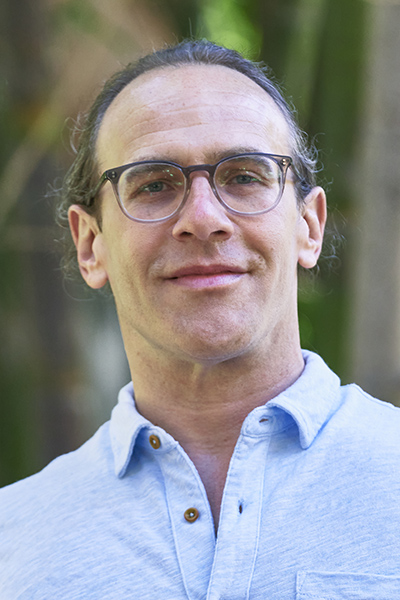
Lawren Sack
Professor
email: lawrensack@ucla.edu
phone: (310) 825-6525
office: 410P Botany
website
Recent Courses
EE BIOL 162 - Plant Physiology
EE BIOL 194B - Research Group or Internship Seminars: Ecology and Evolutionary Biology
Research Interests
We are interested broadly in mechanisms underlying function and co-existence of plant species-- including responses to resources, tolerance of environmental challenges, and competition-- as well as the evolution and functional consequences of diversity in plant traits. We explore processes across scales ranging from molecules to ecosystems.
Examples of current research areas include hydraulics of leaves and whole plants; evolution and functional consequences of diversity in leaf designs; plant responses to resource supply combinations; scaling laws of plant design during evolution and ontogeny; evolutionary, ecological and conservation plant physiology; ecohydrology of native vs invasive dominated forests.
Selected Publications
Earles JM, Buckley TN, Brodersen CR, Busch FA, Cano FJ, Choat B, Evans JR, Farquhar GD, Harwood R, Huynh M, John GP, Miller ML, Rockwell FE, Sack L, Scoffoni C, Struik PC, Wu A, Yin X, Barbour MM., "Embracing 3D complexity in leaf carbon-water exchange", Trends in Plant Science, - (2018) [link].
Fletcher L, Cui H, Callahan H, Scoffoni C, John G, Bartlett M, Burge D, Sack L., "Evolution of leaf structure and drought tolerance in species of Californian Ceanothus", American Journal of Botany, - (2018) [link].
Medeiros C, Scoffoni C, John GP, Bartlett M, Inman-Narahari F, Ostertag R, Cordell S, Giardina C, Sack L., "An extensive suite of functional traits distinguishes wet and dry Hawaiian forests and enables prediction of species vital rates", Functional Ecology, - (2018) [link].
Scoffoni C, Albuquerque C, Cochard H, Buckley TN, Fletcher LR, Caringella MA, Bartlett M, Brodersen CR, Jansen S, McElrone AJ, Sack L., "The causes of leaf hydraulic vulnerability and its influence on stomatal conductance and photosynthetic rate in Arabidopsis thaliana", Plant Physiology, - (2018) [link].
Craven D, Knight TM, Barton KE, Bialic-Murphy L, Cordell S, Giardina CP, Gillespie TW, Ostertag R, Sack L, Chase JM., "OpenNahele: the open Hawaiian forest plot database", Biodiversity Data Journal, 6 : e28406- (2018) .
Ibanez T, Keppel G, Baider C, Birkinshaw C, Culmsee H, Cordell S, Florens V, Franklin J, Giardina C, Gillespie T, Laidlaw M, Litton C, Martin T, Ostertag R, Parthasarathy N, Randrianaivo R, Randrianjanahary M, Rajkumar M, Rasingam L, Ratovoson F, Reza L, Sack L, Aiba S, Webb E, Whitfeld T, Zang R, Birnbaum P., "Regional forcing explains local species diversity and turnover on tropical islands", Global Ecology and Biogeography, 4 : 474-486 (2018) .
John GP, Henry C, Sack L., "Leaf rehydration capacity: associations with other indices of drought tolerance and environment", Plant, Cell & Environment, 41 : 2638-2653 (2018) .
Johnson DJ, Needham J, Xu C, Massoud EC, Davies SJ, Anderson-Teizeira KJ, Bunyavejchewin S, Chambers JQ, Chang-Yang CH, Chiang JM, Chuyong GB, Ondit R, Cordell S, Fletcher C, Giardina CP, Giambelluca TW, Gunatilleke N, Gunatilleke S, Sieh CF, Hubbell S, Inman-Narahari F, Kassim AR, Katabuchi M, Kenfack D, Litton CM, Lum S, Mohamad M, Musalmah N, Ong PS, Ostertag R, Sack L, Swenson NG, Umana MN, Uriarte M, Valencia R, Yap S, Zimmerman JK, McDowell NG, McMahon SM., "Climate sensitive size-dependent survival in tropical trees", Nature Ecology and Evolution, 2 : 1436-1442 (2018) .
LaManna JA, Mangan, SA, Alonso A, Bourg NA, Brockelman WY, Bunyavejchewin S, Chang L-W, Chiang J-M, Chuyong GB, Clay K, Condit R, Cordell S, Davies SJ, Furniss TJ, Giardina CP, Gunatilleke IAUN, Gunatilleke CVS, He F, Howe RW, Hubbell SP, Hsieh C-F, Inman-Narahari FM, Jan�k D, Johnson DJ, Kenfack D, Korte L, Kral K, Larson AJ, Lutz JA, McMahon SM, McShea WJ, Memiaghe HR, Nathalang A, Novotny V, Ong PS, Orwig DA, Ostertag R, Parker GG, Phillips RP, Sack L, Sun I-F, Tello JS, Thomas DW, Turner BL, Vela Diaz DM, Vr?ka T, Weiblen GD, Wolf A, Yap S, Myers JA, "Response to Comment on 'Plant diversity increases with the strength of negative density dependence at the global scale'", Science, 360 : eaar3824- (2018) .
LaManna JA, Mangan, SA, Alonso A, Bourg NA, Brockelman WY, Bunyavejchewin S, Chang L-W, Chiang J-M, Chuyong GB, Clay K, Condit R, Cordell S, Davies SJ, Furniss TJ, Giardina CP, Gunatilleke IAUN, Gunatilleke CVS, He F, Howe RW, Hubbell SP, Hsieh C-F, Inman-Narahari FM, Jan�k D, Johnson DJ, Kenfack D, Korte L, Kr�l K, Larson AJ, Lutz JA, McMahon SM, McShea WJ, Memiaghe HR, Nathalang A, Novotny V, Ong PS, Orwig DA, Ostertag R, Parker GG, Phillips RP, Sack L, Sun I-F, Tello JS, Thomas DW, Turner BL, Vela D�az DM, Vr?ka T, Weiblen GD, Wolf A, Yap S, Myers JA. 2018., "Response to Comment on ?Plant diversity increases with the strength of negative density dependence at the global scale"", Science, 360 : eaar5245- (2018) .

Philip Rundel
Distinguished Professor Emeritus
email: rundel@biology.ucla.edu
phone: (310) 825-4072
office: 3112 Life Sciences Building (LSB)
Recent Courses
EE BIOL 116 - Conservation Biology
EE BIOL 154 - California Ecosystems
EE BIOL 19 - Fiat Lux Freshman Seminars
Research Interests
Our laboratory maintains a breadth of interests centering on aspects of vascular plant adaptation to environmental water and nutrient stress. Within this context we have focused particularly on the interactions of physiological water stress and nutrient availability in limiting net primary production of arid zone plants. We are looking intensively at the relationship of seasonal changes in morphological, architectural and physiological components of plant form and function in woody desert legumes and evergreen shrubs. Our approaches in these investigations involve analysis of components of tissue water relations, photosynthetic capacity, foliar nutrient levels, leaf morphology and canopy architecture. We are very interested in applications of stable isotope ratios to ecological research studies as a means of developing integrated measurements of physiological response to environmental stress. Such measures will help us link physiological process studies to an ecosystem perspective. In addition to our work on desert ecosystems, my laboratory group maintains interests in several other areas. These include the physiological ecology of plant species in Mediterranean-type and tropical ecosystems, parallel with our desert research. We are also investigating the impact of air pollutants on photosynthetic capacity and productivity of coniferous forest trees in California.
Selected Publications
Riordan, E.C. and P.W. Rundel, "The future of California sage scrub in an era of increasing urbanization and global climate change", Fremontia, 41 (3): 2-7 (2013) .
Rundel P.W. and R.M. Cowling., "Biodiversity of the Succulent Karoo", Encyclopedia of Biodiversity, 2nd edition, Levin S.A.(Eds.), Waltham, MA Academic Press 1 : 485-490 (2013) .
Moroney, J. and P.W. Rundel, "Density and dispersion of the invasive Mediterranean annual Centaurea melitensis in its native and non-native ranges", Biological Invasions, Levin S.A.(Eds.), 15 : 495-507 (2013) .
Pivovaroff, A., R. Sharifi, C. Scoffoni, L. Sack and P. Rundel, "Making the best of the worst of times: traits underlying combined shade and drought tolerance of Ruscus aculeatus and R. microglossum", Functional Plant Biology, Levin S.A.(Eds.), 15 : - (2013) [link].
Rundel, P.W. and R.M. Cowling, "Mediterranean-climate ecosystems", Encyclopedia of Biodiversity, 2nd ed, Levin, S(Eds.), Oxford Elsevier 15 : - (2013) .
Keeley, J.E., C.J. Fotheringham and P.W. Rundel, "Postfire chaparral regeneration under mediterranean and non-mediterranean climates", Madrono, Levin, S(Eds.), 59 : 109-127 (2012) .
Graham, E.A., P.W. Rundel, W. Kaiser, Y. Lam, M. Stealey and E.M. Yuen, "Fine-scale patterns of soil and plant surface temperatures in an alpine fellfield habitat, White Mountains, California", Arctic, Antarctic, and Alpine Research, Levin, S(Eds.), 44 : 288-295 (2012) .
Keeley, J.E.,W.A. Bond, R.J. Bradstock, J.G. Pausas and P.W. Rundel, "Fire in Mediterranean Ecosystems: Ecology, Evolution and Management", Arctic, Antarctic, and Alpine Research, Levin, S(Eds.), Cambridge Cambridge University Press 44 : - (2012) .
Zutta, B.R., P.W. Rundel, S. Saatchi, J.D. Casana, P. Gauthier, A. Soto, Y. Velazco and W. Buermann, "Prediciendo la distribucion de Polylepis: bosques Andinos vulnerable y cada vez mas importantes", Revue Peruana de Biologia, Levin, S(Eds.), 19 : 205-212 (2012) .
Balderama, E., R.P. Schoenberg, E. Murray, and P.W. Rundel, "Application of branching models to the study of invasive species", Journal of the American Statistical Association, Levin, S(Eds.), 107 : 467-476 (2012) .

Noa Pinter-Wollman
Professor
email:
phone:
office: 310H Botany
website
Recent Courses
EE BIOL 129- Animal Behavior
EE BIOL 188- Special Courses in Ecology and Evolutionary Biology
Research Interests
Many biological systems are complex aggregates of multiple agents working together towards collective, higher-order goals, and evolution acts on variation in these emergent collective properties. There is no central control dictating the activities of members in the assembly. Instead, agents use local signals that determine their behavior and are received through an intricate interaction network resulting in collective phenotypes. Thus, the composition of a group and the way its members interact affects the success of the group as a whole, just as the composition of any sports team dictates its success in the league.
The Pinter-Wollman lab examines the emergence of collective outcomes from group composition by combining field and lab studies with computer simulations, theoretical work, image analysis, and social network analysis.
Selected Publications
Barbee B. & Pinter-Wollman N. 2022. Nutritional needs and predation risk combine to shape foraging decisions in ants. Current Zoology. zoac089 (link) https://doi.org/10.1093/cz/zoac089
Madrzyk M. & Pinter-Wollman N. 2022 Colonies of ants allocate exploratory individuals to where they are ecologically needed. Current Zoology. zoac065 (link) https://doi.org/10.1093/cz/zoac065
Michelangeli M., Martin J.M., Pinter-Wollman N., Ioannou C.C., McCallum E.S., Bertram M.G. & Brodin T. 2022 Predicting the impacts of chemical pollutants on animal groups. TREE. 37(9): 789-802 (link) (PDF) https://doi.org/10.1016/j.tree.2022.05.009
O’Fallon S., Horna Lowell E.S., Daniels D. & Pinter-Wollman N. 2022 Extrinsic and intrinsic effects on nest architecture. Behavioral Ecology arac026 (PDF)
https://doi.org/10.1093/beheco/arac026
Newmann K. & Pinter-Wollman N. 2022. The effect of resource availability on interspecific competition between a native and an invasive ant. Philosophical Transactions of the Royal Society B. 377:20210146 https://doi.org/10.1098/rstb.2021.0146 (PDF)
Sharma N., Gadagkar R. & Pinter-Wollman N. 2022. A reproductive heir has a central position in multilayer social networks of primitively eusocial paper wasps. Animal Behaivour.185: 21-36. https://doi.org/10.1016/j.anbehav.2021.12.011
Miller J.S., Wan E., O’Fallon S. & Pinter-Wollman N. 2021.Modularity and connectivity of nest structure scale with colony size. Evolution. doi:10.1111/evo.14402 (PDF) (bioRxiv)
Lemanski N., Cook C.N., Ozturk C., Smith B. & Pinter-Wollman N. 2021. The effect of individual learning on collective foraging in honey bees in complex environments. Animal Behaviour. 179: 113-123 https://doi.org/10.1016/j.anbehav.2021.06.033
Hobson E.#, Silk M.#, Fefferman N.H., Larremore D., Rombach M., Shay S., & Pinter-Wollman N. 2021. A guide to choosing and implementing reference models for social network analysis. Biological Reviews. doi: 10.1111/brv.12775 (PDF)
Peter Nonacs
Professor
email: pnonacs@biology.ucla.edu
phone: (310) 206-7332
office: 310G Botany
website
Recent Courses
EE BIOL 132 - Field Behavioral Ecology
EE BIOL 250 - Professional Skills for Biological Research
EE BIOL C126 | EE BIOL C242 - Behavioral Ecology
Research Interests
My overall research program intersects Evolutionary and Behavioral Ecology. I explore both evolutionary why questions and behavioral how questions. For the past three years we have produced several high quality and interesting pieces of work. It is also important to take into account my research ethos. Much of my work is conceptual and theoretical; done alone or in collaboration with individual students to develop theory for their thesis projects. I have 7 ongoing areas of research.
1. Skew
In 1992 Kern Reeve and I published an experimental paper that laid out and provided a test of Reproductive Skew Theory (RST). The basic premise was that cooperative breeding between two or more individuals could enhance the evolutionary fitness of all participants as long as they agreed on a mutually satisfactory apportionment of reproduction (i.e., the skew). The key variable in this transactional framework was genetic relatedness, such that skew could always be greater between closely related dominants and subordinates. Our 1992 paper and subsequent theoretical and experimental papers created great excitement within the behavioral and molecular ecology communities as ?skew? could be a Rosetta Stone for understanding the evolution of stable cooperation.
For the time period of 2006-11, an average of almost 15 papers a year were published on RST (as found in a Web-of-Science search for RST as a topic). However, as RST was reaching its zenith of popularity, I was having grave problems with the idea. In 2006, I published two papers that I believe showed convincingly that our original work suffered from a serious methodological flaw and that relatedness appeared to play no significant role in determining cooperation. In 2007 and 2010, I published papers showing that mathematical models expanding on original work were also fundamentally flawed. Finally, in 2011 I published, with Reinmar Hager, the definite review of RST experiments and models that clearly showed RST to not be the hoped-for general solution to how cooperation as a phenomenon evolves.
Although my conclusions were strenuously opposed in print by some of my former co-authors, I believe my arguments have carried the day. From the same search as above, over the last three years only 4 papers come up as hits for RST, on average. The number of citations of yearly citations of RST are declined rapidly from its peak of 682 in 2014 (citation number always lags publication numbers!).
The paradox is that my later papers are more substantive and will stand the test of time far better than my early papers, but will be cited less (e.g., early pro-RST papers cited 80+ times; better anti-RST papers, less than 40). Their greatest value is to dissuade young researchers from going down a rabbit hole. Nevertheless, the rise and fall of RST has served a valuable purpose in sharpening thinking about cooperation, even though ultimately having failed. Reproductive skew exists as a significant phenomenon across cooperatively-breeding groups. We can now move on to more productive avenues for explaining its occurrence (e.g., my work on social heterosis).
2. Parental Investment
The connection of reproductive success to foraging strategies is the one of the dominant themes of decades of work with ants. Building on my past collaboration with Jay Rosenheim and Marc Mangel and my field work (e.g., Gilboa & Nonacs 2006), led to testing several models of parental investment theory in ants, through collection and measurement of 10,000+ individuals. This NSF-supported work is the final stages of being prepared for submission (see Enzmann and Nonacs manuscript).
3. Foraging strategies
Over the past three years, my focus has been on how ant colonies organize themselves in response to the fundamental necessity of finding food. With Amelia Yates, we found an interesting phenomenon in Argentine ants (Linepithema humile) for a foraging ?rule?. When given several paths of equal distance to a food item, the ants significantly organized to use the one with the fewest number of turns (Yates & Nonacs, 2016). The value of having such a rule is not immediately obvious and has led to subsequent work with Kaleda Denton on much more ambitious project. Here we observe ants foraging in our ?grid-world?, where different areas in which food might be found, vary in complexity and predictability. Interestingly in a more predictable world, ants become fixated on certain spots and often miss food. In fact, they are more efficient in encountering food when it is randomly and unpredictably distributed. We also found that ant foraging strategies appear to maximize rapid exploitation rather than maximization of encounters. Both Amelia and Kaleda did their work as part of their Honor?s theses.
With my incoming PhD student, Amanda Robin, we are beginning projects on how animals (squirrels in this case) decide between two food items: one which can be eaten when found or stored for later, and an alternative which must be eaten when found and cannot be cached. This will test between present and future food value in animal?s foraging behaviors.
4. Genetic Diversity
With Karen Kapheim, I have developed a new model for how genetic diversity is maintained in populations through across-genome epistasis and multilevel selection. The concepts and models we are developing have implications to understanding a wide range of infectious diseases and for the evolution of social behavior through genetically diverse groups rather than groups of closely-related kin. Most recently, I have extended this work in Frontiers in Ecology and Evolution reconciling how kin nepotism and the benefits of genetic diversity can both be incorporated in the simple framework of Hamilton?s Rule for cooperation (rb ? c > 0). The paper shows that societies of low relatedness can readily evolve as long as genetic diversity enhances group success. This framework then explaining a commonly observed phenomenon in social insect colonies: Worker drifting, where workers will abandon their natal nest and enter an unrelated one. This was assumed to be either a mistake of recognition or a selfish strategy where the worker sought to reproduce and therefore parasitize non-kin. However, drifting has been observed across many species at high frequencies that the pure mistake explanation is difficult to rationalize. Also, drifters rarely act selfishly and mostly are indistinguishable from natal workers in how they contribute to nest welfare. My models show that drifting, far from being negative, can operate as a positive indirect reciprocity for the good of all nests in a population. Exchanging sterile and hard-working offspring generates positive genetic diversity with all the attendant benefits and little to no down sides from conflict or selfish behavior.
5. General Issues about Sociality
Working with a recent graduate, Dr. Kenny Chapin, has opened up a new avenue of social evolution concerning the first steps of sociality in whip spiders (Amblypigids). Populations of whip spiders that live in caves appear to exhibit the incipient stages of a social life history when compared to solitary populations living in forests. We are currently collaborating on experimental work on how cave evolution may or may not be affected by gene flow from surface populations.
6. Intraindividual interactions.
With Dr. Chapin, we are modeling how territorial and other conflicts are resolved between pairs of animals (with the eventual application of the models to experiments with Kenny?s whip spiders). The interesting experimental result that matches our models is that animals often appear to use only assessment of their own condition, rather than appearing to assess both themselves and their opponent. Mutual assessment would appear to give superior information and therefore always be preferable to only assessing one?s self. However, our models show that the possibility that a mutual-assessor makes two errors that can sum (i.e., mis-assess both self and the opponent) can lead to dire errors. Hence, our model makes the novel prediction that species ought to have a variety of assessing strategies and not just be self or mutual-assessors. Mutual assess when small; relay primarily on self-assessing when large. When we have presented this work at conferences and seminars it has generated an excited response and we will soon be submitting it to peer-review.
7. Endosymbiont-host coevolution.
Endosymbiotic bacteria such as Wolbachia spend their entire life histories within other organisms? cells. This close proximity of endosymbiont and host genomes allows for transfers of DNA between them. Such events are observed to be strongly biased, however, with DNA migrating in the direction from cytoplasmic elements to host nuclei. Sarah Tolley and I showed, via simulations, that the dynamics of cell division can produce such a bias. Nuclear DNA is predictably distributed to offspring, but random chance plays a large role in vertical transmission of cytoplasmic elements. Thus, even if DNA initially transfers equally across genomes, transfers into host nuclei are retained more often than ones into endosymbionts. Bias in retention may also explain the extensive DNA migration from organelles like mitochondria and chloroplasts into nuclei. Consequently, biased migration has potentially interesting consequences for life history evolution, whereby genes that exchange locations also switch ?sides? for intergenomic conflict. Thus, biased migration of genes is a long-term evolutionary process favoring host interests.
Selected Publications
Chapin, K. J., Nonacs, P. and Hayes, L. D., "Evaluating an open-exam approach to engaging students in evolutionary paradoxes: Cheating to Learn", American Biology Teacher, 79 : 144-148 (2017) .
Kapheim, K. M., Chan, T. -Y., Smith, A. R., Wcislo, W. T. and Nonacs, P., "Ontogeny of division of labor in a facultatively eusocial sweat bee Megalopta genalis", Insectes Sociaux, 63 : 185-191 (2016) .
Yates, A. A. and Nonacs, P., "Preference for straight-line paths in recruitment trail formation of the Argentine ant, Linepithema humile", Insectes Sociaux, 63 : 501-505 (2016) .
Nonacs, P. and Tolley, S. J., "Certainty versus stochasticity: Cell replication biases DNA movement from endosymbionts and organelles into nuclei", Evolutionary Ecology Research, 16 : 195-202 (2014) .
Nonacs, P. and Kapheim, K. M., "Cultural evolution and emergent group-level traits through social heterosis", Behavioral and Brain Sciences, 37 : 266-267 (2014) .
Nonacs, P., "Resolving the evolution of sterile worker castes: a window on the advantages and disadvantages of monogamy", Biology Letters, 10 : 20140089- (2014) .
Kapheim, K. M. Smith, A. R. Nonacs, P., Wcislo, W. T. and Wayne, R. K., "Foundress polyphenism and the origins of eusociality in a facultatively eusocial sweat bee, Megalopta genalis (Halictidae)", Behavioral Ecology and Sociobiology, 67 : 331-340 (2013) .
Nonacs, P., "Reciprocity, reputation and nepotism", American Scientist, 99 : 422-424 (2011) .
Nonacs, P., "Kinship, greenbeards, and runaway social selection in the evolution of social insect cooperation", Proceedings National Academy of Sciences, USA, 108 (Supp. 2): 10808-10815 (2011) .
Nonacs, P. and R. Hager, "The past, present and future of reproductive skew theory and experiments", Biological Reviews, 86 : 271-298 (2011) .
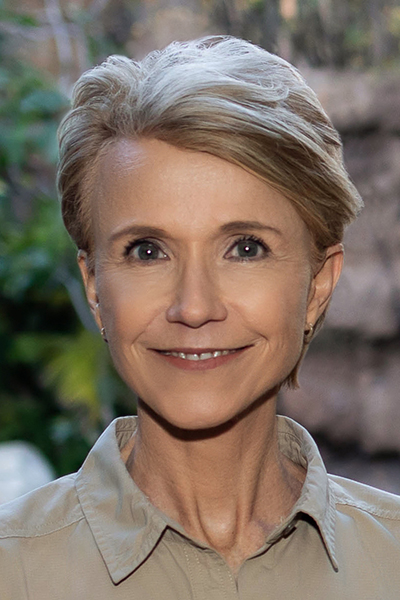
Barbara Natterson-Horowitz
Adjunct Professor
email: BNATTERSON@MEDNET.UCLA.EDU
phone: 56549
office: 47-123 CHS
Recent Courses
Research Interests
Selected Publications

Peter Narins
Distinguished Professor
email: pnarins@ucla.edu
phone: (310) 825-0265
office: 4835 Life Sciences Building (LSB)
Recent Courses
EE BIOL M290 | PHYSCI M290 - Seminar: Comparative Physiology
PHY SCI 173 - Anatomy and Physiology of Sense Organs
PHYSCI M290 - Seminar: Comparative Physiology
Research Interests
My research focuses on the question of how animals extract relevant sounds from the often highly noisy backgrounds in which they live. The techniques I use are the quantitative analysis of vocal behavior of animals in their natural habitats, followed by single fiber neurophysiological recordings in order to elucidate mechanisms underlying signal processing in noise. A second research direction is based on the discovery of the remarkable sensitivity to substrate vibrations possessed by burrowing animals. We are now characterizing and providing accurate measurements of vibrational thresholds as well as exploring the differences between substrate-vibration and airborne sound at the cellular level. Other projects carried out by our group have included an investigation of the neurophysiological basis of sound localization in noisy environments, a study of the temperature-dependence of the representation of time in the vertebrate auditory system, the biophysics of sound localization and the evolution of the middle ear reflex in vertebrates. Current projects include using laser Doppler vibrometry to elucidate the sound pathways relevant for stimulation of both the middle and inner ear in small vertebrates, and using whole-cell voltage clamp techniques to carry out an anatomical and physiological study of the mechanisms underlying transduction in vertebrate sensory hair cells. In addition, we supplement the lab work with direct behavioral observations and controlled acoustic playback studies carried out with animals in their natural habitats. These have included both Old and New World lowland wet tropical forests, African deserts and temperate forests in South America.
Selected Publications
Narins, P.M. and Meenderink, S.W.F., "Climate change and frog calls: Long-term correlations along a tropical altitudinal gradient", Proc. Roy. Soc. Lond, 281 : 1-6 (2014) .
Narins, P.M., Wilson, M. and Mann, D., "Ultrasound detection in fishes and frogs: Discovery and mechanisms", In: Insights from Comparative Hearing Research, C. Koeppl, G.A. Manley, A.N. Popper, R.R. Fay(Eds.), Heidelberg Springer-Verlag 281 : 133-156 (2014) .
Adler, K., Narins, P.M. and Ryan, M.J., "Obituary. Robert R. Capranica (1931-2012) and the Science of Anuran Communication", Herpetological Review, C. Koeppl, G.A. Manley, A.N. Popper, R.R. Fay(Eds.), 44 : 554-556 (2013) .
Miller, M.E., Nasiri, A.K., Farhangi, P.O., Farahbakhsh, N.A., Lopez, I.A., Narins, P.M. and Simmons, D.D., "Evidence for water-permeable channels in auditory hair cells in the leopard frog", Hear. Res, C. Koeppl, G.A. Manley, A.N. Popper, R.R. Fay(Eds.), 292 : 64-70 (2012) .
Manley, G.A., Narins, P.M. and Fay, R.R,, "Experiments in comparative hearing: Georg von Bekesy and beyond", Hear. Res, C. Koeppl, G.A. Manley, A.N. Popper, R.R. Fay(Eds.), 293 : 44-50 (2012) .
Cui, J., Tang, Y. and Narins, P.M., "Real estate ads in Emei music frog vocalizations: Female preference for calls emanating from burrows", Biol. Letters, C. Koeppl, G.A. Manley, A.N. Popper, R.R. Fay(Eds.), 8 : 337-340 (2012) .
Chen. H.-H. A. and Narins, P.M., "Wind turbines and ghost stories: The effects of infrasound on the human auditory system", Acoustics Today, C. Koeppl, G.A. Manley, A.N. Popper, R.R. Fay(Eds.), 8 : 51-56 (2012) .
Quinones, P.M., Luu, C., Schweizer, F.E. and Narins, P.M., "Exocytosis in the frog amphibian papilla", J. Asso. Res. Otolaryngol, C. Koeppl, G.A. Manley, A.N. Popper, R.R. Fay(Eds.), 13 : 39-54 (2012) .
Arch, V.S., Simmons, D.D., Quinones, P.M., Feng, A.S., Jiang, J., Stuart, B., Shen, J.-X., Blair, C. and Narins, P.M., "Inner ear morphological correlates of ultrasonic hearing in frogs", Hear. Res, C. Koeppl, G.A. Manley, A.N. Popper, R.R. Fay(Eds.), 283 : 70-79 (2012) .
Shen, J.-X., Xu. Z.-M., Feng, A. and Narins, P.M., "Large odorous frogs (Odorrana graminea) produce ultrasonic calls", J. Comp. Physiol, C. Koeppl, G.A. Manley, A.N. Popper, R.R. Fay(Eds.), 197 : 1027-1030 (2011) .
Jonathan Marcot
Assistant Adjunct Professor
email: jmarcot@ucla.edu
phone: 13108251282
office: 140 Hershey Hall
Recent Courses
Research Interests
Selected Publications
Glen MacDonald
Distinguished Professor
email: macdonal@geog.ucla.edu
phone: (310) 825-2568
office: 1255 Bunche Hall
Recent Courses
ENVIRON M130 | GEOG M131 - Environmental Change
GEOG 19 - Fiat Lux Freshman Seminars
GEOG 215 - Quaternary Studies: Physical Aspects
Research Interests
Glen MacDonald works on issues of climate change and ecological and societal responses. His lab uses a number of research tools to develop long temporal records of climatic and environmental change and large spatial records of such changes. These tools include biological, elemental geochemical and isotopic analysis of lake sediments and wetland sediments, tree-ring analysis, satellite remote sensing and modeling. Studies of treelines and climate change, drought and its impacts, vegetation and fire, dynamics and carbon stores of wetlands, and sea-level rise and coastal marshes have been particular foci of his research. Field sites have included Canada, the western USA, Russia, Mexico, Egypt, Syria and India. He often works with international teams of academic, government and NGO researchers. Glen believes in the public communication of science and writes and speaks frequently for more general audiences and policy makers. Glen has published over 160 scientific papers and is a Member of the National Academy of Science.
Selected Publications
Thorne, K., MacDonald, G., Guntenspergen, G., Ambrose, R., Buffington, K., Dugger, B., Freeman, C., Janousek, C., Brown, L., Rosencranz, J., Holmquist, J., Smol, J., Hargan, K. and Takekawa, J., "U.S. Pacific coastal wetland resilience and vulnerability to sea-level rise", Science Advances DOI: 10.1126/sciadv.aao3270, - (2018) .
Loisel J, MacDonald GM, Thomson MJ, "Little Ice Age climatic erraticism as an analogue for future enhanced hydroclimatic variability across the American Southwest", PLoS ONE https://doi.org/10.1371/journal.pone.0186282, - (2017) .
Leeper, R., Rhodes, B., Kirby, M., Scharer, K., Carlin, J., Hemphill-Haley, E., Avnaim-Katav, S., MacDonald, G., Starratt, S. and Aranda, A.,, "Evidence for coseismic subsidence events in a southern California coastal saltmarsh", Nature.com/Scientific Reports doi: 10.1038/srep44615, - (2017) .
MacDonald, G. M., Moser, K.A., Bloom, A. M., Potito, A.P., Porinchu, D.F., Holmquist, J.R., Hughes, J. and Kremenetski, K.V., "Prolonged California aridity linked to climate warming and Pacific sea surface temperature", Nature.Com/Scientific Reports http://www.nature.com/articles/srep33325, - (2016) [link].
MacDonald, G.M., Beilman D.W. Kuzmin, Y.V., Orlova, L.A., Kremenetski, K.V., Shapiro, B., Wayne, R.K. and Van Valkenburgh, "Pattern of extinction of the woolly mammoth in Beringia", Nature Communications DOI: 10.1038/ncomms1881, - (2012) .
Willis, K.J. and MacDonald, G.M., "Pattern of extinction of the woolly mammoth in Beringia", Annual Reviews of Ecology and Evolution 42: 267?287, - (2011) .
Woodhouse, C.A., Meko, D.M., MacDonald, G.M., Stahle, D.W. and Cook, E.R., "A 1,200-year perspective of 21st century drought in southwestern North America", Proceedings of the National Academy of Sciences 107, 21283-21288; doi:10.1073/pnas.0911197107, - (2010) .
MacDonald, G.M., "Climate Change and Water in Southwestern North America", Proceedings of the National Academy of Sciences 107, 21256-21262; doi:10.1073/pnas.0909651107, - (2010) .
MacDonald, G.M., Bennett, K.D., Jackson, S.T., Parducci, L., Smith, F.A., Smol, J.P. and Willis, K.J., "Impacts of climate change on species, populations and communities: palaeobiogeographical insights and frontiers", Progress in Physical Geography 32, 139-172, - (2008) .
MacDonald, G.M., Beilman, D.W., Kremenetski, K.V., Sheng, Y., Smith, L.C. and Velichko, A.A., "Rapid early development of the circumarctic peatlands and atmospheric CH4 and CO2 variations", Science, 314: 385-388, - (2006) .
Seth Riley
Associate Adjunct Professor
email: seth_riley@nps.gov
phone: 74746
office: RM 5324, LSB C/O DR. BOB WAYNE
Recent Courses
Research Interests
Seth's research focuses on the ecology and conservation of wildlife in fragmented urban landscapes. Specifically, this includes the behavior and ecology of wide-ranging mammalian carnivores such as mountain lions and bobcats, the effects of fragmentation and roads on the population genetic structure of wildlife (including carnivores, reptiles, and birds), and the effects of urbanization on the diversity and abundance of reptile and amphibian communities. Seth is also interested in conservation and management of wildlife in National Parks, and in the effective long-term monitoring of National Park resources.
Selected Publications
Riley, S. P. D., L. E. K. Serieys, J. P. Pollinger, J. A. Sikich, L. Dalbeck, R. K. Wayne, and H. B. Ernest, "Individual behavior dominates the dynamics of a mountain lion population in a highly fragmented urban landscape", Current Biology, 24 : 1989-1994 (2014) .
Lee, J. S., S. N. Bevins, L. E. K. Serieys, W. Vickers, K. A. Logan, M. Aldredge, E. E. Boydston, L. M. Lyren, R. McBride, M. Roelke-Parker, J. Pecon-Slattery, J. L. Troyer, S. P. Riley, W. M. Boyce, K. R. Crooks, and S. VandeWoude, "Evolution of puma lentivirus in bobcats (Lynx rufus) and mountain Lions (Puma concolor) in North America", Journal of Virology, 88 : 7727-7737 (2014) .
R. M. Troyer, J. A. Beatty, K. R. Stutzman-Rodriguez, S. Carver, C. C. Lozano, J. S. Lee, M. R. Lappin, S. P. D. Riley, L. E. K. Serieys, K. A. Logan, L. L. Sweanor, W. M. Boyce, T. W. Vickers, R. McBride, K. R. Crooks, J. S. Lewis, M. W. Cunningham, J. Rovnak, S. L. Quackenbush, S. VandeWoude, "Novel gammaherpesviruses in North American domestic cats, bobcats and pumas: identification, prevalence and risk factors", Journal of Virology, 88 : 3914-3924 (2014) .
L. B. Kats, G. Bucciarelli, T. L. Vandergon, R. L. Honeycutt, E. Mattiasen, A. Sanders, S. P.D. Riley, J. L. Kerby, and R. N. Fisher, "Effects of natural ?ooding and manual trapping on the facilitation of invasive cray?sh-native amphibian coexistence in a semi-arid perennial stream", Journal of Arid Environments, 98 : 109-112 (2013) .
Serieys, L. E. K., J. Foley, S. Owens, L. Woods, E. E. Boydston, L. M. Lyren, R. H. Poppenga, D. L. Clifford, N. Stephenson, J. Rudd, and S. P. D. Riley, "Serum chemistry, hematologic and post-mortem findings in free-ranging bobcats (Lynx rufus) with notoedric mange", Journal of Parasitology, 99 : 989-996 (2013) .
Bartos, M, S. Dao, D. Douk, S. Falzone, E. Gumerlock, S. Hoekstra, K. Kelly-Reif, D. Mori, C. Tang, C. Vasquez, J. Ward, S. Young, A. T. Morzillo, S. P. D. Riley, and T. Longcore, "Use of Anticoagulant Rodenticides in Single-Family Neighborhoods Along an Urban-Wildland Interface in California", Cities and the Environment (CATE), 4: Article 12 : - (2012) .
Bevins, S. N., S. Carver, E. E. Boydston, L. M. Lyren, M. Alldredge, K. A. Logan, S. P. D. Riley, R. N. Fisher, T. W. Vickers, W. Boyce, M. Salman, M. R. Lappin, K. R. Crooks, and S. VandeWoude, "Three pathogens in sympatric populations of pumas, bobcats, and domestic cats: Implications for infectious disease transmission", PLoS ONE, 7 : e31403- (2012) .
Carver, S., A. V. Scorza, S. N. Bevins, S. P. D. Riley, K. R. Crooks, S. Vandewoude, and M. R. Lappin, "Zoonotic parasites of bobcats around human landscapes", Journal of Clinical Microbiology, 50 : 3080-3083 (2012) .
Moriarty, J. G., L. Whited, J. A. Sikich, and S. P. D. Riley, "Use of intraperitoneal radio-transmitters to study mountain lion kittens", Wildlife Society Bulletin, 36 : 161-166 (2012) .
Moriarty, J. G., S. P. D. Riley, L. E. K. Serieys, J. A. Sikich, C. M. Schoonmaker, and R. H. Poppenga, "Exposure of wildlife to anticoagulant rodenticides at Santa Monica Mountains National Recreation Area: From mountain lions to rodents", Proceedings of the 25th Vertebrate Pest Conference, R. Timm(Eds.), University of California, Davis 36 : 144-148 (2012) .
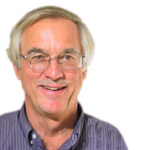
Park Nobel
Distinguished Professor Emeritus
email: psnobel@biology.ucla.edu
phone: 310-206-3903
office: 4127 Life Sciences Building (LSB)
website
Recent Courses
EE BIOL 128 - Plant Physiological Ecology
EE BIOL 146 - Physicochemical Biology
OBEE 265 - Seminar: Biophysical Plant Ecology
Research Interests
Plant physiological ecology and biophysics, with emphasis on desert plants such as agaves and cacti
Selected Publications
Nobel, P.S., "Physicochemical and Environmental Plant Physiology, 4th edition", San Diego, CA Academic Press/Elsevier 1-582 (2009) .
Nobel, P.S. and Zutta, B.R., "Temperature tolerances for stems and roots of two cultivated cacti, Nopalea cochenillfera and Opuntia robusta: Acclimation, light, and drought", Journal of Arid Environments, 72 : 633-642 (2008) .
Nobel, P.S. and Zutta, B.R., "Carbon dioxide uptake, water relations, and drought survival for Dudleya saxosa, the ?rock live-forever?, growing in small soil samples", Functional Ecology, 21 : 698-704 (2007) .
Pimienta-Barrios, E., Castillo-Cruz, I., Za�udo-Hernandez, J., M�ndez-Mor�n, L., and Nobel, P.S., "Effects of shade, drought, and daughter cladodes on the CO2 uptake by cladodes of Opuntia ficus-indica", Functional Ecology, Annals of Applied Biology 151 : 137-144 (2007) .
Nobel, P.S. and B.R. Zutta, "Carbon dioxide uptake, water relations, and drought survival for Dudleya saxosa, the ?rock live-forever?, growing in small soil samples", Journal of Arid Environments, 69 : 15-28 (2007) .
Nobel, P.S., "Parenchyma?chlorenchyma water movement during drought for the hemiepiphytic cactus Hylocereus undatus", Annals of Botany, 97 : 469-474 (2006) .
Ben-Asher, J., Nobel, P.S., Yossov, E., Mizrahi, Y., "Net CO2 uptake rates for Hylocereus undatus and Selenicereus megalanthus under field conditions: Drought influence and a novel method for analyzing temperature dependence", Photosynthetica, 44 : 181-186 (2006) .
Nobel, P.S. and E.G. Bobich, "Environmental Biology", Cacti:Biology and Uses, University of California Press, P.S. Nobel(Eds.), 44 : Pp. 57-74 (2002) .
P. S. Nobel, "Remarkable Agaves and Cacti", Cacti:Biology and Uses, University of California Press, P.S. Nobel(Eds.), New York Oxford University Press 44 : 1-166 (1994) .
P.S. Nobel, "Environmental Biology of Agaves and Cacti", Cacti:Biology and Uses, University of California Press, P.S. Nobel(Eds.), New York Cambridge University Press 44 : 1-270 (1988) .

Ken Nagy
email: kennagy@biology.ucla.edu
phone: (310) 825-8771
office: 4127 Life Sciences Building (LSB)
Recent Courses
EE BIOL 113A - Herpetology
EE BIOL 134B - Field Physiological Ecology of Desert Animals
EE BIOL 19 - Fiat Lux Freshman Seminars
Research Interests
Since retiring in 2006 and becoming a Research Professor, my research has moved away from Physiological Ecology and into the area of Conservation Biology. Specifically, my current work concerns the Threatened species Gopherus agassizii, the Desert Tortoise. We are doing Head-start studies at several specially-built hatchery-nursery installations located in natural habitat on military bases in the Mojave Desert of California. These projects involve protecting tortoise nests, eggs and juveniles from predators until they are big enough or old enough to fend for themselves, then they are released into the wild. We are examining many aspects of head-starting, including possible transmission of diseases from mother to eggs, ways to enhance growth so young tortoises can be released sooner, the possible involvement of temperature-dependent sex determination, minimum age/size needed for good survivorship of juveniles after release, best ways to handle egg-donor females to promote their continued survivorship and fecundity, and successful protocols (when, where, how) for releasing juveniles. The main goal is to overcome the 90-99 percent mortality that occurs in the early years of life among wild desert tortoises under natural conditions, and thereby make available many more sub-adult tortoises for recruitment. This strategy should help tortoise populations recover.
click here for Ken Nagy's publications and reprints
click here for Ken Nagy's curriculum vitae
Selected Publications
Nagy, K.A., G. Kuchling, L.S. Hillard, and B.T. Henen, "Weather and sex ratios of head-started Agassiz's desert tortoise Gopherus agassizii juveniles hatched in natural habitat enclosures", Endangered Species Research, 30 : 145-155 (2016) .
Nagy, K.A., L.S. Hillard, M.W. Tuma, and D.J. Morafka, "Head-started desert tortoises (Gopherus agassizii): Movements, survivorship and mortality causes following their release", Herpetological Conservation and Biology, 10 : 203-215 (2015) .
Hazard, L.C., D.R. Shemanski, and K.A. Nagy, "Nutritional quality of natural foods of juvenile desert tortoises (Gopherus agassizii): energy, nitrogen, and fiber digestibility", Journal of Herpetology, 43 : 38-48 (2009) .
Nagy, K.A., "Field metabolic rate and body size", The Journal of Experimental Biology, 208 : 1621-1625 (2005) .
Nagy, K.A., "Water economy of free-living desert animals", International Congress Series, 1275 : 291-297 (2004) .
Nagy, K. A, "Food requirements of wild animals: Predictive equations for free-living mammals, reptiles, and birds", Nutrition Abstracts and Reviews, Series B, 71 : 21R-32R (2001) .
Nagy, K. A., G. l. Kooyman, and P. J. Ponganis, "Energetic cost of foraging in free-diving Emperor Penguins", Physiological and Biochemical Zoology, 74 : 541-547 (2001) .
Nagy, K.A., and S.D. Bradshaw, "Scaling of energy and water fluxes in free-living arid-zone Australian marsupials", Journal of Mammalogy, 81 : 962-970 (2000) .
Wallis, I.R., B.T. Henen, and K.A. Nagy, "Egg size and annual egg production by female desert tortoises (Gopherus agassizii): the importance of food abundance, body size, and date of egg shelling", Journal of Herpetology, 33 : 394-408 (1999) .
Nagy, K.A., I.A. Girard, and T.K. Brown, "Energetics of free-ranging mammals, reptiles and birds", Annual Review of Nutrition, 19 : 247-277 (1999) .
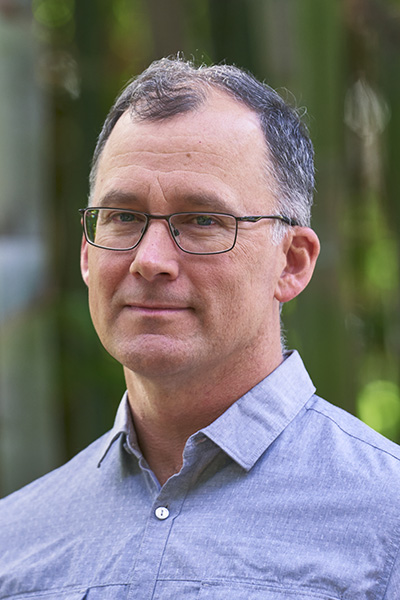
James Lloyd-Smith
Professor
email: jlloydsmith@ucla.edu
phone: 310-206-8207
office: 4135 Terasaki Life Sciences Building (TLSB)
website
Recent Courses
EE BIOL 296 - Seminar: Ecology and Evolutionary Biology
EE BIOL 297 - Selected Topics in Ecology and Evolutionary Biology
EE BIOL 599 - PhD Dissertation Research and Writing
Research Interests
I study the ecological and evolutionary dynamics of infectious disease in animal and human populations, and at the animal-human interface where novel human pathogens such as SARS or pandemic influenza can emerge. By combining theoretical models with data, I aim to deepen our understanding of fundamental principles of disease transmission and adaptation, and apply those principles to interpret observed patterns, uncover driving mechanisms, and design effective control policies. I work on a diverse range of disease-host systems, including leptospirosis in California sea lions, monkeypox in humans and wildlife in central Africa, and influenza and other emerging diseases in human populations.
Selected Publications
Schreiber, S.J., Ke, R., Loverdo, C., Park, M., Ahsan, P., Lloyd-Smith, J.O. (2021) Cross-scale dynamics and the evolutionary emergence of infectious diseases. Virus Evolution. 7:veaa105. https://doi.org/10.1093/ve/veaa105
D.H. Morris*, K.C. Yinda*, A. Gamble*, F.W. Rossine, Q. Huang, T. Bushmaker, R.J. Fischer, M.J. Matson, N. van Doremalen, P.J. Vikesland, L.C. Marr, V.J. Munster, J.O. Lloyd-Smith. (2021) Mechanistic theory predicts the effects of temperature and humidity on inactivation of SARS-CoV-2 and other enveloped viruses. eLife. 10: e65902. https://elifesciences.org/articles/65902
C.E. Snedden*, S. K. Makanani*, S.T. Schwartz, A. Gamble, R.V. Blakey, B. Borremans, S.K. Helman, L. Espericueta, A. Valencia, A. Endo, M.E. Alfaro, J.O. Lloyd-Smith. (2021) SARS-CoV-2: Cross-scale insights from ecology and evolution. Trends in Microbiology 29: 593-605. https://doi.org/10.1016/j.tim.2021.03.013
K.C. Prager, M.G. Buhnerkempe, D.J. Greig, A.J. Orr, F. Gomez, E. Jensen, R.L. Galloway, Q. Wu, F.M.D. Gulland, J.O. Lloyd-Smith. (2020) Linking longitudinal and cross-sectional biomarker data to understand host-pathogen dynamics: Leptospira in California sea lions (Zalophus californianus) as a case study. PLOS Neglected Tropical Diseases. 14:e0008407. https://journals.plos.org/plosntds/article?id=10.1371/journal.pntd.0008407
K. M. Gostic, E. A. Wunder, V. Bisht, C. Hamond, T. R. Julian, A. I. Ko, J. O. Lloyd-Smith (2019). Mechanistic dose-response modeling of animal challenge data shows that intact skin is a crucial barrier to leptospiral infection. Philosophical Transactions of the Royal Society, B. 374: 20190367. https://royalsocietypublishing.org/doi/10.1098/rstb.2019.0367
Lloyd-Smith, J.O. (2017) Predictions of virus spillover across species. Nature 546: 603-604. https://www.nature.com/articles/nature23088
Plowright, R.K., Parrish, C.R., McCallum, H., Hudson, P.J., Ko, A.I., Graham, A.L., Lloyd-Smith, J.O. (2017) Pathways to zoonotic spillover. Nature Reviews Microbiology 15: 502-510. https://www.nature.com/articles/nrmicro.2017.45
Gostic, K.M., Ambrose, M.R., Worobey, M, Lloyd-Smith, J.O. (2016) Potent protection against H5N1 and H7N9 influenza via childhood hemagglutinin imprinting. Science. 354: 722-726. https://www.science.org/doi/10.1126/science.aag1322
Lloyd-Smith, J.O., Mollison, D., Metcalf, C.J.E., Klepac, P., Heesterbeek, J.A.P. (2015) Challenges in modelling infectious disease dynamics. Epidemics 10. https://www.sciencedirect.com/science/article/pii/S1755436515000067
Lloyd-Smith, J.O. (2013) Vacated niches, competitive release and the community ecology of pathogen eradication. Philosophical Transactions of the Royal Society of London, B. 368: 20120150. https://royalsocietypublishing.org/doi/full/10.1098/rstb.2012.0150
Lloyd-Smith, J.O., George, D., Pepin, K.M., Pitzer, V.E., Pulliam, J., Dobson, A.P., Hudson, P.J., Grenfell, B.T. (2009) Epidemic dynamics at the human-animal interface. Science 326: 1362-1367. https://www.science.org/doi/10.1126/science.1177345
Lloyd-Smith, J.O., Schreiber, S.J., Kopp, P.E., Getz, W.M. (2005) Superspreading and the effect of individual variation on disease emergence. Nature 438: 355-359. https://www.nature.com/articles/nature04153

Brenda Larison
Assistant Adjunct Professor
email: blarison@ucla.edu
phone: 3107741646
office: 4153 Terasaki Life Sciences Building (TLSB)
Recent Courses
EE BIOL 132 - Field Behavioral Ecology
EE BIOL 114 - Ornithology
EEBIOL 100/100L - Introduction to Ecology and Behavior
Research Interests
My research encompasses two primary areas: the evolution of animal patterning, with a focus on the distinctive black and white stripes of plains zebras, and conservation biology. Specifically, I investigate the genetic underpinnings and functional significance of zebra stripe patterns, leveraging the notable variability observed among plains zebras.
In addition to my work on animal patterning, I am deeply engaged in research concerning the conservation of plains zebras. This includes studying their population genetics and exploring the causes of aberrant striping patterns observed in various populations.
My research on plains zebras has also led me into unexpected avenues, such as developing epigenetic clocks and conducting comprehensive surveys of historical and contemporary biodiversity using environmental DNA (eDNA) in Rwandan national parks
An exciting facet of our eDNA research is its role in capacity building. Alongside our scientific investigations, we have been actively training researchers from across Africa in eDNA methodologies and working to foster collaborations among them.
Selected Publications
Horvath S, Hagani A, Peng S, Hales E, Zoller J, Raj K, Larison B, Petersen J, Bellone R, Finno CJ. 2022. DNA methylation aging and transcriptomic studies in horses. Nature Communications. doi: 10.1038/s41467-021-27754-y.
Larison B, Pinho GM, Hagani A, Zoller JA, Li CZ, Finno CJ, Farrell C, Kaelin CB, Barsh G, Wooding B, Robeck TR, Maddox D, Pellegrini M, Horvath S. 2021. Epigenetic models predict age and aging in plains zebras and other equids. Communications Biology 4 doi: 10.1038/s42003-021-02935-z
Larison B, Lindsay AR, Bossu C, Sorenson MD, Kaplan JD, Evers DC, Paruk J, DaCosta JM, Smith TB, Ruegg K. 2021. Leveraging genomics to understand threats to migratory birds. Evolutionary Applications 14: 1646-1658. DOI:10.1111/eva.13231.
Smith TB, Fuller TL, Zhen Y, Zaunbrecher V, Thomassen H, Njabo K, Anthony NM, Gonder K, Buermann W, Larison B, Ruegg K, Harrigan R. 2021. Genomic vulnerability and socio-economic threats under climate change in an African rainforest bird. Evolutionary Applications 14: 1239-1247. doi:10.1111/eva.13193.
Larison B, Kaelin C, Harrigan R, Rubenstein DI, Kamath P, Aschenborne O, Smith TB, Barsh, G. 2021. Population structure, inbreeding and stripe pattern abnormalities in plains zebras. Molecular Ecology 30:379-390. DOI: 10.1111/mec.15728.
Larison B, Harrigan RJ, Rubenstein DI, Smith TB. 2015. Concordance on zebra stripes is not black and white: response to comment by Caro and Stankowich (2015). Royal Society Open Science 2:150359.
Larison B, Harrigan RJ, Thomassen HA, Rubenstein DI, Chan-Golston AM, Li E, Smith TB. 2015. How the zebra got its stripes: A problem with too many solutions. Royal Society Open Science 2:140452
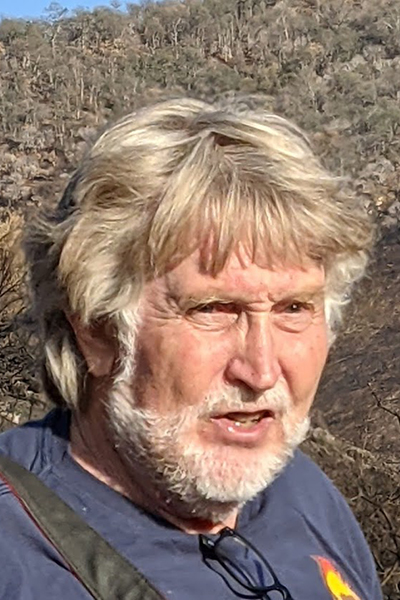
Jon Keeley
Adjunct Professor
email: jkeeley@ucla.edu
phone: (559) 565-3170
office:
Recent Courses
Research Interests
My research focuses on the ecological impacts and history of wildfires in Mediterranean-climate ecosystems. In particular I am currently focusing most of my efforts at how fire regime shifts affect invasion of natural ecosystems by non-native plants. Other research concerns seed germination biology in fire prone ecosystems, vernal pools and the ecological role of photosynthetic pathways in CAM and C4 plants.
Selected Publications
Syphard, A.D. and J.E. Keeley, "Location, timing and extent of wildfire vary by cause of ignition", International Journal of Wildland Fire, 24 : 37-47 (2015) .
Keeley, J.E. and A.D. Syphard, "Different fire-climate relationships on forested and non-forested
landscapes in the Sierra Nevada ecoregion", International Journal of Wildland Fire, 24 : 27-36 (2015) .
Penman, T.D., L. Collins, A.D. Syphard, J.E. Keeley, and R.A. Bradstock, " Influence of fuels, weather
and the built environment on the exposure of property to wildfire", PLOS ONE, 9 (10): - (2014) .
Syphard, A.D., T.J. Brennan, and J.E. Keeley., "The role of defensible space for residential structure
protection during wildfires", International Journal of Wildland Fire, 23 : 1165-1175 (2014) .
Pausas, J.G. and J.E. Keeley, "Abrupt climate-independent fire regime changes", Ecosystems, 17 : 1109-1120 (2014) .
Baltar, M., J.E. Keeley, and F.P. Schoenberg, "County-level analysis of the impact of temperature and
population increases on California wildfire data", Environmetrics, 17 : - (2014) .
Keeley, J.E., "Aquatic CAM photosynthesis: a brief history of its discovery", Aquatic Botany, 118 : 38-44 (2014) .
Pausas, J.G. and J.E. Keeley, "Evolutionary ecology of resprouting and seeding in fire-prone ecosystems", New Phytologist, 204 : 55-65 (2014) .
Keeley, J.E., "The Paper Trail series. Three papers that influenced the direction of my career", Bulletin of the Ecological Society of America, 95 : 216-217 (2014) .
Moreno, J.M., I. Torres, B. Luna, W.C. Oechel, and J.E. Keeley, " Changes in fire-intensity have carry-over effects on plant responses after the next fire in southern California chaparral", Journal of Vegetation Science, 24 : 395-404 (2013) .

J. Lee Kavanau
Professor Emeritus
email:
phone:
office:
website
Recent Courses
Research Interests
My experimental studies of the last 15 years have related to avian behavior, evolution, and responses to unnatural light cycles, working primarily with small parrots. These studies led me into my most recent field of study, the evolution of mechanisms of memory (synaptic efficacy maintenance) and of sleep, and the function(s) of sleep. The nature of these studies and findings is conveyed by portions of the abstracts from four of my recent papers.
Abstract [Neuroscience 79:7-44 (1997)]
After the origin of activity-dependent synaptic plasticity, whereby single activations of synapses led to
short-term efficacy enhancement, lengthy maintenance of enhancements probably was achieved by
repetitive activations ("dynamic stabilization"). One source of selective pressure for the evolutionary
origin of neurons and neural circuits with oscillatory firing capacities may have been a need for
repetitive spontaneous activations to maintain synaptic efficacy in circuits that were in infrequent use during activity. This process is referred to as "non-utilitarian" dynamic stabilization.
Dynamic stabilization of synapses in "simple" invertebrates occurs primarily through frequent use. In complex, locomoting forms, it probably occurs through both frequent use and non-utilitarian activations during restful waking. With the evolution of increasing repertories and complexities of behavioral and sensory capabilities with vision usually being the vastly pre-eminent sense, brain complexity increased markedly. Accompanying the greater complexity, needs for storage and maintenance of hereditary and experiential information (memories) increased greatly.
It is suggested that these increases led to conflicts between sensory input processing during restful waking and concomitant non-utilitarian dynamic stabilization of infrequently used memory circuits. The selective pressure for the evolutionary origin of primitive sleep may have been a resulting need to achieve greater depression of central processing of sensory inputs, largely complex visual information, than occurs during restful waking.
The electrical activities of the brain during sleep (aside from those that subserve autonomic activities) may function largely to maintain sleep and to dynamically stabilize infrequently used circuitry encoding memories. Sleep may not have been the only evolutionary adaptation to conflicts between dynamic stabilization and sensory input processing. In some ectothermic vertebrates, sleep may have been postponed or rendered unnecessary by a more readily effected means of resolution of the conflicts, namely, extensive retinal processing of visual information during restful waking. By this means, processing of visual information in central regions of the brain may have been maintained at a sufficiently low level to allow adequate concomitant dynamic stabilization.
Many marine mammals that are active almost continuously engage only in unihemispheric non-rapid-eye-movement sleep. They apparently do not require rapid-eye-movement sleep and accompanying non-utilitarian dynamic stabilization of motor circuitry, because this circuitry is in virtually continuous use. Studies of hibernation by arctic ground squirrels suggest that each hour of sleep may stabilize brain synapses for as long as 4 h.
Phasic irregularities in heart and respiratory rates during rapid-eye-movement sleep may be a consequence of superposition of dynamic stabilization of motor circuitry on the rhythmic autonomic control mechanisms. Some information encoded in circuitry being dynamically stabilized during sleep achieves unconscious awareness in authentic and variously modified form as dreams and other sleep mentation.
Abstract [Brain Research Bulletin 42:245-264 (1997)]
The origin of both sleep and memory appears to be closely associated with the evolution of
mechanisms of enhancement and maintenance of synaptic efficacy. After the origin of
activity-dependent synaptic plasticity, whereby single activations of synapses led to short-term
efficacy enhancements, lengthy maintenance of the enhancements probably was achieved by
repetitive activations ("dynamic stabilization"). These are thought to have occurred either in the
course of frequent functional use, or to have been induced spontaneously within the brain to maintain
synaptic efficacies in circuits that were in infrequent use. The latter repetitive activations are referred
to as `non-utilitarian' dynamic stabilization.
With the evolution of increasing repertories and complexities of behavioral and sensory capabilities, with vision usually being the vastly preeminent sense, brain complexity increased markedly. Accompanying the greater complexity, needs for
storage and maintenance of hereditary and experiential information (memories) also increased greatly. It is suggested that these increases led to conflicts between sensory input processing during restful waking and concomitant `non-utilitarian' dynamic stabilization of infrequently used memory circuits.
The selective pressure for the origin of primitive sleep may have been a need to achieve greater depression of central processing of sensory inputs, largely complex visual information, than occurs during restful waking. The electrical activities of the brain during sleep (aside from those that subserve autonomic activities) may function largely to maintain sleep and to dynamically stabilize infrequently used circuitry encoding memories.
As endothermy evolved, the skeletal muscle hypotonia of primitive sleep may have become insufficient to prevent sleep-disrupting skeletal muscle contractions during `non-utilitarian' dynamic stabilization of motor circuitry at the accompanying higher body temperatures and metabolic rates. Selection against such disruption during dynamic stabilization of motor circuitry may have led to the inhibition of skeletal muscle tone during a portion of primitive sleep, the portion designated as "rapid-eye-movement sleep."
Abstract [Brain Research Bulletin 46:269-279 (1998)]
A major activity of the brain of most vertebrates during waking behavior is the processing of sensory information, preponderantly visual. This processing is not fully compatible with the brain's spontaneous oscillatory activity that maintains (refreshes) infrequently used circuits that store inherited and experiential information (memories). Great reduction in sensory input and processing during sleep permits the refreshment of memory circuits to occur unimpededly. Accordingly, sleep may have evolved as ever augmenting needs for processing visual information during waking
behavior by brains of great complexity conflicted increasingly with needs to refresh memory circuits.
The lack of a need for sleep by genetically blind fishes that live in caves, and sighted fishes that swim continuously, is consistent with this thesis, as their needs for processing of sensory information, predominantly visual, are either greatly reduced or nil.
Reduced requirements for processing sensory information by continuously swimming fishes owe to the following aspects of their behavior and ecology: (1) visual input is greatly reduced or absent during lengthy periods of nocturnal activity; (2)
schooling greatly reduces needs for sensory information, particularly visual; (3) being maintained through frequent use, circuitry for most inherited memories needs no refreshment; and (4) inasmuch as they lead a comparatively routine existence in essentially featureless, open waters, pelagic species acquire, and have need to refresh, relatively few experiential memories. Analogous circumstances could account for the ability of migrating birds to fly for days without rest or sleep.
Abstract (Neuroscience and Biobehavioral Reviews 23:635-648 (1999)]
Brain circuits for infrequently employed memories are reinforced largely during sleep by self-induced,
electrical slow-waves, a process referred to as "dynamic stabilization" (DS). The essence of waking
brain function in the absence of volitional activity is sensory input processing, an enormous amount of
which is visual. These two functions: circuit reinforcement by DS and sensory information processing
come into conflict when both occur at a high level, a conflict that may have been the selective
pressure for sleep's origin.
As brain waves are absent at the low temperatures of deep torpor, essential circuitry of hibernating small mammals would lose its competence if the animals did not warm up periodically to temperatures allowing sleep and circuit reinforcement. Blind, cave-dwelling vertebrates require no sleep because their sensory processing does not interfere with DS. Nor does
such interference arise in continuously-swimming fishes, whose need to process visual information is reduced greatly by life in visually relatively featureless, pelagic habitats, and by schooling.
Dreams are believed to have their origin in DS of memory circuits. They are thought to have illusory content
when the circuits are partially degraded (incompetent), with synaptic efficacies weakened through infrequent use. Partially degraded circuits arise normally in the course of synaptic efficacy decay, or pathologically through abnormal regimens of DS.
Organic delirium may result from breakdown of normal regimens of DS of circuitry during sleep, leaving many circuits incompetent. Activation of incompetent circuits during wakefulness apparently produces delirium and hallucinations. Some
epileptic seizures may be induced by abnormal regimens of DS of motor circuitry. Regimens of remedial DS during seizures induced by electroconvulsive therapy (ECT) apparently produce temporary remission of delirium by restoring functional or `dedicated' synaptic efficacies in incompetent circuitry. Sparing of sensory circuitry in fatal familial insomnia seemingly owes to supernormal circuit use in the virtual absence of sleep. ECT shocks and cardioverter defibrillation may have analogous remedial influences.
Selected Publications
J. Lee Kavanau, "Biological time-keeping mechanisms:A need for broader perspectives", Medical Hypotheses, B.G. Charlton(Eds.), London Elsevier 67 : 1258-1262 (2006) .
J. Lee Kavanau, "Is sleep's 'supreme mystery' unraveling? An evolutionary anaysis of sleep encounters no mystery; nor does life's earliest sleep, recently discovered in jellyfish", Medical Hypotheses, B.G. Charlton(Eds.), London Elsevier 66 : 3-9 (2006) .
J. Lee Kavanau, "Evolutionary approaches to understanding sleep", Sleep Medicine Reviews, Michael V. Vitiello and Jean Krieger(Eds.), New York Elsevier 9 : 141-152 (2005) .
J. Lee Kavanau, "Evolutionary aspects of sleep and its REM and NREM states", Advances in Cell Aging and Gerontology, M.P. Mattson(Eds.), London Elsevier B.V 17 : 1-32 (2005) .
J. Lee Kavanau, "Dream contents and failing memories", Archives Italiennes de Biologie, M.P. Mattson(Eds.), 140 : 109-127 (2002) .
J. Lee Kavanau, "REM and NREM sleep as natural accompaniments of the evolution of warm-bloodedness", Neuriscience and Buibehavioral Reviews, M.P. Mattson(Eds.), 26 : 889-906 (2002) .
J. Lee Kavanau, "Memory Failures, Dream illusions and Mental Malfunction", Neuropsychobiology,, M.P. Mattson(Eds.), 26 : 199-211 (2001) .
J. Lee Kavanau, "Adaptations and pathologies linked to dynamic stabilization of neural circuitry", Neuroscience and Biobehavioral Reviews, M.P. Mattson(Eds.), 23 : 635-648 (1999) .
J. Lee Kavanau, "Origin and evolution of sleep: Roles of vision and endothermy", Brain Research Bulletin, M.P. Mattson(Eds.), 42 : 245-263 (1997) .
J. Lee Kavanau, "Memory, sleep and the evolution of mechanisms of synaptic efficacy maintenance", Neuroscience, M.P. Mattson(Eds.), 79 : 7-44 (1997) .
David Jacobs
Professor
email: djacobs@ucla.edu
phone: (310) 206-7885
office: 2155 Terasaki Life Sciences Building (TLSB)
website
Recent Courses
EE BIOL C173 | EE BIOL C173 | EE BIOL C173 | EE BIOL C173 | EE BIOL C173 | EE BIOL C173 | EE BIOL C173 | EE BIOL C17 - Earth Process and Evolutionary History
EE BIOL C173 | EE BIOL C228 - Earth Process and Evolutionary History
EE BIOL CM173 | EE BIOL CM228 | EPS SCI CM173 | EPS SCI CM273 - Earth Process and Evolutionary History
Research Interests
In the Jacobs Lab we study the coevolution of Earth and Life. Our approaches are synthetic and involve a wide range of questions and different combinations of data and analysis to answer them.
One suite of questions involves how deep-time environments influenced the initial evolution of complexity in eukaryotes and multi-cellular organisms as well as the subsequent diversity of life. These questions range in scale from the development of individual fossil forms and the modeling of processes associated with particular paleo-communities, to global scale impacts on diversity. Some of these questions are addressed with data from the fossil record. However, questions relating to evolution of cellular and development complexity centered around the Cambrian radiation are approached with a wide variety of molecular techniques.
Another suite of questions involves more recent geologic, climate and anthropogenic processes and how they influence coastal speciation and conservation. Here, we study how tectonic and sea-level processes form coasts, how coastal processes form habitat, and how these factors influence genetic differentiation and speciation. Here, again we employ a range of molecular tools. We then also apply historical ecology to better understand human impacts, their relationship to the past behavior of the system, and their implications for future climate and sea-level change. Study areas include the coasts of California and the Gulf of California as well as Polynesia. This coastal work has fundamental and applied aspects. It addresses basic understanding of coast formation processes and there impacts on biological evolution and diversity of coastal species. This then leads to management implications relative to the restoration of coastal habitat, and the management of endangered species.
Selected Publications
Gold, D.A., Katsuk T., Yan, X., Li,Y. , Regulski, M., Ibberson, D., Holstein, T.W., . Steele, R.E., Jacobs, D.K, Greenspan, R. J., ".The genome of the jellyfish Aurelia and the evolution of animal complexity", Nature Ecology & Evolution, - (2017) .
Buckner, J.C., Ellingson, R., Gold, D.A., Jones, T.L. Jacobs, D.K., "Mitogenomics supports an unexpected taxonomic relationship for the extinct diving duck Chendytes lawi and definitively places the extinct Labrador Duck", Molecular Phylogeny and Evolution, - (2017) .
Buckner, J.C., Ellingson, R., Gold, D.A., Jones, T.L. Jacobs, D.K., "Mitogenomics supports an unexpected taxonomic relationship for the extinct diving duck Chendytes lawi and definitively places the extinct Labrador Duck", Molecular Phylogeny and Evolution, - (2017) .
Dolby GA, Ellingson RA, Findley LT, Jacobs DK, "Sea-level change mediates genetic divergence in coastal species across regions with varying tectonic and sediment processes", Molecular Ecology, - (2017) .
Lau, C. L., & Jacobs, D. K., "Introgression between ecologically distinct species following increased salinity in the Colorado Delta-Worldwide implications for impacted estuary diversity", PeerJ, - (2017) .
Gold, D. A., Nakanishi, N., Hensley, N. M., Hartenstein, V. & Jacobs, D. K., " Cell tracking supports secondary gastrulation in the moon jellyfish Aurelia", Development Genes and Evolution, 226 (6): 383-387 (2016) .
Dolby, G. A., Hechinger, R., Ellingson, R. A., Findley, L. T., Lorda, J., & Jacobs, D. K., "Sea-level driven glacial-age refugia and post-glacial mixing on subtropical coasts, a palaeohabitat and genetic study", Proc. R. Soc. B, 283 (1843): 1-8 (2016) .
Swift, C. C., Spies, B., Ellingson, R. A., & Jacobs, D. K., "A New Species of the Bay Goby Genus Eucyclogobius, Endemic to Southern California: Evolution, Conservation, and Decline", PloS one, 11 (7): - (2016) [link].
Saintilan, N., Rogers, K., Toms, C., Stein, E. D., & Jacobs, D., "Intermittent Estuaries: Linking Hydro-geomorphic Context to Climate Change Resilience", Journal of Coastal Research, 75 (sp1): 133-137 (2016) .
Gold, D. A., Runnegar, B., Gehling, J. G., & Jacobs, D. K., "Ancestral state reconstruction of ontogeny supports a bilaterian affinity for Dickinsonia", Evolution & Development, 17 (6): 315-324 (2015) .
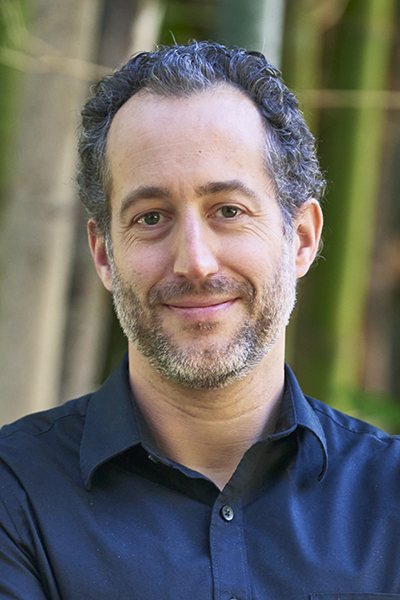
Kirk Lohmueller
Professor
email: klohmueller@ucla.edu
phone: (310) 825-7636
office: 4312 Life Sciences Building (LSB)
website
Recent Courses
Research Interests
My research focuses on population genetics and genomics. I develop and implement computational approaches to interpret genetic variation data to learn about evolution and disease. Specifically, I am interested in understanding how natural selection has shaped patterns of genetic variation across the genome and in different species, as well as the role that population history has played in this process. Additionally, I use genetic variation data to learn about population history. Finally, I am exploring how population genetic approaches can contribute to finding genes responsible for complex traits.
My group combines the development of new computational methods with the analysis of cutting-edge genomic data. In both cases, our work relies heavily on population genetic models.
Selected Publications
Beichman, A., T.N. Phung, K.E. Lohmueller, "Comparison of single genome and allele frequency data reveals discordant human demographic histories", G3: Genes, Genomes and Genetics, https://doi.org/10.1534/g3.117.300259 - (2017) .
Zhen, Y., R. J. Harrigan, K.C. Ruegg, E.C. Anderson, T.C. Ng, S. Lao, K.E. Lohmueller, T.B. Smith, "Genomic divergence across ecological gradients in the Central African rainforest songbird (Andropadus virens)", Mol Ecol, - (2017) [link].
Huber, C.D., B. Kim, C.D. Marsden, K.E. Lohmueller, "Determining the factors driving selective effects of new nonsynonymous mutations", Proc Natl Acad Sci USA, 114 : 4465-4470 (2017) .
Kim, B.Y., C.D. Huber CD, K.E. Lohmueller, "Inference of the distribution of selection coefficients for new nonsynonymous mutations using large samples", Genetics, 206 : 345-361 (2017) .
Pedersen, C.E.T., K.E. Lohmueller, N. Grarup, P. Bjerregaard, T. Hansen, H.R. Siegismund, I. Moltke, A. Albrechtsen, "The effect of an extreme and prolonged population bottleneck on patterns of deleterious variation: insights from the Greenlandic Inuit", Genetics, 205 : 787-801 (2017) .
Freedman, A.H., K.E. Lohmueller, R.K. Wayne, "Evolutionary history, selective sweeps and deleterious variation in the dog", Annu Rev Ecol Evol Syst, 47 : 73-96 (2016) .
Haned, H., P. Gill, K. Lohmueller, K. Inman, N. Rudin, "Validation of probabilistic genotyping software for use in forensic DNA casework: Definitions and illustrations", Science and Justice, 56 : 104-108 (2016) [link].
Phung, T.N., C.D. Huber, K.E. Lohmueller, "Determining the effect of natural selection on linked neutral divergence across species", PLoS Genetics, 12 : e1006199- (2016) [link].
Ortega-Del Vecchyo, D., C.D. Marsden, K.E. Lohmueller, "PReFerSim: Fast simulation of demography and selection under the Poisson Random Field model", Bioinformatics, 32 : 3516-3518 (2016) [link].
Robinson, J.A., D. Ortega-Del Vecchyo, Z. Fan, B.Y. Kim, B.M. vonHoldt, C.D. Marsden, K.E. Lohmueller, R.K. Wayne, "Genomic flatlining in the endangered island fox (Urocyon littoralis)", Current Biology, 26 : 1183-1189 (2016) [link].
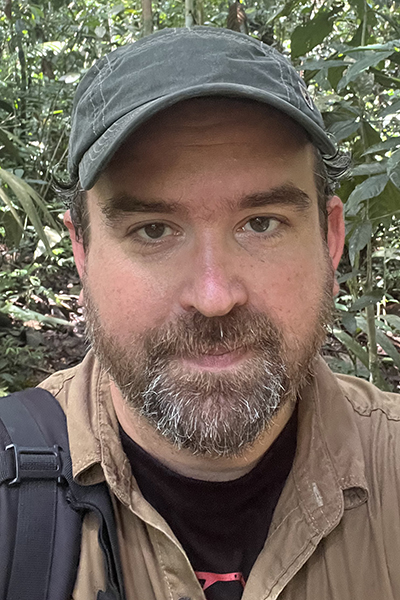
Nathan Kraft
Professor
email: nkraft@ucla.edu
phone: (301) 825-3593
office: 410J Botany
website
Recent Courses
Research Interests
We study the ecological and evolutionary forces that structure communities, particularly plant systems. Projects in the lab integrate aspects of community ecology, biogeography, ecophysiology, and phylogenetics. Recent projects have centered on the forests of lowland Amazonia and annual plant communities in California. In addition to a focus on species coexistence, research in the lab also addresses plant responses to climate change, the distribution of diversity at broad spatial scales, and the assembly of regional biotas.
Selected Publications
Mary Van Dyke, Jonathan Levine, Nathan Kraft, 2022. Small rainfall changes drive substantial changes in plant coexistence. Nature, 611:507-511.
Andrew Kleinhesselink, Nathan Kraft, Stephen Pacala, Jonathan Levine, 2022. Detecting and interpreting higher order interactions in ecological communities. Ecology Letters, 25:1604 –1617.
Gaurav Kandlikar, Andrew Kleinhesselink, Nathan Kraft, 2022. Functional traits predict species responses to environmental variation in a California grassland annual plant community. Journal of Ecology, 110:833-844.
Gaurav Kandlikar, Xinyi Yan, Jonathan Levine, Nathan Kraft, 2021. Soil microbes generate stronger fitness differences than stabilization among California annual plants. American Naturalist, 197:E30-E39.
Ian McFadden, Brody Sandel, Constantinos Tsirogiannis, Naia Morueta-Holme, Jens-Christian Svenning, Brian Enquist, Nathan Kraft, 2019. Temperature shapes opposing latitudinal gradients of plant taxonomic and phylogenetic β diversity. Ecology Letters 22:1126-1135.
Ian McFadden, Megan Bartlett, Thorsten Weigand, Benjamin Turner, Lawren Sack, Renato Valencia, Nathan Kraft, 2019. Disentangling the functional trait correlates of spatial aggregation in tropical forest trees. Ecology, 100:e02591.
Claire Fortunel, Jesse Lasky, Maria Uriarte, Renato Valencia, Joseph Wright, Nancy Garwood, Nathan Kraft, "Topography and neighborhood crowding can interact to shape species growth and distribution in a diverse Amazonian forest", Ecology, 99 : 2272-2283 (2018) .
William Petry, Gaurav Kandlikar, Nathan Kraft, Oscar Godoy, and Jonathan Levine, "A competition-defence trade-off both promotes and weakens coexistence in an annual plant community", Journal of Ecology, 106 : 1806-1818 (2018) .
Jeanne Osnas, Masatoshi Katabuchi, Kaoru Kitajima, S. Joseph Wright, Peter Reich, Sunshine Van Bael, Nathan Kraft, Mirna J. Samaniego, Stephen Pacala, and Jeremy Lichstein, "Divergent drivers of leaf trait variation within species, among species, and among functional groups", Proceedings of the National Academy of Science, 115 : 5480-5485 (2018) .
Irena Simova, Cyrille Violle, Jens‐Christian Svenning, Jens Kattge, Kristine Engemann, Brody Sande, Robert Peet, Susan Wiser, Benjamin Blonder, Brian McGill, Brad Boyle, Naia Morueta‐Holme, Nathan Kraft, Peter van Bodegom, Alvaro Gutierrez, Michael Bahn, Wim Ozinga, Anna Toszogyova, Brian Enquist, "Spatial patterns and climate relationships of major plant traits in the New World differ between woody and herbaceous species", Journal of Biogeography, 45 : 895-916 (2018) .
Brian Maitner, Brad Boyle, Nathan Casler, Rick Condit, John Donoghue II, Sandra M. Duran, Daniel Guaderrama, Cody E. Hinchliff, Peter M. Jorgensen, Nathan Kraft, Brian McGill, Cory Merow, Naia Morueta-Holme, Robert K. Peet, Brody Sandel, Mark Schildhauer, Stephen A. Smith, Jens-Christian Svenning, Barbara Thiers, Cyrille Violle, Susan Wiser, Brian J. Enquist, "The bien r package: A tool to access the Botanical Information and Ecology Network (BIEN) database", Methods in Ecology and Evolution, 9 : 891-893 (2018) .
Ethan E Butler, Abhirup Datta, Habacuc Flores-Moreno, Ming Chen, Kirk R Wythers, Farideh Fazayeli, Arindam Banerjee, Owen K Atkin, Jens Kattge, Bernard Amiaud, Benjamin Blonder, Gerhard Boenisch, Ben Bond-Lamberty, Kerry A Brown, Chaeho Byun, Giandiego Campetella, Bruno EL Cerabolini, Johannes HC Cornelissen, Joseph M Craine, Dylan Craven, Franciska T de Vries, Sandra D?az, Tomas F Domingues, Estelle Forey, Andr?s Gonz?lez-Melo, Nicolas Gross, Wenxuan Han, Wesley N Hattingh, Thomas Hickler, Steven Jansen, Koen Kramer, Nathan Kraft, Hiroko Kurokawa, Daniel C Laughlin, Patrick Meir, Vanessa Minden, Ulo Niinemets, Yusuke Onoda, Josep Penuelas, Quentin Read, Lawren Sack, Brandon Schamp, Nadejda A Soudzilovskaia, Marko J Spasojevic, Enio Sosinski, Peter E Thornton, Fernando Valladares, Peter M van Bodegom, Mathew Williams, Christian Wirth, Peter B Reich, "Mapping local and global variability in plant trait distributions", Proceedings of the National Academy of Science, 114 : E10937- (2017) .
Cyrille Violle, Wilfried Thuiller, Nicolas Mouquet, Francois Munoz, Nathan Kraft, Marc Cadotte, Stuart Livingstone, Matthias Grenie, David Mouillot, "A Common Toolbox to Understand, Monitor or Manage Rarity? A Response to Carmona et al", Trends in Ecology and Evolution, 32 : 891-893 (2017) .
Serguei Saavedra, Rudolf Rohr, Jordi Bascompte, Oscar Godoy, Nathan Kraft, Jonathan Levine, "A structural approach for understanding multi species coexistence", Ecological Monographs, 32 : 891-893 (2017) .
Oscar Godoy, Daniel Stouffer, Nathan Kraft, Jonathan Levine, "Intransitivity is infrequent and fails to promote annual plant coexistence without pairwise niche differences", Ecology, 98 : 1193-1200 (2017) .
Thorsten Wiegand, Maria Uriarte, Nathan Kraft, Guochun Shen, Xugao Wang, Fangliane He, "Spatially explicit metrics of species, functional and phylogenetic diversity: insights into plant community assembly processes", Annual Review of Ecology, Evolution, and Systematics, 48 : 329-351 (2017) .
Claire Fortunel, Renato Valencia, S Joseph Wright, Nancy Garwood, Nathan Kraft, 2016. Functional trait differences influence neighbourhood interactions in a hyperdiverse Amazonian forest. Ecology Letters, 19:1062-1070.
Nathan Kraft, Oscar Godoy, Jonathan Levine, 2015. Functional traits and the multidimensional nature of species coexistence. Proceedings of the National Academy of Science, 112:797-802.
Nathan Kraft, Peter Adler, Oscar Godoy, Emily James, Steve Fuller, Jonathan Levine, 2015. Community assembly, coexistence, and the environmental filtering metaphor. Functional Ecology, 29:592-599.

Henry Hespenheide
Professor Emeritus
email: hahiii@g.ucla.edu
phone:
office:
Recent Courses
Research Interests
Biodiversity. While large sums of money are being spent to look for life on Mars, the fact is that there are literally millions of species of living organisms here on Earth that are still unknown to science, either not yet found in nature or sitting in museum collections of insects and not yet studied by scientists. I know because I have been studying and collecting insects for 6 decades and have hundreds of undescribed species of beetles in my working collection. In what is left of my life I am trying to make some of these insects known to science in two areas:
Taxonomy and ecology of leaf-mining beetles: In addition to describing species, I am reporting new information about plant hosts and other aspects of community ecology and biogeography. Comparisons are made among hand collecting, rearing, and passive sampling methods to evaluate the relative effectiveness of such biodiversity sampling techniques as Malaise or light trapping and canopy fogging.
Wood-boring beetles and the evolution of mimicry: The occurrence of mimicry is being looked at in terms of the biogeography as well as the ecology of the mimics and models. Some of these mimicry complexes and many of the mimetic species have never been described. Mimicry selects for similarity of resemblance (“mimetic homoplasy”) which often makes separation of species difficult and conceals cryptic biodiversity.
Selected Publications
Hespenheide, H.A. 2019. A review of the genus Laemosaccus Schoenherr, 1826, (Coleoptera: Curculionidae: Mesoptiliinae) from Baja California and America North of México: Diversity and mimicry. The Coleopterists Bulletin, 73(4): 905-939.
Hespenheide, H.A. and R.L. Westcott. 2018. Two new species of Agrilus Curtis (Coleoptera: Buprestidae) from Mexico putatively camouflaged as bird droppings. The Coleopterists Bulletin 72: 417-420.
Hespenheide, H.A. 2018. A review of Microzygops Champion, 1906, with description of a new species (Coleoptera: Curculionidae: Conoderinae). The Coleopterists Bulletin 72: 113-117.
Hespenheide, H.A. 2018. Hemicolpus Heller, 1895 (Curculionidae, Conoderinae): a reconsideration and description of new species from Mexico and Central America. The Coleopterists Bulletin 72: 119-125.
Hespenheide, H.A. 2018. A review of Philenis Champion, 1906 (Coleoptera: Curculionidae:
Conoderinae), with descriptions of new species from Central and South America, Diversity 2018, 10, 84: 1-24; doi:10.3390/d10030084.
Hespenheide, H.A. 2017. A striking new species of Macrocopturus Heller 1895, from Panama (Curculionidae, Conoderinae): Raising the question of coloration. The Coleopterists Bulletin 71: 74-76.
Hespenheide, H.A., and C.S. Eiseman. 2016. A new species of Brachys Dejean, 1833 (Coleoptera: Buprestidae) from the Eastern United States using an unusual host. The Coleopterists Bulletin 70:335-340.
Hespenheide, H.A. 2015. Striking new species of Brachys Dejean, 1833 (Coleoptera: Buprestidae) from New Mexico, Texas and Mexico. The Coleopterists Bulletin 69 (2): 221-224.
Prena, J., E. Colonnelli and H. A. Hespenheide. 2014. Chapter 3.18 Curculionidae Conoderinae Schoenherr, 1833. pp. 577-589. In: Leschen, R.A.B. & Beutel, R. G. & J. F. Lawrence (eds.). Handbook of Zoology, Coleoptera Volume 3: Morphology and Systematics (Phytophaga). Walter de Gruyter, Berlin.
Hespenheide, H.A. 2014. A reconsideration of Hylaeogena Obenberger, 1923 (Coleoptera: Buprestidae), with descriptions of a new genus and new species from México and Central America. The Coleopterists Bulletin 68(1): 21-30.
18 August 2020

William Hamner
Professor Emeritus
email:
phone:
office:
Recent Courses
EE BIOL 19 - Fiat Lux Freshman Seminars
EE BIOL 192B - Undergraduate Assistant in Ecology and Evolutionary Biology
OBEE 98T - Marine Mammals: Their Conservation and Management
Research Interests
I am primarily interested in the distributions, abundances and interactions of pelagic marine organisms. The open sea is a vast three-dimensional environment, seemingly homogeneous and thinly populated when compared to benthic or terrestrial habitats, yet pelagic animals everywhere routinely occur in local aggregations at densities that exceed by far the population sizes estimated by traditional oceanographic techniques. Most of the interesting events in the sea occur within or near these aggregations, and we attempt to understand the causes for their formation and the subsequent dynamics of the organisms. My research concerns both physical and behavioral factors that generate and maintain these aggregations.
1.We investigate fine-scale physical and chemical structure of the sea in order to understand how pelagic animals respond to subtle differences in the water column. In particular we examine how eddies, fronts, shear zones, thermoclines, Langmuir cells and odor trails generate patchy distributions of pelagic organisms. Currently we are investigating these phenomena off the coast of southern California via UCLA research vessels and in the isolated marine lakes of Palau in the western tropical Pacific.
2.We examine the ecological role of behavior in plankton and in fishes in the open ocean via SCUBA in the upper ocean and via submersibles and remotely operated vehicles (ROVS) in the deep sea. We have conducted behavioral studies in the Antarctic, the Gulf of California, the Caribbean, and the Pacific. In situ research is supplemented with laboratory studies of planktonic animals and fishes maintained in specially designed aquariums.
Selected Publications
Zeidberg, L. D., W. Hamner, K. Moorehead, and E. Kristof, "Loligo opalescens (Cephalopoda: Myopsida) in Monterey Bay, California following the El nino event of 1997-1998", Bull. Mar. Sci, 74 : 129-141 (2004) .
Raskoff, K. A., F. A. Sommer, W. M. Hamner, and K. M. Cross, "Collection and culture techniques for gelatinous zooplankton", Biol. Bull, 204 : 68-80 (2003) .
Dawson, M.N, & W.M. Hamner., "Geographic variation and behavioral evolution in marine plankton", Mar. Biol, 143 : 1161-1174 (2003) .
Zeidberg, L. D. and W. M. Hamner, "Distribution of squid paralarvae, Loligo opalescens (Cephalopoda: Myopsida), in the Southern California Bight for the two years following the 1997 El Ni�o", Mar. Biol, 141 : 111-122 (2002) .
Graham, W. M., F. Pag�s, W. M. Hamner, "A physical context for gelatinous zooplankton aggregations: a review", In: Jellyfish Blooms: Ecological and Societal Importance. J. E. Purcell, W. M. Graham, and H. J. Dumont (eds.). Developments in Hydrobiology 155, series ed. H.J. Dumont, Kluwer Acad, 155 : 199-212 (2001) .
Hunt, J. C., L. D. Zeidberg, W. M. Hamner, and B. H. Robison, "The behavior of Loligo opalescens (Mollusca: Cephalopoda) as observed by a remotely operated vehicle (ROV)", J. Mar. Biol. Ass. U.K, 80 : 873-883 (2000) .
Hamner, W. M. and P. P. Hamner, "Behavior of Antarctic krill (Euphausia superba: schooling, foraging, and antipredatory behavior", Can. J.Fish. Aquat. Sci, 57 : 192-202 (2000) .
Hamner, W.M. and P.P. Hamner, "Stratified marine lakes of Palau (Western Caroline Islands)", Physical Geography, 19 : 175-220 (1998) .
Parrish, J.K., W.M. Hamner, adn C.T. Prewitt, "From individuals to aggregations: Unifying proper -ties, global framework, and the holy grails of congregation. In Animal Groups in Three Dimensions", Cambridge University Press, Cambridge, J.K. Parrish ad W. M. Hamner(Eds.), 19 : 1-14 (1997) .
Parrish, J.K. and W.M. Hamner (eds.), "Animal Groups in Three Dimensions", Cambridge Univ. Press, Cambridge, J.K. Parrish ad W. M. Hamner(Eds.), 19 : 1-336 (1997) .

Malcolm Gordon
Professor Emeritus
email: msgordon@ucla.edu
phone: (310) 825-4579
office:
Recent Courses
EE BIOL 111 - Biology of Vertebrates
EE BIOL 19 - Fiat Lux Freshman Seminars
EE BIOL 98T - Sharks, Skates, and Rays, Oh My! Myths and Truths of Elasmobranch Biology
Research Interests
My personal research and research-related interests presently (2010) focus in two major areas. Both are themes I have pursued with varying levels of activity for many years. Students reading this statement should know that I am no longer accepting new graduate students into my laboratory. My present collaborations are with undergraduate students, postdoctoral associates, and colleagues.
(i) The functional morphology, biomechanics, kinematics, and hydrodynamics of swimming in fishes using different methods of locomotion. This is the major, usually extramurally funded, activity in the laboratory. Emphasis is on rigid-bodied, median and paired fin (MPF) swimming fishes in the Order Tetraodontiformes. Species used are marine (e.g., puffers, spiny puffers, boxfishes, cowfishes, trunkfishes). Much of this work involves direct visualization and analysis of patterns of fluid flow around swimming fishes using 2- and 3-dimensional laser-based digital particle imaging velocimetry. This work is collaborative, primarily with colleagues at the Graduate Aeronautical Laboratory, California Institute of Technology (GALCIT), Pasadena, CA.
(ii) I am working with an international group of co-authors to write a new, advanced level textbook on animal biophysics and biomechanics. The book will be directed primarily toward students having strong physical science and engineering backgrounds.
Selected Publications
Kot, B.W., R. Sears, D. Zbinden, E. Borda, and M.S. Gordon, "Rorqual whale (Balaenopteridae) surface lunge-feeding behaviors: standardized classification, repertoire diversity, and evolutionary analyses", Marine Mammal Science, - (2014) [link].
Kim, Y.T. and M.S. Gordon, "Swimming and posture
control of common carp when penetrating mesh nets in a water tunnel", Fisheries Res, 102 : 166-172 (2010) .
Barnes, B., M. Gordon, K. Sato, and H. Hoppeler, "Survival in a changing world", J. Exp. Biol, 213 : 853- (2010) .
Jordan, L.K., S.M. Kajiura, and M.S. Gordon, "Functional consequences of structural differences in
stingray sensory systems. Part II: electrosensory system", J. Exp.
Biol, 212 : 3044-3050 (2009) .
Jordan, L.K., S.M. Kajiura, and M.S. Gordon, "Functional consequences of structural differences in
stingray sensory systems. Part I: mechanosensory lateral line canals", J. Exp. Biol, 212 : 3037-3043 (2009) .
Gordon, M.S., "Review of "Fish Osmoregulation," B.
Baldisserotto, J.M. Mancera, and B.G. Kapoor (eds.), published 2007", Quart. Rev. Biol, 84 : 114- (2009) .
Gordon, M.S., "Comparative physiology in IUPS and at IUPS 2009", J. Physiol Soc, Japan 71 : 49-51 (2009) .
Bartol, I.K., M.S. Gordon, M. Gharib, P.W. Webb,
and D. Weihs, "Evidence of self-correcting spiral flows in swimming
boxfishes", Bioinspir Biomim, 71 : 1-7 (2008) [link].
Gordon, M.S., "How some fishes swim: biomechanics and kinematics", Heredity (Japan), 61 : 57-61 (2007) .
Gordon, M.S., D.V. Lauritzen, and A.M. Wiktorowicz, "Passive and active mechanisms for trim control in swimming fishes", Heredity (Japan), Okinawa, Japan Proc. 3rd Intl. Symp. Aero Aqua Biomechanisms 61 : 1-6 (2006) .
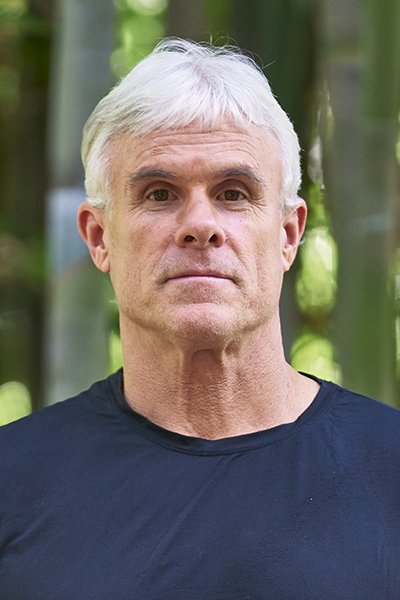
Gregory Grether
Professor
email: ggrether@g.ucla.edu
phone: (310) 794-9769
office: 4325 Life Science Building (LSB)
website
Recent Courses
EE BIOL 100 – Introduction to Ecology and Behavior
EE BIOL 100L – Introduction to Ecology and Behavior Lab
EE BIOL 132 – Field Behavioral Ecology (a Field Biology Quarter course)
EE BIOL 99, 199, 198 – Undergraduate Research
EE BIOL 297 – Graduate Seminar (variable topics)
Research Interests
I have many research interests and this is reflected by the diverse projects in my lab. Our focus is at the level of phenotypes, but we make good use of molecular tools too. We tend to study animals that can be easily observed and manipulated in the field, but no taxa, habitats, or regions are considered out of bounds.
Few would deny that the behavior of animals is an integral part of their ecology and evolution, but biologists often make unwarranted assumptions about behavior. Taking behavior into account can completely change the expected dynamics of a system.
Aggression between species is very common and often just as intense as aggression within species. Evolutionary responses to interspecific aggression must therefore be a major determinant of how species diversify. Yet aggression is understudied compared to other types of interactions, such as predation, hybridization, and exploitative competition. We are helping to fill this void with theoretical and empirical research.
Selected Publications
https://sites.lifesci.ucla.edu/eeb-gretherlab/publications/

Elma Gonzalez
Professor Emeritus
email: elma-gonzalez@att.net
phone:
office:
Recent Courses
EE BIOL 168 - Marine Phytoplankton Physiology
EE BIOL 19 - Fiat Lux Freshman Seminars
EE BIOL 194A - Research Group or Internship Seminars: Access to Research Careers
Research Interests
The organisms
The coccolithophorid algae are calcifying members of the Haptophyta (Prymnesiophyceae). They are the only known organisms that can calcify (calcium carbonate) subcellularly and who exercise precise control over the shape of their calcified scales (coccoliths) which are exocytosed to form an external cell cover (coccosphere). More than a hundred species of coccolithophorids have been described with each species displaying unique shape and size of crystallized coccoliths.
Significance
Members of the group have a world-wide distribution and are frequently found at high abundances in the sub-polar oceans. Their evolutionary history extends back to the Jurassic which makes them useful fossils for stratigraphic analyses and oil exploration.
The coccolithophorids draw down CO2 and bicarbonate from the ocean/atmospheric pools and contribute to carbonate archives in deep sea sediments. Thus coccolithophorid calcification is an important link in the global carbon cycle.
The coccolithophores have exciting potential for advances in nano-fabrication. The genetics, assembly and morphogenesis of the coccoliths (organo-crystalline composites) are under the direct control of the organism and remain virtually unexplored by modern tools.
Laboratory Studies
We have introduced Pleurochrysis for biochemical and molecular studies of calcification. Both Pleurochrysis and Emiliania huxleyi offer opportunities for an experimental approach that complements and extends the oceanographic and ecophysiological observations that have preceded our work.
Our interests lie along the following lines:
- Carbon concentrating mechanisms. An understanding of the biochemistry and cell biology of the coccolith vesicle; its membrane ion transporters and their relationship to carbon utilization in the chloroplast will lead to more robust predictions for change in the global carbon cycle and, potentially, climate. Other studies will focus on the regulation of expression, and cellular localization of carbonic anhydrases as organisms experience greater or lesser alkalinity, CO2, salinity, and temperature with the goal of understanding how these parameters may influence coccolithophore calcification.
- Coccolith Vesicle proton pump. The coccolith vesicle membrane exhibits proton-pumping activity and, along with the Golgi, is the localization of the vacuolar-type ATPase. These studies seek to understand the pathway of protons generated by calcification within the coccolith vesicle and the role of the V-type ATPase in calcification.
- Calcium fluxes. The coccolithophorid cell is a fairly typical eukaryote living atypically in a 10 mM Ca2+ medium. Moreover, the cell mineralizes at the rate of some 40 picograms per light period. How does the cell control levels of calcium in the cytosol? How does it deliver calcium to the calcifying vesicle? How did this group of organisms uniquely evolve subcellular calcification? We are intrigued by many other similar questions.
- Crystal nucleation and morphogenesis. We have a continuing interest in this topic and are collaborating with Betsy Read and Tom Wahlund at CSU San Marcos toward development of genetic and molecular tools for use on Pleurochrysis and Emiliania.
Prospective graduate students are encouraged to correspond either by letter, phone or email. Individuals who are interested in using molecular and biochemical tools to address ecophysiological problems of the coccolithophores are particularly encouraged to apply.
Selected Publications
Corstjens, P. L. A. M. and E. L. Gonz�lez, "(In Press) Effects of nitrogen and phosphorous availability on the expression of the coccolith-vesicle V-ATPase (subunit c) of Pleurochrysis (Haptophyta)", - (2003) .
Gonzalez, E.L. U, Riebesell, J. M. Hayes, E.A. Laws, "Effects of biosynthesis and physiology on relative abundances and isotopic compositions of alkenones", Geochem Geophys. Geosys, 2 : 2000GC-000052 (2001) .
Corstjens, P.L.A.M., P. Westbroek, and E.L. Gonzalez, "Coccolithophorid calcification depends on a highly conserved vacuolar ATPase: characterization of the gene encoding the membrane-bound subunit", J. Phycol, 37 : 71-78 (2001) .
Gonzalez, E.L., "The Calcifying vesicle membrane of the coccolithophore, Pleurochrysis sp", Wiley VCH, Weinheim, Germany, In Biomineralization of Nana & Micro-Structures., Ed. Edmund Baeuerlein(Eds.), 37 : 269-283 (2000) .
Corstijens, P.L.A.M. and E.L. Gonzalez, "Isolation and Molecular Analysis of our Actin encoding cDNA clones (Acc. Nos. AF144403, AF144404, AF 1444405, AF 1444406) from the Cocoolithophorid Pleurochysis carterate (Prymensiophyceae). (PGR 99-091)", Plant Physiol, In Biomineralization of Nana & Micro-Structures., Ed. Edmund Baeuerlein(Eds.), 120 : 933- (1999) .
Arako, Y. and E.L. Gonzalez, "V- and P-type Ca2+ -stimulated ATPase in a calcifying strain of Pleurochrysis sp., (Haptophyceae)", J. Phycol, In Biomineralization of Nana & Micro-Structures., Ed. Edmund Baeuerlein(Eds.), 34 : 79-88 (1998) .
Corstjens, P.L.A.M., Y. Araki, P. Westbroek and E.L. Gonzalez, "A Gene Encoding the 16 kD Proteolipid Subunit of a Vacuolar-Type H(+)-ATPase from Pleurochrysis carterae strain 136 (GenBank Accession No. U48365 and U53182)", Plant Gene Register, In Biomineralization of Nana & Micro-Structures., Ed. Edmund Baeuerlein(Eds.), PGR96-038 : - (1996) .
Pavel, M., Bruno, J.E., Gonzalez, E.L., and Strand, S., "Identifying and addressing information deficits for minority undergraduate students in science", J. Educational Technology Systems, In Biomineralization of Nana & Micro-Structures., Ed. Edmund Baeuerlein(Eds.), 24 : 335-357 (1996) .
Isreal, A.A., and E.L. Gonzalez., "Photosynthesis and inorganic carbon utilization by the coccolithophorid alga Pluerochrysis sp. (Haptophyta)", Marine Ecology Progress Series, In Biomineralization of Nana & Micro-Structures., Ed. Edmund Baeuerlein(Eds.), 137 : 243-250 (1996) .
Kwon, D.K. and E.L. Gonzaelz, "Localization of Ca2+-stimulated ATPase in the coccolith-producing-compartment of cells of Pleurochyrsis sp. (Prymnesiophyceae)", J Phycol, In Biomineralization of Nana & Micro-Structures., Ed. Edmund Baeuerlein(Eds.), 30 : 689-695 (1994) .

Arthur Gibson
Professor Emeritus
email: agibson@biology.ucla.edu
phone: (310) 825-8062
office:
Recent Courses
EE BIOL 103 - Plant Evolution and Systematics
LIFESCI 89 - Honors Seminars
LIFESCI 89 - Honors Seminars
Research Interests
Selected Publications
Gibson, A.C., Rundel, P.W. and Sharifi, M.R., "Ecology and ecophysiology of a subalpine fellfield community on Mount Pinos, Southern California", Madroño, 55 (1): 41-51 (2008) .
Prigge, B.A. and Gibson, A.C., "Researching a new flora of the Santa Monica Mountains and Simi Hills, California", In: Flora and Ecology of the Santa Monica Mountains, Proceedings of the 32nd Annual Southern California Botanists Symposium, D. Knapp (ed.)(Eds.), Fullerton, CA Southern California Botanists Special Publication 4 55 (1): 29-34 (2007) .
Rundel, P.W., Gibson, A.C., and Sharifi, M.R., "Plant functional groups in alpine fellfield habitats of the White Mountains, California", Arct. Antarct. Alpine Res, D. Knapp (ed.)(Eds.), 37 : 358-365 (2005) .
Rundel, P.W., Gibson, A.C. and Sharifi, M.R., "The alpine flora of the White Mountains, California", Madroño, D. Knapp (ed.)(Eds.), 37 : - (2004) .
Gibson, A.C., Sharifi, M.R., and Rundel, P.W., "Resprout characteristics of creosote bush (Larrea tridentata) when subjected to repeated vehicle damage", J. Arid Environm, D. Knapp (ed.)(Eds.), 57 : 411-429 (2004) .
Parfitt, B.D. and Gibson, A.C., "Harrisia", In: Cactaceae Jussieu, Flora of North America 4, B.D. Parfitt and A.C. Gibson (eds.)(Eds.), New York Oxford University Press 57 : 152-154 (2003) .
Gibson, A.C., "Columnar Cacti and Their Mutualists: Evolution, Ecology, and Conservation", Cact. Succ. J. (U.S.), Theodore H. Fleming and Alfonso Valiente-Banuet (eds.)(Eds.), 75 : 107-108 (2003) .
Gibson, A.C., "Pachycereus", In: Cactaceae Jussieu, Flora of North America 4, B.D. Parfitt and A.C. Gibson (eds.)(Eds.), New York Oxford University Press 4 : 182-184 (2003) .
Parfitt, B.D. and Gibson, A.C., "Pilosocereus", In: Cactaceae Jussieu, Flora of North America 4, B.D., Parfitt and A.C. Gibson,(eds.)(Eds.), New York Oxford University Press 4 : 179-181 (2003) .
Parfitt, B.D. and Gibson, A.C., "Acanthocereus", Flora of North America, B.D., Parfitt and A.C. Gibson,(eds.)(Eds.), New York Oxford University Press 4 : 154-155 (2003) .

Nandita Garud
Associate Professor
email: ngarud@ucla.edu
phone:
office: 4304 Life Sciences Building (LSB)
website
Recent Courses
Research Interests
I am a population geneticist interested in quantifying evolutionary processes in a variety of natural populations including bacteria in the human microbiome, Drosophila melanogaster, and non-model organisms. Specifically, I am interested in understanding the mode and tempo of evolution in natural populations.
To answer questions about evolution, I develop statistical and compuational methods to analyze heterogeneous and complex genomic data. With the availablity of new and abundant genomic data from natural populations, many assumptions about natural selection are now being challenged. For example, it has long been thought that evolution is often slow and infrequent. However, I have found that evolution can actually be quite rapid in multiple populations and organisms. Most recently, I found that in the human gut microbiome, bacteria can evolve on mere 6-month time scales. Similarly, in Drosophila melanogaster, I have found that adaptation can be rapid, leading to signatures of soft selective sweeps in the genome. These findings suggest that new statistical methology may be needed to fully understand the extent of rapid adaptation in natural populations.
Selected Publications
Peggy Fong
Professor
email: pfong@biology.ucla.edu
phone: (310) 825-1772
office: 4101A Life Sciences Building (LSB)
website
Recent Courses
EE BIOL 148 - Biology of Marine Plants
EE BIOL 194B - Research Group or Internship Seminars: Ecology and Evolutionary Biology
EE BIOL 495 - Preparation for Teaching Biology in Higher Education
Research Interests
Selected Publications
Johnson GC, Pezner AK, Sura SS, Fong P, "Nutrients and herbivory, but not sediments, have opposite and independent effects on the tropical macroalga, Padina boryana", Journal of Experimental Marine Biology and Ecology, 507 : 17-22 (2018) .
Glynn PW, Feingold JS, Baker A, Banks S, Baums I, Cole J, Colgan M, Fong P, Glynn J, Keith I, Manzelo D, Riegl R, Ruttenberg B, Smith T, Vera-Zambrano M, "State of corals and coral reefs of the Galapagos Islands (Ecuador): Past, present and future", Marine Pollution Bulletin, 133 : 717-733 (2018) .
Bittick SJ, Sutula M, Fong P, "A tale of two algal blooms: negative and predictable effects of two common macroalgae on seagrass health", Marine Environmental Research, 140 : 1-9 (2018) .
Muthukrishnan R, Fong P, "Rapid recovery of a coral dominated Eastern Tropical Pacific reef after experimentally produced anthropogenic disturbance", Marine Environmental Research, 139 : 79-86 (2018) .
Bittick SJ, Clausing RJ, Fong, CR, Scoma SR, Fong P, "A rapidly expanding macroalga acts as a foundational species providing trophic support and habitat in the South Pacific", Ecosystems, 139 : - (2018) [link].
Fong CR, Frias M, Goody N, Bittick SJ, Clausing RJ, Fong P, "Empirical data demonstrates risk-tradeoffs between landscapes for herbivorous ?sh may promote reef resilience", Marine Environmental Research, 133 : 1-5 (2018) .
Fong CR, Bittick SJ, Fong P, "Simultaneous synergist, antagonistic, and additive interactions between multiple local stressors all degrade algal turf communities on coral reefs", Journal of Ecology, 104 : 1390-1400 (2017) [link].
Fong CR, Fong P, "Nutrient fluctuations in marine systems: Press versus pulse nutrient subsidies affect producer competition and diversity in estuaries and coral reefs", Estuaries and Coasts, 41 : 421-429 (2017) [link].
Bergman JL, Dang BN, Tabatabaee MM, McGowan MM, Fong CR, Bittick SJ, Fong P, "Nutrients induce and herbivores maintain thallus toughness, a structural anti-herbivory defense in Turbinaria ornata", Marine Ecology Progress Series, 559 : 35-43 (2016) [link].
Clausing RJ, Bittick SJ, Fong CR, Fong P, "Sediments influence accumulation of two macroalgal species though novel but opposite interactions with nutrients and herbivory", Coral Reefs, 35 : 1297-1309 (2016) [link].

Martin Cody
Professor Emeritus
email: mlcody@ucla.edu
phone:
office:
Recent Courses
OBEE 124 - Field Ecology
OBEE 197 - Selected Topics in Organismic Biology, Ecology, and Evolution
OBEE 268 - Seminar: Population Biology
Research Interests
My research is concerned with questions that I regard as central in ecology:
What controls species' distributions and densities, and what are the determinants of the various components of species diversity? What are the factors that regulate community organization and structure, and what is the relative importance of biotic versus nonbiotic interactions in governing the limits of e.g. species' habitat ranges, foraging patterns, morphological attributes and other niche parameters?
I try to answer these questions in four main areas of research.
1.In describing and interpreting the patterns of species diversity in continental bird faunas, I have worked most recently in NW Mexico, S Africa, and in SW Australia, and have been particularly concerned with elucidating the affects of the areal extent and contiguity of different habitat types in contributing to patterns of a- and b- diversity.
2.In investigating the statics and dynamics of plant populations on small continental islands off the British Columbia coast, I attempt to separate the
constraints of specific habitat requirements from the biotic influences of competitors in contributing to species' incidence on and turnover within
islands of various sizes.
3.In examining the structure of desert vegetation, I have studied the spacing patterns within and among the shrub species, and the extent to which
plant growth form diversity is regulated by climate and contributes to diversity patterns within the vegetation.
4.In measuring interspecific competition, I have quantified direct interactions within and among bird species via territoriality, and have studied
interspecific territoriality particularly among European sylviine warblers by relating species numbers to the habitat's resources. I also study the
behavioral aspects of territoriality, including such products as convergently similar songs and plumage.
My graduate students are broadly concerned with the same sorts of questions, from adaptive aspects of morphology and behavior to the ecology and
biogeography of diversity and distribution, using a wide range of organisms from plants and invertebrates to the higher vertebrates, and capitalizing on the
great variety of habitats within easy reach of UCLA.
Selected Publications
Cody, M.L., "The Unified Neutral Theory of Biodiversity and Biogeograpy", (S.P. Hubbell, Princeton Univ. Press). Plant Syst. Evol, 231 : 259-260 (2002) .
Cody, M.L., Rebman, J. Moran, R., & Thompson, H.J., "The Plants. Ch.4 in Case et al., New Island Biogeography in the Sea of Cortez", Oxford University Press. Publish Date 9/02, 231 : 63-111 (2002) .
Cody, M.L.& Velarde, M.E., "The Land Birds. Ch. 10 in Case et al., New Island Biogeography in the Sea of Cortez", Oxford University Press. Date 9/02, 231 : 271-312 (2002) .
Case, T.J., Cody, M.L. and Ezcurra, E. (eds.), "New Island Biogeography of the Sea Cortez", Oxford University Press, 231 : - (2002) .
Cody, M.L. & Koehler, G., "Notes on Phyllobates lugubris O. Schmidt, 1857 in Nicaragua-Herpetozoa", Wien, 14 (3/4) : 170-171 (2002) .
Cody, M.L., "Growth Form Variations in Columnar Cacti (Cactaceae:Pachycereeae)", In: T.Fleming & A. Valiente Banuet (eds.) Columnar Cact and Their Mutualists. The University of Arizona Press, 8 : 164-188 (2002) .
Cody, M.L., "GNTP breeding bird monitoring project: the 2002 season", 23rd Ann. Rep. NPS/UW Research Center, 8 : - (2002) .
Cody, M.L., "Bird diversity components in Australian Eucalyptus and north-temperate Quercus woodlands", AUK, 118 : 443-456 (2001) .
Cody, M.L., "Patterns of endemism, distribution and density in the birds of Mediterranean-type ecosystems on two continents", J. Medit. Ecolody, 118 : 259-281 (2001) .
Cody, M.L., "Antbird guilds in lowland Caribbean rainforest, SE Nicaragua", Condor, 102 : 784-894 (2000) .

Franz Engelmann
Professor Emeritus
email: fengelma@ucla.edu
phone: (310) 825-1772
office: 4127 Life Sciences Building (LSB)
Recent Courses
OBEE 179 - Comparative Endocrinology
OBEE 179 - Invertebrate Endocrinology
OBEE 291 - Seminar: Physiology and Biochemistry of Arthropods
Research Interests
As a physiologist and developmental biologist my primary interests are in the elucidation of regulation of developmental and physiological events. In this sense I am interested, for example, in how environmental cues are mediated by hormones and translated into the functioning of organ systems and whole animals. For many years, my research efforts were concentrated on juvenile hormone (JH) controlled vitellogenesis in insects as well as induction of digestive enzymes by food intake. My research approach to questions on regulated vitellogenesis ranged from aspects of control of the corpora allata (the source for JH) to the molecular events involved in JH controlled vitellogenin synthesis , the major yolk protein precursor. We were successful in the isolation and identification of the subunits of vitellogenin in a cockroach species, and we also clarified how the mature molecule is generated by postranslational processing. We were, furthermore, successful in the physiological characterization of the JH receptor involved in the induction of transcription of the vitellogenin mRNA. The physico-chemical properties of this receptor are being identified. In all of the research in insect and invertebrate endocrinology my interest lies in the complexity of regulations and not only in the single specific event. An example of such a complexity is provided by the figure given, illustrating the pleitropic action of one hormone, the juvenile hormone, in vitellogenesis of insects.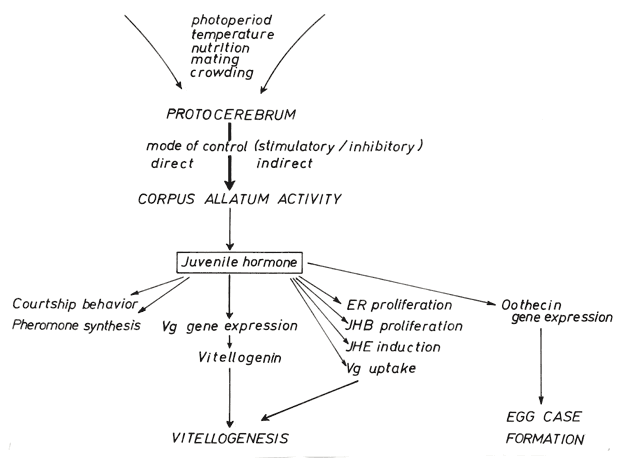
Selected Publications
Engelmann, F and Mala, J., "The cockroach Leucophaea maderae needs more than juvenile hormone, vitellogenin and reserves to make a yolky egg", J. Insect Physiology, 51 : 465-472 (2005) .
Engelmann, F, "Juvenile hormone action in insect reproduction", Encyclopedia of Hormones, Academic Press, 51 : 536-539 (2003) .
Engelmann, F, "Ecdysteroids, juvenile hormone and vitellogenesis in the cockroach Leucophaea maderae", Journal of Insect Science, 2(20) : - (2002) .
Engelmann, F. and Mala, J., "The interactions between juvenile hormone, lipophorin, vitellogenin, and JH esterases in two cockroach species", Insect Biochem. Mol. Biol, 30 : 793-803 (2000) .
Engelmann, F, "Reproduction in insects", Ecological Entomology' Eds C.B. Huffaker and A.P. Gutierrez, 2nd Edition : 123-158 (1999) .
Don-Wheeler, G., and Engelmann, F, "The biosynthesis and processing of vitellogenin in the fat bodies of females and males of the cockroach Leucophaea maderae", Insect Biochem. Molec. Biol, 27 : 901-918 (1997) .
Engelmann, F., "The juvenile hormone receptor of the cockroach Leucophaea maderae", Insect Biochem. Molec. Biol, 25 : 721-726 (1995) .
Engelmann, F., "Invertebrates: Hormone-regulated gonadal activity", Perspectives in Comparative Endocrinology. Eds K.D. Davey, R.E. Peter and S.S. Tobe, National Research Council of Canada, 25 : 36-40 (1994) .
Don-Wheeler, G., and Engelmann, F., "The female-and male-produced vitellogenin of Leucophaea maderae", J. Insect Physiol, 37 : 869-882 (1991) .
Engelmann, F., "Hormonal control of Arthropod reproduction", , Wiley-Liss, 37 : 357-365 (1990) .
Joseph Cascarano
Professor Emeritus
email:
phone:
office:
Recent Courses
Research Interests
I'm concerned with mitochondrial growth, replication and disassembly which occurs in hepatocytes. I'm interested in the mechanisms and regulation of these processes; particularly how they contribute to qualitative modification of mitochondria.
Selected Publications

Donald Buth
Professor
email:
phone:
office:
Recent Courses
EE BIOL 130 - Principles of Systematic Biology
EE BIOL 181 - Parasitology
EE BIOL 251 - Seminar: Systematics
Research Interests
Phylogenetic systematics
Systematics and evolution of reptiles and cypriniform, gasterosteiform, and perciform fishes
Research and development of enzymatic technology and phylogenetic treatment of electrophoretic data
My research and that of my students deal with the systematics of lower vertebrates, especially fishes. These studies address problems of phylogenetic relationship at a variety of organizational levels; alpha (species limits and recognition), beta (interspecific relationships), and gamma (intraspecific relationships and population phenomena). To test hypotheses of relationship, multiple data bases are often employed. Given their information potential and cost of resolution, allozyme and morphometric/meristic data are most commonly used in my laboratory. Facilities for osteological and karyological work are also available. Cladistic analyses of these data are conducted using both PC and mainframe computers.
My current studies involve cypriniform, gasterosteiform, and perciform fishes. Planned and ongoing studies of my students involve cypriniform, scorpaeniform, perciform, and elasmobranch fishes. Most of these studies deal with the North American ichthyofauna.
Selected Publications
Buth, D.G., "[Review of] Invasive Asian Carps in North America by D.C. Chapman and M.H. Hoffs (eds.)", Quart. Rev. Biol, 87 : 398-399 (2012) .
Buth, D.G., "Should mitochondrial DNA sequences be used in phylogenetic studies?", Bull. So. Cal. Acad. Sci, 109 (2): 108-109 (2010) .
Chabot, C., D. Buth, C. Swift, J. Sim, T. Dowling, and L. Allen, "Introgression of mitochondrial DNA between Catostomus fumeiventris and Catostomus santaanae Cypriniformes: Catostomidae) in the Santa Clara drainage", Bull. So. Cal. Acad. Sci, 108 (2): 105- (2009) .
Buth, D.G., Sim, J., and Swift, C.C., "Genetic confirmation of hybridization between Catostomus fumeiventris and Catostomus santaanae (Cypriniformes: Catostomidae) in the
Santa Clara drainage", Bull. So. Cal. Acad. Sci, 107 : 121-122 (2008) .
Garcia, D., L. Resnikoff, D.G. Buth, and P. Frost, "Intestinal helminth parasites of the bay goby, Lepidogobius lepidus (Perciformes: Gobiidae), from Bodega Bay, CA, U.S.A", Comp. Parasitol, 71 : 86-87 (2004) .
Buth, D.G. Review of, "The Southern African Tortoise Book", by R.C. Boycott and O. Borquin. Herpetology, 31 (2): 2- (2001) .
Buth, D.G. Review of, "Turtles of Borneo and Peninsular Malaysia", by L.B. Liat and I. Das. Herpetology, 31 (1): 3- (2001) .
Lieb, C.S., D.G. Buth and M.M. Miyamoto, "Superoxide dismutase expression in the lizard genus Anolis: Systematic significance of a silenced gene", Biochem. Syst. Ecol, 27 : 201-211 (1999) .
Buth, D.G. and W.J. Rainboth, "Gene expression in the desert tortoise, Gopherus agassizi: tissue sources and buffer optima for the gene products of 73 loci", Biochem. Syst. Ecol, 27 : 185-200 (1999) .
Crother, B.I., D.G. Buth and M.R. Tennant, "The systematic value of creatine kinase expression in reptiles", Biochem. Syst. Ecol, 27 : 147-156 (1999) .

Clifford Brunk
Professor Emeritus
email: cbrunk@ucla.edu
phone:
office:
Recent Courses
Research Interests
Evolution of Ciliate Mitochondrial Genomes
The evolution of the mitochondrial genome has some very interesting features. Plant mitochonndrial genomes are among the largest genomes extending up to several hundred thousand base pairs (kp) in length. Most animal mitochondrial genomes are circular and only several thousand bp in lengths. Protists have a wide spectrum of mitochondrial genomes with many having circular DNA and some have linear DNA., The protist Reclinomonas americana has 97 genes while many animal mitochondrial genomes have only a dozen or so genes. The vast majority of mitochondrial genes are ribosomal proteins, proteins involved in electron transport or oxidative phosporylation, or are ribosomal RNA (rRNA) genes or transfer RNA (tRNA) genes.
The complete genomes of there ciliates, Tetrahymena thermophila, Tetrahymena pyriformis and Parmecium caudatum Each of these genomes are linear, about 50 kb and contain about 50 genes, with about 44 genes coding for proteins. In spite of the limited types of proteins found in mitochondrial genomes, only about half of the mitochondrial proteins can be identified with regard to their function. The sequence of theT. thermophila mitochondrial geneome was determined and analyzed in our laboratory. We are currently determining the mitochondrial genome sequences of additional ciliates for comparison and analysis of their evolutionary patterns. Of particular interest is the identification of function for mitochondrial genes currently unidentified. The general evolutionary processes that have lead to the dramatic divergence of ciliate mitochondrial proteins are of great interest and comparison of numerous ciliate mitochondrial genomes should shed light on these processes.
In comparing the Tetrahymena mitochondrial genomes we find that the terminal regions are virtually identical within the genome of each species. When these regions are compared between species they are diverging as would be expected. In T. thermophila the nad9 gene is tandemly repeated. These tandem copies are virtually identical and when compared with the tandem nad9 genes in the closely related species Tetrahymena malaccensis we see that the sequences are diverging between species. These duplicated regions are virtually identical within the mitochondrial genome of a species, but diverge between species. This is a clear example concerted evolution. The mechanisms underlying evolutionary process are of great interest. A comparison of additional ciliate mitochondrial genomes should shed light on these processes.
Organization of Tetrahymena thermophila Genome
The availability of complete genome sequences dramatically changes the types of biological questions that can be posed. Instead of focusing on a single gene or a small cluster of genes, the interactions of all of the genes in the genome can be studied. If all of the genes in the genome are available, questions of integrated activities can be approached. The data provided by genomic sequences transforms the study of biological systems from a data poor endeavor to a data rich enterprise with all of the advantages that entails. We are engaged in provides preliminary data sufficient to initiate a complete genome sequencing of the T. thermophila genome. The macronuclear genome of T. thermophila is naturally fragmented into relatively small automonously replicating pieces (ARP) ranging in size from 75 kb to about 1,500 kb. These T. thermophila ARPs can be separated by zero integrated field gel electrophoresis. This allows us to isolated individual ARPs and determine their DNA sequences. This allows us to examine a tiny portion of the T. thermophila genome in great detail. This provides a data set for examining the genomic organization of the T. thermophila genome.
Bacterial Identification Research
Monitoring the bacterial flora in coastal marine waters by conventional techniques has been difficult as most of the bacteria do not readily grow on culture plates and their morphologies are virtually identical in the microscope. Molecular techniques, particularly characterizing bacteria using polymerase chain reaction (PCR) amplification of their small subunit ribosomal RNA (SSU rRNA) genes, has dramatically improved the ability to identify bacteria from environmental samples. Identification of bacteria by PCR amplification is specific and very sensitive. However, it is exactly these properties of PCR amplification which make it difficult to determine the amount of each individual bacterial species in the population.
We have developed a protocol that will allow the determination of the amount of a specific bacterial species in a sample. This protocol is based on the co-amplification of a modified internal standard sequence along with SSU rRNA sequences in the sample. The internal standard sequences in the PCR product are identified by gel electrophoresis following restriction endonuclease digestion. The amount of a specific SSU rRNA sequence in the sample is calculated by knowing the ratio of SSU rRNA to internal standard sequence in the PCR product and the amount of internal standard sequence that was added to the original DNA sample. The protocol is very rapid and has the specificity and sensitivity of PCR amplification.
This protocol has been successfully applied in the laboratory and adapted for field application to be used as an alternative to the conventional culture plate assays for marine bacteria. A major advantage of this approach is a dramatic decrease in the time required to assay the marine bacteria from days to hours. This assay also significantly increases the spectrum of bacterial species that can be detected, virtually any bacteria can be monitored by this protocol. Thus, the assay can be used to determine the source of bacterial contamination by matching unique bacterial sequences from various potential pollution sources with the sequences present in the sample.
Selected Publications
Brunk, C.F., Li, J. and Avaniss-Aghajani. E., "Molecular Approaches to Evaluation of Environmental Microbial Composition", In: In Recent Research Developments in Microbiology, Kerala, India 7 : 147-159 (2003) .
Brunk, C.F., Lee, L.C., Tran, A.B. and Li, J., "Complete Sequence of hte Mitochondrial Genome of Tetrahymena therlnophila and Comparative Methods for Identifying Highly Divergent Genes", Nuc. Acids Res, 31 : 1673-1682 (2003) .
Brunk, C.F., Li, J. and Avaniss-Aghajani, E., "Analysis of Specific Bacteria from Environmental Samples using a Quantitative Polymerase Chanin Recation", Current Issues in Molecular Biology, 4 : 13-18 (2002) .
Fogel, G.B., Collins, C.R., Li, J. and Brunk, C.F.,, "Prokaryotic Genome Size and SSU rDNA Copy Number: Estimation of Microbial Relative Abundance from a Mixed Population", Microbial Ecology, 38 : 93-113 (1999) .
Brunk, C.F.,, "Cilate Display Promise for Foreign Gene Expression", Nature Biotechnology, 17 : 424-425 (1999) .
Brunk, C.F. and Eis, N., "Quantitative Measure of Small-Subunit rRNA Gene Sequences of the Kingdom Korarchaeota", Applied and Environmental Microbiology, 64 : 5064-5066 (1998) .
Fogel, G.B. and Brunk, C.F, "Temperature Gradient Chamber for Relative Growth Rate Analysis of Yeast", Analytical Biochemistry, 260 : 80-84 (1998) .
Brunk, C., "Evolution of Hydrothermal Ecosystems onn Earth (and Mars?)", Palaeogeography, Palaeoclimatology, Palaeoecology, 138 : 325-328 (1998) .
Boian, M., Avaniss-Aghajani, E., Walker, R., Aronson, T., Tran, T., Glover, N., Berlin, O.G., Woods, L., Brunk, C., Li, J-L., Froman, S. and Holtzman, A., "Identification of Mycobacteriurn genavense in intestinal tissue from a parakeet using two poloymrase chain reaction methods: are pets a reservoir of infection in AIDS patients?", AIDS (London), 11 : 255-256 (1997) .
Brunk, C.F., Avaniss-Aghajani, E. and Brunk, C.A., "A computer Analysis of Primer and Probe Hybridization Potential with Bacterial Small-Subunit rRNA Sequences", sApplied and Environmental Microbiology, 62 : 872-879 (1996) .
Christy Brigham
Assistant Adjunct Professor
email: Christy_Brigham@nps.gov
phone:
office: 621 Charles E. Young Drive South
Recent Courses
Research Interests
Selected Publications
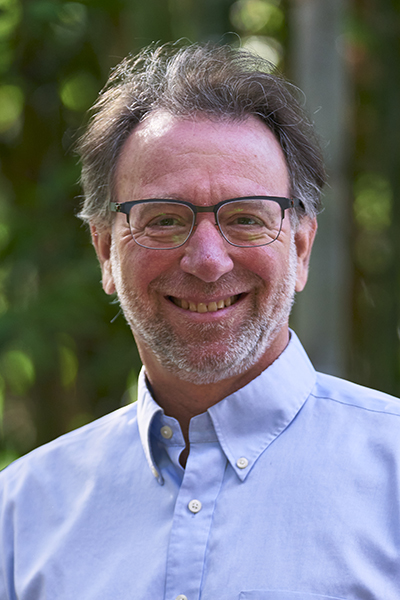
Daniel Blumstein
Professor
email: marmots@ucla.edu
phone: 310-267-4746
office: 4808 Life Sciences Building (LSB)
website
Recent Courses
EE BIOL 124 - Field Ecology
EE BIOL 126 - Behavioral Ecology
EE BIOL 193 - Journal Club Seminars: Ecology and Evolutionary Biology
Research Interests
Broadly, I am interested in the evolution of social and antipredator behavior and the ramifications mechanisms of behavior have for higher level ecological processes and for wildlife conservation. I have spent over a decade studying the evolution of complex communication and sociality and used the 14 species of marmots (Marmota-cat-sized sciurid rodents found throughout the northern hemisphere) as a model system.
Much of my marmot work now focuses on the yellow-bellied marmots of the Rocky Mountain Biological Laboratory (www.rmbl.org) which have been studied continuously since 1962.
A main theme in my research is integrating knowledge of animal behavior into conservation biology. Ultimately, I aim to illustrate, through examples, how knowledge of behavior should influence policy.
In addition to my more theoretical work, I've been actively engaged in using ecotourism as a form of community development and as a way to conserve natural resources. My theoretical research interests are particularly relevant to the applied work because ecotourism can adversely impact wildlife. Ultimately, it is the wildlife's perception of human impacts that matters.
Selected Publications
Putman, B.J., Drury, J.P., Blumstein, D.T., and G.B. Pauly., "Fear no colors? Observer clothing influences lizard escape behavior", PLoS One, 12 (8): e0182146- (2017) .
Blumstein, D.T., "Surviving in a post-truth world", Project Syndicate, 12 (8): - (2017) [link].
Blumstein, D., Geffroy, B., Samia, D., and Bessa, E., "The biological toll of ecotourism. Ecotourism?biological benefit or bane?", The Scientist, 12 (8): - (2017) .
Reed-Guy, S. Gehris, C., Shi, M., and D.T. Blumstein, "Sensitive plant hiding time depends on individual and state", PeerJ, 5 : e3598- (2017) .
West, R., Letnic, M., Blumstein, D.T., and K.E. Moseby, "Predator exposure improves anti-predator responses in a threatened mammal", Journal of Applied Ecology, 5 : - (2017) [link].
Smith, J.E., Petelle, M.B., Jerome, E.L., Cristofari, H., and D.T. Blumstein, "Oxytocin experiments shed light on mechanisms shaping prosocial and antisocial behaviors in non-human mammals", Integrative and Comparative Biology, 5 : - (2017) [link].
Samia, D.S.M., Blumstein, D.T., Diaz, M., Grim, T., Ibanez-Alamo, J.D. Jokimaki, J. Tatte, K., Marko, G. Tryjanowski, P., and A.P. Moller, "Rural-urban differences in escape behavior of European birds across a latitudinal gradient", Frontiers in Ecology and Evolution, 5 : Article 66- (2017) .
Snijders, L., Blumstein, D.T., Stanley, C.R., and D.W. Franks, "Animal social network theory can help wildlife conservation", Trends in Ecology and Evolution, 32 : 567-577 (2017) .
Blumstein, D.T., "Groundhog Day is so silly. But as a groundhog scientist, I love it anyway", Washington Post, 32 : - (2017) [link].
Blumstein, D.T., "Skiing for science", Science, 356 : 214- (2017) .
Priyanga Amarasekare
Professor
email:
phone: Professor Amarasekare is on leave.
office:
Recent Courses
EE BIOL 122 - Ecology
EE BIOL 194B - Research Group or Internship Seminars: Ecology and Evolutionary Biology
EE BIOL 200B - Ecology
Research Interests
My research focuses on how the interplay between abiotic environmental variation and biotic interactions influences ecological and evolutionary dynamics. It seeks to explain patterns of dynamics and diversity that are observed in nature, and to predict how such patterns may change under perturbations to the abiotic and biotic environment. I use a combination of field observations, manipulative experiments and mathematical models. The distinctive features of my work are the strong mechanistic focus and the tight integration between theory and data. My work is also broad, spanning investigations of the interplay between biotic interactions and temporal variation on the one hand, with temperature as the axis of abiotic variation, and biotic interactions and spatial variation on the other, with dispersal as a mechanism for sampling spatial heterogeneity.
Selected Publications
Smith, D.J. and P. Amarasekare (Authors contributed equally), "Towards a mechanistic understanding of thermal niche partitioning", The American Naturalist, 191 : 57-75 (2018) .
Okamoto, K., and P. Amarasekare., "A framework for highthroughput ecoevolutionary simulations integrating multilocus forwardtime population genetics and community ecology", Methods in Ecology and Evolution, 9 : 525-534 (2018) .
Uszko, W., S. Diehl, G. Englund and P. Amarasekare., "Effects of warming on predator-prey interactions - a resource-based approach and a theoretical synthesis", Ecology Letters, 20 : 513-523 (2017) .
Scranton, K., and P. Amarasekare (Authors contributed equally), "Predicting phenological shifts in a changing climate", Proceedings of the National Academy of Sciences, 114 : 13212-13217 (2017) .
Amarasekare, P., "The evolution of dispersal in a multi-trophic community context", Oikos, 125 : 514-525 (2016) .
Johnson, C., R. Coutinho, E. Berlin, K. Dolphin, J. Heyer, B. Kim, A. Leung, J. Sabellon and P. Amarasekare., "Effects of temperature and resource variation on insect population dynamics: the bordered plant bug as a case study", Functional Ecology, 30 : 1122-1131 (2016) .
Amarasekare, P., "Effects of temperature on consumer-resource interactions", Journal of Animal Ecology, 84 : 665-679 (2015) .
Borrelli, J., S. Allesina, P. Amarasekare, R. Arditi, I. Chase, J. Damuth, R. D. Holt, D. O. Logofet, M. Novak, R. P. Rohr, A. G. Rossberg, M. Spencer, J. K. Tran, and L. R. Ginzburg, "Selection on stability across ecological scales", Trends in Ecology and Evolution, 30 : 417-425 (2015) .
Okamoto, K., B. Langerhans, R. Rashid and P. Amarasekare., "Microevolutionary patterns in the common caiman predict macroevolutionary trends across extant crocodilians", Biological Journal of the Linnean Society, 116 : 834-846 (2015) .
Johnson, C.J. and Amarasekare, P. (Authors contributed equally), "A metric for quantifying the oscillatory tendency of consumer-resource interactions", The American Naturalist, 185 : 87-99 (2015) .

Michael Alfaro
Professor and Chair
email: michaelalfaro@ucla.edu
phone:
office: 2149 Terasaki Life Sciences Building (TLSB)
Recent Courses
E&S SCI M216 | EE BIOL M200A - Evolutionary Biology
EE BIOL 194B - Research Group or Internship Seminars: Ecology and Evolutionary Biology
EE BIOL C177 | EE BIOL C234 - Practical Computing for Evolutionary Biologists and Ecologists
Research Interests
The central goal of my research program is to understand the factors that govern the evolutionary dynamics of organismal diversification. How can we explain the uneven patterns of species richness and morphological diversity across the Tree of Life? Where is macroevolutionary theory adequate to explain diversity patterns and where must new models and methods be developed? Does morphological diversity always signal mechanical, functional, or ecological diversity? To address these questions, I work on two main systems: coral reef fishes and neotropical primates. My research approach is interdisciplinary and quantitative and crosses traditional boundaries among molecular phylogenetics, evolutionary morphology, and theoretical evolution. I construct evolutionary trees using phylogenomic approaches, test evolutionary hypotheses using phylogenetic statis- tical methods; use models of trait evolution to explore form-function dynamics identify and quantify organismal diversity using morphological and functional morphological techniques
Selected Publications
C. Darrin Hulsey, Jimmy Zheng, Roi Holzman, Michael E. Alfaro, Melisa Olave and Axel Meyer, "Phylogenomics of a putatively convergent novelty: did hypertrophied lips evolve once or repeatedly in Lake Malawi cichlid fishes?", BMC Evolutionary Biology, 18 : - (2018) [link].
Peter C Wainwright, Francesco Santini, David R Bellwood, D Ross Robertson, Luiz A Rocha, Michael E Alfaro, "Phylogenetics and geography of speciation in New World Halichoeres wrasses", Molecular Phylogenetics and Evolution, 121 : 35-45 (2018) [link].
Max R Tolkoff Michael E Alfaro Guy Baele Philippe Lemey Marc A Suchard, "Phylogenetic factor analysis", Systematic Biology, 67 (3): 384-399 (2018) [link].
Alfaro, ME, "[PDF] from pnas.org
UC-eLinks
Resolving the ray-finned fish tree of life", PNAS, 115 (24): 6107-6109 (2018) .
Lima MGM, Silva-Junior JSE, Cerny D, Buckner JC, Aleixo A, Chang J, Zheng J, Alfaro ME, Martins A, Di Fiore A, Boubli JP, Lynch Alfaro JW, "A phylogenomic perspective on the robust capuchin monkey (Sapajus) radiation: First evidence for extensive population admixture across South America", Mol Phylogenet Evol, 115 (24): 137-150 (2018) [link].
Rabosky, D.L.
Chang, J.
Title, P.O.
Cowman, P.F.
Sallan, L.
Friedman, M.
Kaschner, K.
Garilao, C.
Near, T.J.
Coll, M.
Alfaro, M.E., "An inverse latitudinal gradient in speciation rate for marine fishes", Nature, 559 : 392-395 (2018) [link].
Gilbert, Princess S; Wu, Jing; Simon, Margaret W; Sinsheimer, Janet S; Alfaro, Michael E, "Filtering nucleotide sites by phylogenetic signal to noise ratio increases confidence in the Neoaves phylogeny generated from ultraconserved elements", Mol. Phylogenet. Evol, 126 : 116-128 (2018) [link].
Prosanta Chakrabarty, Brant C Faircloth, Fernando Alda, William B Ludt, Caleb D Mcmahan, Thomas J Near, Alex Dornburg, James S Albert, Jairo Arroyave, Melanie LJ Stiassny, Laurie Sorenson, Michael E Alfaro, "Phylogenomic Systematics of Ostariophysan Fishes: Ultraconserved Elements Support the Surprising Non-Monophyly of Characiformes", Systematic Biology, 66 : 881-895 (2017) [link].
Luz E Ochoa, Fabio F Roxo, Carlos DoNascimiento, Mark H Sabaj, Alessio Datovo, Michael Alfaro, Claudio Oliveira, "Multilocus analysis of the catfish family Trichomycteridae (Teleostei: Ostariophysi: Siluriformes) supporting a monophyletic Trichomycterinae", Molecular Phylogenetics and Evolution, 115 : 71-81 (2017) [link].
CD Hulsey, J Zheng, BC Faircloth, A Meyer, ME Alfaro, "Phylogenomic analysis of Lake Malawi cichlid fishes: further evidence that the three-stage model of diversification does not fit", Molecular Phylogenetics and Evolution, 114 : 40-48 (2017) [link].
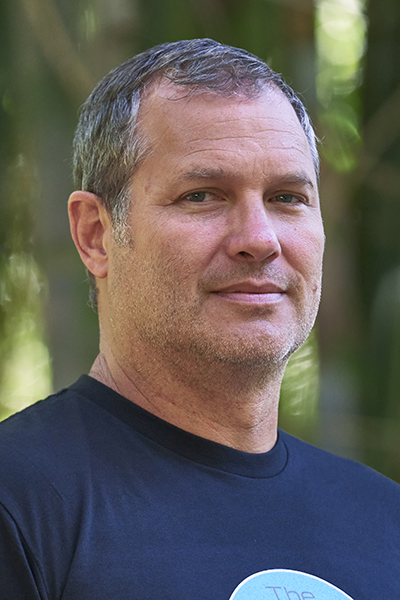
Paul Barber
Professor
email: paulbarber@ucla.edu
phone: (310) 794-5349
office: 2145 Terasaki Life Sciences Building (TLSB)
website
Recent Courses
EE BIOL 109 - Introduction to Marine Science
EE BIOL 97X - PEERS Forum: Pathways in Science
EE BIOL 97X - PEERS Forum: Pathways in Science
Research Interests
Our laboratory integrates genetics, ecology, oceanography and geology to understand the processes that promote speciation in marine environments, creating marine biodiversity hotspots. For the past decade, we have focused on the fish and invertebrates of the coral reefs of the Coral Triangle, the global epicenter of marine biodiversity. Through a comparative approach, we are examining the relative importance of tectonic history, physical oceanography, and organismal ecologies in limiting genetic connectivity and promoting evolution and lineage diversification. Our recent work focuses on integrating empirical models of connectivity with predictions from geographically explicit models of contemporary and historical ocean currents. We work closely with conservation organizations such as Conservation International to translate our basic science into information that can help guide conservation planning, protecting these endangered reef ecosystems. We are also interested in the role of natural selection and adaptation in shaping population genetic patterns, particularly the role of the genetic basis of energetic performance of mitochondrial in size selective mortality of marine larvae.
Selected Publications
Liu, S.Y.V., Frederich, B. , Lavoue, S., Chang, J., Erdmann, M.V., Mahardika, G.N., Barber, P.H., "Buccal venom gland associates with increased of diversification rate in the fang blenny fish Meiacanthus (Blenniidae; Teleostei)", Molecular Phylogenetics and Evolution, 125 : 138-146 (2018) .
Fong, C.R., Chancellor, K.S., Renzi, J.J., De'Marcus, R.R., Barber, P.H., Habtes, S.Y., Fong, P., "Epibionts on Turbinaria ornata, a secondary foundational macroalga on coral reefs, provide diverse trophic support to fishes", Marine Environmental Research, 125 : - (2018) [link].
Keyse, J., Treml, E.A., Huelsken, T., Barber, P.H., DeBoer, T., Kochzius, M., Nuryanto, A., Gardner, J.P.A., Liu, L.L., Penny, S., Riginos, C., "Historical divergences associated with intermittent land bridges overshadow isolation by larval dispersal in co?distributed species of Tridacna giant clams", Journal of Biogeography, 45 : 848-858 (2018) [link].
Pertiwi, N.I.P.D., , Nugraha, B., Sulistyanigsigh, R.K., Jatmiko, I., Sembiring, A., Mahardidni, A., Cahyani, N.K.D., Anggoro. A.W., Madduppa, H.H., Barber, P.H., Mahardika, G.N., "Lack of differentiation within the bigeye tuna population of Indonesia", BioIdiversitas Journal of Biological Diversity, 18 : 1406-1413 (2017) .
Willette, D.A., Simmonds, S.E., Cheng, S.H., Esteves, S., Kane, T.L., Nuetzel, H., Pilaud, N., Rachmawati, R. and Barber, P.H., "Using DNA barcoding to track seafood mislabeling in Los Angeles restaurants", Conservation Biology, 31 (5): 1076-1085 (2017) [link].
Leasi, F., Gaynus, C., Mahardini, A., Moore, T.N., Norenburg, J.L. and Barber, P.H., "Spatial and ecologic distribution of neglected microinvertebrate communities across endangered ecosystems: meiofauna in Bali (Indonesia)", Marine Ecology, 37 (5): 970-987 (2016) [link].
Aguilar-Medrano, R. and P.H. Barber, "Ecomorphological diversification in reef fish of the genus
Abudefduf (Percifomes, Pomacentridae)", Zoomorphology, 37 (5): - (2015) [link].
Willette, DA, Iniguez, AR, Kupriyanova, EK, Starger, CJ, Varman, T, Toha, AH, Maralit, BA, Barber, PH, "Christmas tree worms of Indo-Pacific coral reefs: untangling the Spirobranchus corniculatus (Grube, 1862) complex", Zoomorphology, Coral Reefs 34 (3): 899-904 (2015) .
Toven-Lindsey, B., Levis-Fitzgerald, M., Barber, P.H., Hasson, T., "Increasing Persistence in Undergraduate Science Majors: A Model for Institutional Support of Underrepresented Students", CBE-Life Sciences Education, 14 (2): ar12- (2015) .
Faurby, S. & P.H. Barber, "Extreme population subdivision despite high colonization ability: Contrasting regional patterns in intertidal tardigrades from the west coast of North America", Journal of Biogeography, 42 : 1006-1017 (2015) .
